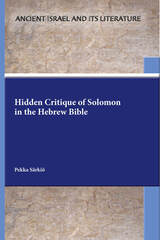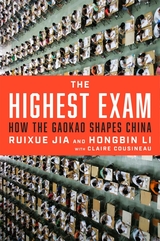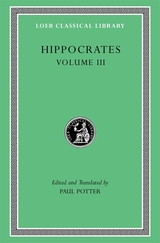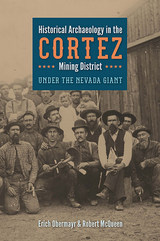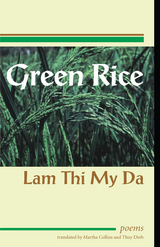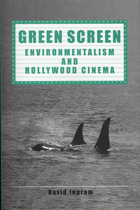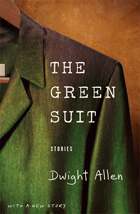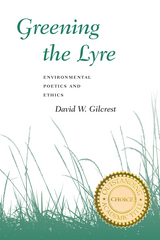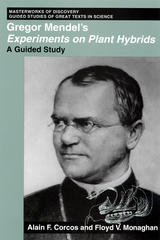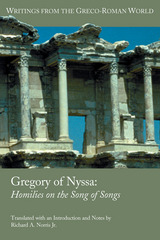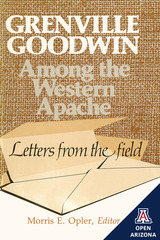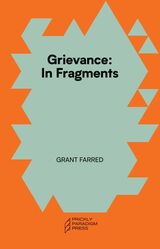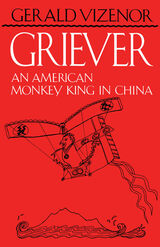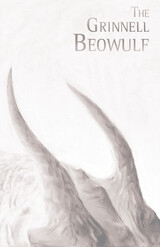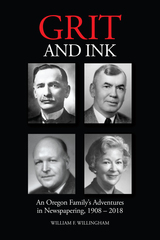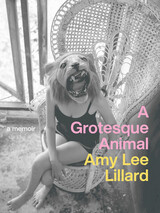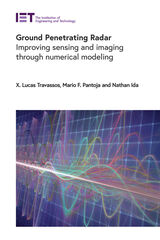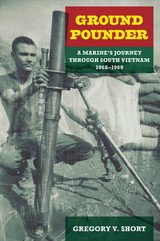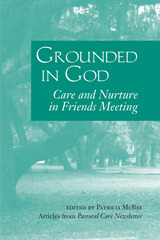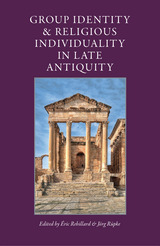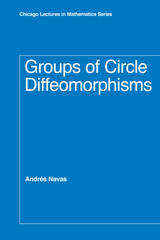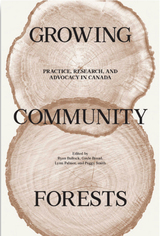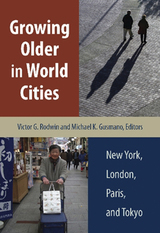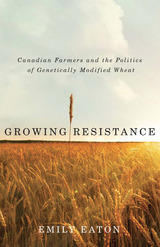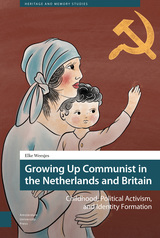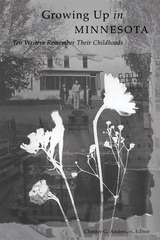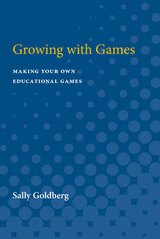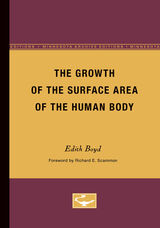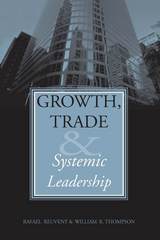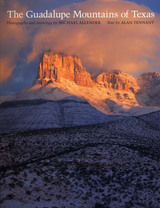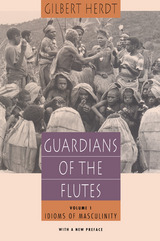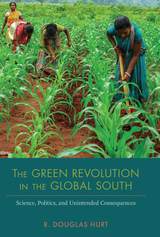 The Green Revolution in the Global South: Science, Politics, and Unintended Consequences
R. Douglas Hurt
University of Alabama Press, 2020 A synthesis of the agricultural history of the Green Revolution
The Green Revolution was devised to increase agricultural production worldwide, particularly in the developing world. Agriculturalists employed anhydrous ammonia and other fertilizing agents, mechanical tilling, hybridized seeds, pesticides, herbicides, and a multitude of other techniques to increase yields and feed a mushrooming human population that would otherwise suffer starvation as the world’s food supply dwindled.
In The Green Revolution in the Global South: Science, Politics, and Unintended Consequences, R. Douglas Hurt demonstrates that the Green Revolution did not turn out as neatly as scientists predicted. When its methods and products were imported to places like Indonesia and Nigeria, or even replicated indigenously, the result was a tumultuous impact on a society’s functioning. A range of factors—including cultural practices, ethnic and religious barriers, cost and availability of new technologies, climate, rainfall and aridity, soil quality, the scale of landholdings, political policies and opportunism, the rise of industrial farms, civil unrest, indigenous diseases, and corruption—entered into the Green Revolution calculus, producing a series of unintended consequences that varied from place to place. As the Green Revolution played out over time, these consequences rippled throughout societies, affecting environments, economies, political structures, and countless human lives.
Analyzing change over time, almost decade by decade, Hurt shows that the Green Revolution was driven by the state as well as science. Rather than acknowledge the vast problems with the Green Revolution or explore other models, Hurt argues, scientists and political leaders doubled down and repeated the same missteps in the name of humanity and food security. In tracing the permutations of modern science’s impact on international agricultural systems, Hurt documents how, beyond increasing yields, the Green Revolution affected social orders, politics, and lifestyles in every place its methods were applied—usually far more than once.
Green Rice: Poems by Lam Thi My Da
Lam Thi My Da
Northwestern University Press, 2005 When Washington Post columnist Edward Hirsch reprinted Lâm Thị Mỹ Dạ's "Garden Fragrance" and "Night Harvest" (from Six Vietnamese Poets), he gave special praise to the simultaneous clarity and complexity of Dạ's poetry. Now, for the first time in English, readers can enjoy a full, bilingual volume of her selected work. While many of her poems deal with her experiences during the Vietnam War, they are grounded in her intimate involvement with the landscape, flora, and fauna of her country, and explore love, motherhood, women's issues, and the sometimes difficult movement into middle age.
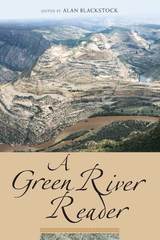 A Green River Reader
Alan Blackstock
University of Utah Press, 2005 "There is something ominous about a swift river, and something thrilling about a river of any kind."—from Beyond the Hundredth Meridian by Wallace Stegner Beginning above Flaming Gorge Dam in southwestern Wyoming, the Green River traverses the complete variety of terrain on the Colorado Plateau before joining the Colorado River above Cataract Canyon in southeastern Utah. Like its more famous cousin, the Colorado, the Green has captivated, capsized, and cajoled all types of characters with challenges and beauty to match its geologic variety. In A Green River Reader editor Alan Blackstock brings this mysterious, magnificent, thrilling river to the reader with an interpretive guide that will inform both river novices and river veterans. Assembled here is every significant written testament to this "awesome ditch," from Domínguez-Escalante to Kit Carson and John C. Frémont; to contemporary American naturalists and writers including Wallace Stegner, Bernard DeVoto, David Brower, Ann Zwinger, Ellen Melloy, and Edward Abbey. Those with a story to tell—those who trapped the Green’s beavers, endured its wild rapids, were humbled by its imposing canyon walls, fought for its beautiful landscapes, or whose "pulse was hurried" by the "lofty chasms, walled in by precipices of red rock"—are collected here. If you’re headed down the Green, make sure that your dry bag or ammo can has room for just one more thing, your copy of A Green River Reader.
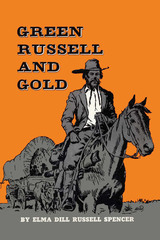 Green Russell and Gold
By Elma Dill Russell Spencer
University of Texas Press, 1966 The family history of the Russells of Georgia is a saga of the Westward Movement during the middle fifty years of the nineteenth century. The "Russell boys," as prospectors and miners, moved with the frontier as it followed fresh discoveries of gold, from Georgia to California to Colorado. Then, after the interlude of the Civil War, they settled in the new territories, turning their abilities and ruggedness of character to the development of careers on other frontiers—ranching, farming, land development, medicine—in Montana, Colorado, and Texas. Elma Dill Russell Spencer, a descendant of one of these unusual brothers, relates their story as she learned it from family tradition transmitted by Grandma Russell, from family letters, from public documents, and from historical accounts of the exciting era. The reader of her narrative sees the evolution of Western society in the vast wasteland of mountain and prairie from the viewpoint of the people who were making history, people too engrossed in their own problems to realize the far-reaching significance of their achievement. The reader sees the struggle to wrest gold from the streams and hills with primitive tools and techniques; the development of tent villages into populous towns affording most of the comforts of the East; the evolution of a code of mining laws, of protection from violence and crime; the building of schools; the emergence of sectional problems and divided loyalties; the Civil War, mostly through noncombatants' eyes; the progressive changes in transportation, until the railroads tied the West to the East. The reader also encounters Indians, who ride in and out of these pages, and other fascinating types of characters associated with "the wild, varied, and always unpredictable" frontier. The odyssey of the Russell brothers as they struggle home to Georgia from Union-sympathizing Denver is particularly full of action, with tense moments in the account of narrowly escaped death—at the hands of Indians, through the ravages of disease, and from the enmity of Yankee foes. This book was originally published as Gold Country in 1958; the University of Texas Press edition was completely revised and first published in 1966.
Green Screen: Environmentalism and Hollywood Cinema
David Ingram
University of Exeter Press, 2000
This book combines film studies with environmental history and politics, aiming to establish a cultural criticism informed by 'green' thought. David Ingram argues that Hollywood cinema has largely perpetuated romantic attitudes to nature and has played an important ideological role in the'greenwashing' of ecological discourses.
The book accounts for the rise of environmental concerns in Hollywood cinema and explores the ways in which attitudes to nature and the environment are constructed in a number of movies. It is divided into three sections: Wilderness in Hollywood Cinema, Wild Animals in Hollywood Cinema, and Development and the Politics of Land Use.
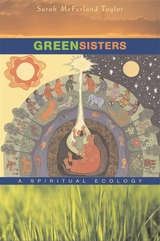 Green Sisters: A Spiritual Ecology
Sarah McFarland Taylor
Harvard University Press, 2009 It is perhaps the critical issue of our time: How can we, as human beings, find ethical and sustainable ways to live with one another and with other living beings on this planet? Inviting us into the world of “green sisters,” this book provides compelling answers from a variety of religious communities.
Green sisters are environmentally active Catholic nuns who are working to heal the earth as they cultivate new forms of religious culture. Sarah McFarland Taylor approaches this world as an “intimate outsider.” Neither Roman Catholic nor member of a religious order, she is a scholar well versed in both ethnography and American religious history who has also spent time shucking garlic and digging vegetable beds with the sisters. With her we encounter sisters in North America who are sod-busting the manicured lawns around their motherhouses to create community-supported organic gardens; building alternative housing structures and hermitages from renewable materials; adopting the “green” technology of composting toilets, solar panels, fluorescent lighting, and hybrid vehicles; and turning their community properties into land trusts with wildlife sanctuaries.
Green Sisters gives us a firsthand understanding of the practice and experience of women whose lives bring together Catholicism and ecology, orthodoxy and activism, traditional theology and a passionate mission to save the planet. As green sisters explore ways of living a meaningful religious life in the face of increased cultural diversity and ecological crisis, their story offers hope for the future—and for a deeper understanding of the connections between women, religion, ecology, and culture.
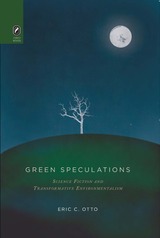 Green Speculations: Science Fiction and Transformative Environmentalism
Eric C. Otto
Ohio State University Press, 2012 Science fiction goes green? Eric C. Otto explores literary science fiction’s engagement with a central concern of our times: ecological degradation. Situated at the intersection of science fiction studies and environmental philosophy, Green Speculations: Science Fiction and Transformative Environmentalism highlights key works of environmental science fiction that critique various human values for their roles in instigating such degradation.
The books receiving ecocritical treatment in Green Speculations include George R. Stewart’s Earth Abides (1949), Frank Herbert’s Dune (1965), Ursula K. Le Guin’s The Word for World Is Forest (1972), Joan Slonczewski’s A Door into Ocean (1986), Kim Stanley Robinson’s Mars trilogy (1993, 1994, 1996), and Paolo Bacigalupi’s The Windup Girl (2009). Otto reads these and other important science fiction novels as educative in their representations of environmental issues and the environmental philosophies that have emerged in response to them.
Green Speculations demonstrates how environmental science fiction can be read not only as reflecting the ideas of environmental philosophies such as deep ecology, ecofeminism, and ecosocialism, but also as instrumental in thinking through the tenets of these philosophies. As such, the book places science fiction at the center of environmentalism and considers the genre to be an essential tool for prompting needed social and cultural transformation.
The Green Suit: Stories
Dwight Allen
University of Wisconsin Press, 2011
This edition of Dwight Allen’s acclaimed story collection, The Green Suit, ends with a new story, rounding out a dozen interlinked tales about a well-to-do Kentucky family called the Sackriders. The stories cover a period of forty years, from the Vietnam War to the Age of Foreclosure. Chief among the Sackriders is Peter, son of a judge and a vitamin-pill-popping mother, brother to a sister whose troubles with boys take her far from Kentucky. He is a writer perhaps more in love with women (and, intermittently, men) than he is with words, whose eagerness to be loved leads him into alarming circumstances. He is a man with a yearning for transcendence and a penchant for betrayal.
The new story finds Sackrider in his mid-fifties, married for a second time, the father of a small child, and all tangled up with his next-door neighbor, an artist who likes to use the corpses of animals in his collages.
Green Travel Guide to Northern Wisconsin: Environmentally and Socially Responsible Travel
Pat Dillon
University of Wisconsin Press, 2011 Green Travel Guide to Northern Wisconsin showcases the best green restaurants, lodgings, shops, and activities in Wisconsin’s Northland. Learn about exploring the cliffs and caves of the Niagara Escarpment while biking the Door Peninsula. Carpool to the Midwest Renewable Energy Fair in Custer where you can stay at a nearby solar-powered inn. Take an all day eco-geo-history tour of the north woods near Hayward, explore the Chequamegon-Nicolet Forest, kayak the Mississippi River backwaters, and much more.
Green Travel Guide to Southern Wisconsin: Environmentally and Socially Responsible Travel
Pat Dillon
University of Wisconsin Press, 2010 Green Travel Guide to Southern Wisconsin surveys the best green restaurants, lodgings, shops, and activities southern Wisconsin has to offer. Dine at independent, locally owned eateries that serve up delicious fare grown and raised by farmers right down the road. Overnight at peaceful inns that sponsor workshops on topics ranging from cheesemaking to sustainability. Scour markets that sell locally foraged mushrooms, berries, and syrups as well as arts and crafts created by local artisans. Bicycle through southern Wisconsin, stopping at small-scale farms where travelers are not only welcome but encouraged to visit.
Honorable Mention, Foreword Magazine’s Travel Guidebook of the Year
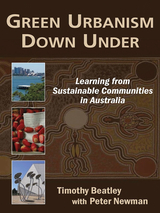 Green Urbanism Down Under: Learning from Sustainable Communities in Australia
Timothy Beatley with Peter Newman
Island Press, 2008 In this immensely practical book, Timothy Beatley sets out to answer a simple question: what can Americans learn from Australians about “greening” city life? Green Urbanism Down Under reports on the current state of “sustainability practice” in Australia and the many lessons that U.S. residents can learn from
the best Australian programs and initiatives.
Australia is similar to the United States in many ways, especially in its “energy footprint.” For example, Australia’s per capita greenhouse gas emissions are second only to those of the United States. A similar percentage of its residents live in cities (85 percent in Australia vs. 80 percent in the United States). And it suffers from parallel problems of air and water pollution, a national dependence on automobiles, and high fossil fuel consumption. Still, after traveling throughout Australia, Beatley finds that there are myriad creative responses to these problems—and that they offer instructive examples for the United States.
Green Urbanism Down Under is a very readable collection of solutions.
Although many of these innovative solutions are little-known outside Australia, they all present practical possibilities for U.S. cities. Beatley describes “green transport” projects, “city farms,” renewable energy plans, green living programs, and much more. He considers a host of public policy initiatives and scrutinizes regional and state planning efforts for answers. In closing, he shares his impressions about how Australian results might be applied to U.S. problems.
This is a unique book: hopeful, constructive, and filled with ideas that have been proven to work. It is a “must read” for anyone who cares about the future of American cities.
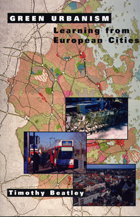 Green Urbanism: Learning From European Cities
Timothy Beatley
Island Press, 2000 As the need to confront unplanned growth increases, planners, policymakers, and citizens are scrambling for practical tools and examples of successful and workable approaches. Growth management initiatives are underway in the U.S. at all levels, but many American "success stories" provide only one piece of the puzzle. To find examples of a holistic approach to dealing with sprawl, one must turn to models outside of the United States. In Green Urbanism, Timothy Beatley explains what planners and local officials in the United States can learn from the sustainable city movement in Europe. The book draws from the extensive European experience, examining the progress and policies of twenty-five of the most innovative cities in eleven European countries, which Beatley researched and observed in depth during a year-long stay in the Netherlands. Chapters examine: - the sustainable cities movement in Europe
- examples and ideas of different housing and living options
- transit systems and policies for promoting transit use, increasing bicycle use, and minimizing the role of the automobile
- creative ways of incorporating greenness into cities
- ways of readjusting "urban metabolism" so that waste flows become circular
- programs to promote more sustainable forms of economic development
- sustainable building and sustainable design measures and features
- renewable energy initiatives and local efforts to promote solar energy
- ways of greening the many decisions of local government including ecological budgeting, green accounting, and other city management tools.
Throughout, Beatley focuses on the key lessons from these cities -- including Vienna, Helsinki, Copenhagen, Stockholm, Zurich, Amsterdam, London, and Berlin -- and what their experience can teach us about effectively and creatively promoting sustainable development in the United States. Green Urbanism is the first full-length book to describe urban sustainability in European cities, and provides concrete examples and detailed discussions of innovative and practical sustainable planning ideas. It will be a useful reference and source of ideas for urban and regional planners, state and local officials, policymakers, students of planning and geography, and anyone concerned with how cities can become more livable.
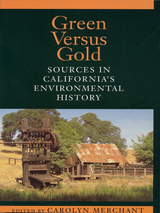 Green Versus Gold: Sources In California's Environmental History
Edited by Carolyn Merchant
Island Press, 1998 While the state of California remains one of the most striking and varied landscapes in the world, it has experienced monumental changes since European settlers first set foot there. The past two centuries have witnessed an ongoing struggle between environment and economy, nature and humanity that has left an indelible mark on the region. Green Versus Gold provides a compelling look at California's environmental history from its Native American past to conflicts and movements of recent decades. Acclaimed environmental historian Carolyn Merchant has brought together a vast storehouse of primary sources and interpretive essays to create a comprehensive picture of the history of ecological and human interactions in one of the nation's most diverse and resource-rich states. For each chapter, Merchant has selected original documents that give readers an eyewitness account of specific environments and periods, along with essays from leading historians, geographers, scientists, and other experts that provide context and analysis for the documents. In addition, she presents a list of further readings of both primary and secondary sources. Among other topics, chapters examine: California's natural environment and Native American lands the Spanish and Russian frontiers environmental impacts of the gold rush the transformation of forests and rangelands agriculture and irrigation cities and urban issues the rise of environmental science and contemporary environmental movement. Merchant's informed and well-chosen selections present a unique view of decades of environmental change and controversy. Historians, educators, environmentalists, writers, students, scientists, policy makers, and others will find the book an enlightening and important contribution to the debate over our nation's environmental history.
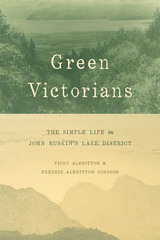 Green Victorians: The Simple Life in John Ruskin's Lake District
Vicky Albritton and Fredrik Albritton Jonsson
University of Chicago Press, 2016 From Henry David Thoreau to Bill McKibben, critics and philosophers have long sought to demonstrate how a sufficient life—one without constant, environmentally damaging growth—might still be rich and satisfying. Yet one crucial episode in the history of sufficiency has been largely forgotten. Green Victorians tells the story of a circle of men and women in the English Lake District who attempted to create a new kind of economy, turning their backs on Victorian consumer society in order to live a life dependent not on material abundance and social prestige but on artful simplicity and the bonds of community.
At the center of their social experiment was the charismatic art critic and political economist John Ruskin. Albritton and Albritton Jonsson show how Ruskin’s followers turned his theory into practice in a series of ambitious local projects ranging from hand spinning and woodworking to gardening, archaeology, and pedagogy. This is a lively yet unsettling story, for there was a dark side to Ruskin’s community as well—racist thinking, paternalism, and technophobia. Richly illustrated, Green Victorians breaks new ground, connecting the ideas and practices of Ruskin’s utopian community with the problems of ethical consumption then and now.
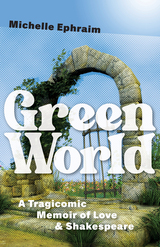 Green World: A Tragicomic Memoir of Love & Shakespeare
Michelle Ephraim
University of Massachusetts Press, 2024 Shortlisted for the Rubery Book Award
A 2025 IPPY Awards Silver Medal Winner in Autobiography/Memoir
Winner of the 2025 Friends of American Writers Adult Literature Award
A 2024 Foreword INDIES Finalist
A 2025 Sophie Brody Medal Notable Book
A Jewish Women's Archive Summer Book Club Pick
At twenty-three, Michelle Ephraim was failing at everything. The only child of reclusive Holocaust-survivor parents who were dismayed by her literary studies, she found herself dumped by her boyfriend and bombing out of graduate school. Then, one night, she crashed a Shakespeare recitation party. Loopy from vodka and never having read a single line of Shakespeare, she was transfixed. Shakespeare, she decided, was the lifeline she needed.
Green World is the hilarious and heartbreaking story of Ephraim’s quest to become a Shakespeare scholar and to find community and home. As she studies Shakespeare, Ephraim’s world uncannily begins to mirror the story of the Jewish daughter in The Merchant of Venice, and she finds herself in a Green World, an idyllic place where Shakespeare’s heroines escape their family trauma. Green World reckons with global, historical, and personal tragedy and shows how literature—comic and tragic—can help us brave every kind of anguish.
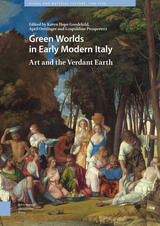 Green Worlds in Early Modern Italy: Art and the Verdant Earth
Karen Hope Goodchild
Amsterdam University Press, 2019 The green mantle of the earth! This metaphor is a poetic image that borrows from the vocabulary of weaving and epitomizes the Renaissance interest in "fashioning green worlds" in art and poetry. Here it serves as a motto for a cultural poetics that made representing living nature increasingly popular across Italy in the Early Modern period. The explosion of landscape art in this era is often associated with the rise of interest in the literary pastoral, narrowly defined, but this volume expands that understanding to show Green’s broad appeal as it intrigued audiences ranging from the ecclesiastic to the medical and scientific to the humanistic and courtly. The essays gathered here explore the expanding technologies and varied cultural dimensions of verzure and verdancy in the Italian Renaissance, and thus the role of visual art in shaping the poetics and expression of greenery in the arts of the 16th-century and beyond.
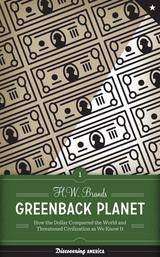 Greenback Planet: How the Dollar Conquered the World and Threatened Civilization as We Know It
By H. W. Brands
University of Texas Press, 2011 The world runs on the U.S. dollar. From Washington to Beijing, governments, businesses, and individuals rely on the dollar to conduct commerce and invest profitably and safely—even after the global financial meltdown in 2008 revealed the potentially catastrophic cost of the dollar's hegemony. But how did the greenback achieve this planetary dominance a mere century and a half after President Lincoln issued the first currency backed only by the credit—and credibility—of the federal government? In Greenback Planet, acclaimed historian H. W. Brands charts the dollar's astonishing rise to become the world's principal currency. Telling the story with the verve of a novelist, he recounts key episodes in U.S. monetary history, from the Civil War debate over fiat money (greenbacks) to the recent worldwide financial crisis. Brands explores the dollar's changing relations to gold and silver and to other currencies and cogently explains how America's economic might made the dollar the fundamental standard of value in world finance. He vividly describes the 1869 Black Friday attempt to corner the gold market, banker J. P. Morgan's bailout of the U.S. treasury, the creation of the Federal Reserve, and President Franklin Roosevelt's handling of the bank panic of 1933. Brands shows how lessons learned (and not learned) in the Great Depression have influenced subsequent U.S. monetary policy, and how the dollar's dominance helped transform economies in countries ranging from Germany and Japan after World War II to Russia and China today. He concludes with a sobering dissection of the 2008 world financial debacle, which exposed the power—and the enormous risks—of the dollar's worldwide reign.
Greenbacks and Resumption of Specie Payments, 1862-1879
Don C. Barrett
Harvard University Press The suffering, physical and financial, which the people of Europe and America have undergone since 1914 on account of inflation of currencies is probably greater than that caused by any other influence of the Great War. This has turned serious attention to the paper money experiment of the United States under the Greenback Standard, 1862-1879—a typical case of the various pitfalls and evils attending a paper money regime. Don Barrett has brought the various phases of our experiment within the range of a moderate sized monograph. He presents a critical account of the original issues of greenbacks, of fluctuating prices and violent speculation, of a decade and more of befuddled debate on contracting the currency and resumption, of the authorship of the resumption act itself now for the first time made clear, and of the actual process of resumption under the leadership of John Sherman.
 Greener Pastures: Politics, Markets, and Community among a Migrant Pastoral People
Arun Agrawal
Duke University Press, 1999 Social scientists theorizing about political economy and the allocation of resources have usually omitted migrant communities from their studies. In Greener Pastures Arun Agrawal uses the story of the Raikas, a little-known group of migrant shepherds in western India, to reexamine current scholarship on markets and exchange, local and state politics, and community and hierarchy. The Raikas are virtually invisible in the regions through which they travel, as well as to the wider Indian society, yet they must operate as part of these larger spheres for their economic survival. Agrawal analyzes the institutions developed by the shepherds to solve livelihood problems. First, by focusing on the relations of the shepherds with their landholder neighbors, he explains why the shepherds migrate. He shows that struggles between these two groups led to a sociopolitical squeeze on the access of shepherds to the fodder resources they need to feed their sheep. Then, in an examination of why the shepherds migrate in groups, he demonstrates how their migratory lives depend on market exchanges and points to the social and political forces that influence prices and determine profits. Finally, he looks at decision-making processes such as division of labor and the delegation of power. Politics is ubiquitous in the interactions of the shepherds with their neighbors and with state officials, in their exchanges in markets and with farmers, and in their internal relations as a community. Interspersing the words of the Raikas themselves with a sophisticated deployment of political theory, Agrawal has produced a volume that will interest scholars in a broad range of academic disciplines, including Asian studies, political science, human ecology, anthropology, comparative politics, rural sociology, and environmental studies and policy.
 A Greenhouse for the Mind
Jacquelyn Seevak Sanders
University of Chicago Press, 1989 The Sonia Shankman Orthogenic School has won worldwide recognition for its treatment of emotionally disturbed children. The school and its continuing work at the University of Chicago have been chronicled in Bruno Bettelheim's now classic books Love Is Not Enough (1950), Truants from Life (1955), The Empty Fortress (1967), and A Home for the Heart (1972).
A Greenhouse for the Mind continues the story of the school, focusing on how its teachers and counselors create an educational environment in which children will want and be able to learn. Jacquelyn Seevak Sanders worked closely with Bettelheim for thirteen years as a counselor and assistant principal and since 1973 has been director of the Orthogenic School. She offers her interpretation of Bettelheim's vision of a healing world for children, as well as her own ideas and new perspectives from the last decade.
In a warm and anecdotal style, Sanders relates the experiences and overarching theoretical principles that have shaped the school and its curriculum. She describes how the staff, schedules, and physical appearance of the school have been developed to create a stable and safe place to learn; how teachers confront their own emotional vulnerability; how the staff accepts the children themselves while disciplining unacceptable behavior; and how the attention of the inattentive can be gained. She chronicles the successes and setbacks of the staff in developing a curriculum that includes reading, science, and physical education, and she exemplifies the school's principles and practices through a story of an imaginary student's educational development.
In addition to her experience at the Orthogenic School, Sanders has worked with teachers at all levels from nursery schools to universities, and in A Greenhouse for the Mind she passes on what she has learned about educating difficult children—principles that have been helpful to both disturbed children in a unique setting and more typical children in ordinary settings. Her attention to the role of emotions in the learning process adds an often neglected dimension to traditional cognitive and instructional approaches.
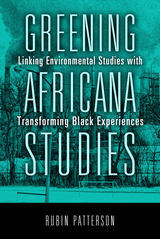 Greening Africana Studies: Linking Environmental Studies with Transforming Black Experiences
Rubin Patterson
Temple University Press, 2014 Insufficient attention has been given to the environment in Africana studies within the academy. In Greening Africana Studies, Rubin Patterson initiates an important conversation explaining why and how the gap between these two disciplines can and should be bridged. His comprehensive book calls for a green African transnationalism and focuses on the mission and major paradigms that identify the respective curriculum, research interests, and practices.
In his original work, Patterson demonstrates the ways in which black communities are harmed by local environmental degradation and global climate change. He shows that many local unwanted land use sites (LULUs), such as brownfields and toxic release inventory facilities, are disproportionately located in close proximity to neighborhoods of color, but also to colleges and universities with Africana studies programs. Arguing that such communities are not aggressively engaging in environmental issues, Greening Africana Studies also provides examples of how Africana studies students as well as members of black communities can prepare for green careers.
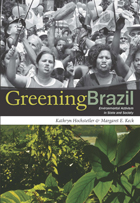 Greening Brazil: Environmental Activism in State and Society
Kathryn Hochstetler and Margaret E. Keck
Duke University Press, 2007 Greening Brazil challenges the claim that environmentalism came to Brazil from abroad. Two political scientists, Kathryn Hochstetler and Margaret E. Keck, retell the story of environmentalism in Brazil from the inside out, analyzing the extensive efforts within the country to save its natural environment, and the interplay of those efforts with transnational environmentalism. The authors trace Brazil’s complex environmental politics as they have unfolded over time, from their mid-twentieth-century conservationist beginnings to the contemporary development of a distinctive socio-environmentalism meant to address ecological destruction and social injustice simultaneously. Hochstetler and Keck argue that explanations of Brazilian environmentalism—and environmentalism in the global South generally—must take into account the way that domestic political processes shape environmental reform efforts. The authors present a multilevel analysis encompassing institutions and individuals within the government—at national, state, and local levels—as well as the activists, interest groups, and nongovernmental organizations that operate outside formal political channels. They emphasize the importance of networks linking committed actors in the government bureaucracy with activists in civil society. Portraying a gradual process marked by periods of rapid advance, Hochstetler and Keck show how political opportunities have arisen from major political transformations such as the transition to democracy and from critical events, including the well-publicized murders of environmental activists in 1988 and 2004. Rather than view foreign governments and organizations as the instigators of environmental policy change in Brazil, the authors point to their importance at key moments as sources of leverage and support.
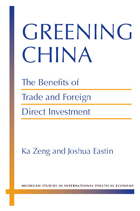 Greening China: The Benefits of Trade and Foreign Direct Investment
Ka Zeng and Joshua Eastin
University of Michigan Press, 2011 “The authors make some very critical interventions in this debate and scholars engaged in the environmental ‘pollution haven’ and ‘race to the bottom’ debates will need to take the arguments made here seriously, re-evaluating their own preferred theories to respond to the insightful theorizing and empirically rigorous testing that Zeng and Eastin present in the book.”
—Ronald Mitchell, University of Oregon China has earned a reputation for lax environmental standards that allegedly attract corporations more interested in profit than in moral responsibility and, consequently, further negate incentives to raise environmental standards. Surprisingly, Ka Zeng and Joshua Eastin find that international economic integration with nation-states that have stringent environmental regulations facilitates the diffusion of corporate environmental norms and standards to Chinese provinces. At the same time, concerns about “green” tariffs imposed by importing countries encourage Chinese export-oriented firms to ratchet up their own environmental standards. The authors present systematic quantitative and qualitative analyses and data that not only demonstrate the ways in which external market pressure influences domestic environmental policy but also lend credence to arguments for the ameliorative effect of trade and foreign direct investment on the global environment.
The Greening of Industry: A Risk Management Approach
John D. Graham
Harvard University Press, 1997 Environmentalists often perceive the risk management approach to environmental and public health policy as a tool to block regulation of industrial pollution. In contrast, this book presents six case studies which provide examples of how federal risk-based regulation has encouraged industry’s investment in pollution control. The authors trace the impact of risk management on the regulation of lead in gasoline, ozone-depleting chemicals, and emissions from the dry cleaning, pulp and paper, coke, and municipal waste combustor industries.
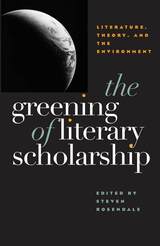 The Greening Of Literary Scholarship: Literature, Theory, and he Environment
Steven Rosendale
University of Iowa Press, 2002 A collection of thirteen original essays by leaders in the emerging field of ecocriticism, The Greening of Literary Scholarship is devoted to exploring new and previously neglected literatures, theories, and methods in environmental-literary scholarship.
Each essay in this impressive collection challenges the notion that the study of environmental literature is separate from traditional concerns of criticism, and each applies ecocritical scholarship to literature not commonly explored in this context. New historicism, postcolonialism, deconstructionism, and feminist and Marxist theories are all utilized to evaluate and gain new insights into environmental literature; at the same time, Percy Bysshe Shelley, Upton Sinclair, Leslie Marmon Silko, and Susan Howe are studied from an ecocritical perspective.
At its core, The Greening of Literary Scholarship offers a practical demonstration of how articulating traditional and environmental modes of literary scholarship can enrich the interpretation of literary texts and, most important, revitalize the larger fields of environmental and literary scholarship.
 The Greening of the U.S. Military: Environmental Policy, National Security, and Organizational Change
Robert F. Durant
Georgetown University Press, 2007 By the Cold War's end, U.S. military bases harbored nearly 20,000 toxic waste sites. All told, cleaning the approximately 27 million acres is projected to cost hundreds of billions of dollars. And yet while progress has been made, efforts to integrate environmental and national security concerns into the military's operations have proven a daunting and intrigue-filled task that has fallen short of professed goals in the post-Cold War era. In The Greening of the U.S. Military, Robert F. Durant delves into this too-little understood world of defense environmental policy to uncover the epic and ongoing struggle to build an environmentally sensitive culture within the post-Cold War military. Through over 100 interviews and thousands of pages of documents, reports, and trade newsletter accounts, he offers a telling tale of political, bureaucratic, and intergovernmental combat over the pace, scope, and methods of applying environmental and natural resource laws while ensuring military readiness. He then discerns from these clashes over principle, competing values, and narrow self-interest a theoretical framework for studying and understanding organizational change in public organizations.
From Dick Cheney's days as Defense Secretary under President George H. W. Bush to William Cohen's Clinton-era-tenure and on to Donald Rumsfeld's Pentagon, the battle over "greening" the military has been one with high-stakes consequences for both national defense and public health, safety, and the environment. Durant's polity-centered perspective and arguments will evoke needed scrutiny, debate, and dialogue over these issues in environmental, military, policymaking, and academic circles.
 Greening Our Built World: Costs, Benefits, and Strategies
Greg Kats
Island Press, 2009 “Green” buildings—buildings that use fewer resources to build and to sustain—are commonly thought to be too expensive to attract builders and buyers. But are they? The answer to this question has enormous consequences, since residential and commercial buildings together account for nearly 50% of American energy consumption—including at least 75% of electricity usage—according to recent government statistics.
This eye-opening book reports the results of a large-scale study based on extensive financial and technical analyses of more than 150 green buildings in the U.S. and ten other countries. It provides detailed findings on the costs and financial benefits of building green. According to the study, green buildings cost roughly 2% more to build than conventional buildings—far less than previously assumed—and provide a wide range of financial, health and social benefits. In addition, green buildings reduce energy use by an average of 33%, resulting in significant cost savings.
Greening Our Built World also evaluates the cost effectiveness of “green community development” and presents the results of the first-ever survey of green buildings constructed by faith-based organizations. Throughout the book, leading practitioners in green design—including architects, developers, and property owners—share their own experiences in building green. A compelling combination of rock-solid facts and specific examples, this book proves that green design is both cost-effective and earth-friendly.
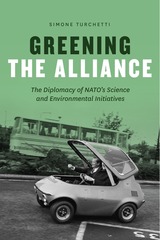 Greening the Alliance: The Diplomacy of NATO's Science and Environmental Initiatives
Simone Turchetti
University of Chicago Press, 2018 Following the launch of Sputnik, the North Atlantic Treaty Organization became a prominent sponsor of scientific research in its member countries, a role it retained until the end of the Cold War. As NATO marks sixty years since the establishment of its Science Committee, the main organizational force promoting its science programs, Greening the Alliance is the first book to chart NATO’s scientific patronage—and the motivations behind it—from the organization’s early days to the dawn of the twenty-first century.
Drawing on previously unseen documents from NATO’s own archives, Simone Turchetti reveals how its investments were rooted in the alliance’s defense and surveillance needs, needs that led it to establish a program prioritizing environmental studies. A long-overlooked and effective diplomacy exercise, NATO’s “greening” at one point constituted the organization’s chief conduit for negotiating problematic relations between allies. But while Greening the Alliance explores this surprising coevolution of environmental monitoring and surveillance, tales of science advisers issuing instructions to bomb oil spills with napalm or Dr. Strangelove–like experts eager to divert the path of hurricanes with atomic weapons make it clear: the coexistence of these forces has not always been harmonious. Reflecting on this rich, complicated legacy in light of contemporary global challenges like climate change, Turchetti offers both an eye-opening history of international politics and environmental studies and a thoughtful assessment of NATO’s future.
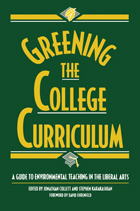 Greening the College Curriculum: A Guide To Environmental Teaching In The Liberal Arts
Edited by Jonathan Collett and Stephen Karakashian
Island Press, 1996 Greening the College Curriculum provides the tools college and university faculty need to meet personal and institutional goals for integrating environmental issues into the curriculum. Leading educators from a wide range of fields, including anthropology, biology, economics, geography, history, literature, journalism, philosophy, political science, and religion, describe their experience introducing environmental issues into their teaching. The book provides: - a rationale for including material on the environment in the teaching of the basic concepts of each discipline
- guidelines for constructing a unit or a full course at the introductory level that makes use of environmental subjects
- sample plans for upper-level courses
- a compendium of annotated resources, both print and nonprint
Contributors to the volume include David Orr, David G. Campbell, Lisa Naughton, Emily Young, John Opie, Holmes Rolston III, Michael E. Kraft, Steven Rockefeller, and others.
Greening The Lyre: Environmental Poetics And Ethics
David W. Gilcrest
University of Nevada Press, 2002 This work covers important and neglected ground—environmental language theory. Gilcrest poses two overarching questions: To what extent does contemporary nature poetry represent a recapitulation of familiar poetics? And, to what extent does contemporary nature poetry engage a poetics that stakes out new territory? He addresses these questions with important thinkers, especially Kenneth Burke, and considers such poets as Frost, Kunitz, Heaney, Ammons, Cardenal, and Rich.
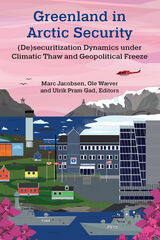 Greenland in Arctic Security: (De)securitization Dynamics under Climatic Thaw and Geopolitical Freeze
Marc Jacobsen, Ole Wæver, and Ulrik Pram Gad, Editors
University of Michigan Press, 2024 Greenland has increasingly captivated imaginations around the globe. Yet, while it is central to the Arctic region, its role has been poorly understood. Greenland in Arctic Security delivers a comprehensive overview of how security dynamics unfold in and in relation to Greenland. Each individual chapter analyzes specific discourses and dynamics pertaining to hard or soft security questions. These span from great power interests in geostrategic infrastructure to domestic debates centered on promoting and protecting Greenland identity when engaging with the outside world. In addition, the book offers perspectives on other security questions that have been catalyzed by the effects of climate change.
By combining these different analyses, Greenland in Arctic Security provides new, theoretically informed discussions on how security politics can manifest across different scales and territorial borders. At times, these politics can have consequences beyond their original intent. With Greenland geopolitics and securitization theory of current interest to political and academic debates, this book offers timely insights for readers.
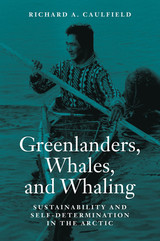 Greenlanders, Whales, and Whaling: Sustainability and Self-Determination in the Arctic
Richard A. Caulfield
Dartmouth College Press, 2000 Whaling has been central to the life of Greenland's Inuit peoples for at least 4000 years, but political, economic, technological, and regulatory changes have altered this ancient practice. Richard A. Caulfield reveals these impacts first by analyzing Home Rule and its success in Greenland, and then by looking at whaling's place in the contemporary Greenlandic economy and its evolving co-management regime. What emerges from his investigation is an intricate web connecting traditions of indigenous peoples, the promises and pitfalls of co-management, the influence of international whaling policies, the complexities of sustainability, and the power of culturally determined views shaping relationships between humans and their environment. Caulfield finds that controversy over whaling often arises from conflicting idea systems, rather than disagreement over biological resource management. Understanding the ways Greenlanders and outside interests have defined and negotiated these conflicts "gives us more than just an insight into how indigenous peoples are coping with a changing world," he writes. "It also provides us with a sense of the challenges we face as well."
 Greenwich Village 1963: Avant-Garde Performance and the Effervescent Body
Sally Banes
Duke University Press, 1993 The year was 1963 and from Birmingham to Washington, D.C., from Vietnam to the Kremlin to the Berlin Wall, the world was in the throes of political upheaval and historic change. But that same year, in New York's Greenwich Village, another kind of history and a different sort of politics were being made. This was a political history that had nothing to do with states or governments or armies--and had everything to do with art. And this is the story that Sally Banes tells, a year in the life of American culture, a year that would change American life and culture forever. It was in 1963, as Banes's book shows us, that the Sixties really began.
A leading writer on cultural history, Banes draws a vibrant portrait of the artists and performers who gave the 1963 Village its exhilarating force, the avant-garde whose interweaving of public and private life, work and play, art and ordinary experience, began a wholesale reworking of the social and cultural fabric of America. Among these young artists were many who went on to become acknowledged masters in their fields, including Andy Warhol, John Cage, Yoko Ono, Yvonne Rainer, Lanford Wilson, Sam Shepard, Brian de Palma, Harvey Keitel, Kate Millet, and Claes Oldenburg. In live performance--Off-Off Broadway theater, Happenings, Fluxus, and dance--as well as in Pop Art and underground film, we see this generation of artists laying the groundwork for the explosion of the counterculture in the late 1960s and the emergence of postmodernism in the 1970s. Exploring themes of community, freedom, equality, the body, and the absolute, Banes shows us how the Sixties artists, though shaped by a culture of hope and optimism, helped to galvanize a culture of criticism and change. As 1963 came to define the Sixties, so this vivid account of the year will redefine a crucial generation in recent American history.
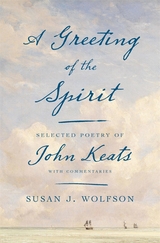 A Greeting of the Spirit: Selected Poetry of John Keats with Commentaries
Susan J. Wolfson
Harvard University Press, 2022 A Times Literary Supplement Book of the Year
A renowned Keats scholar illuminates the poet’s extraordinary career, in a new edition featuring seventy-eight verse selections with commentary.
John Keats’s career as a published poet spanned scarcely more than four years, cut short by his death early in 1821 at age twenty-five. Yet in this time, he produced a remarkable—and remarkably wide-ranging—body of work that has secured his place as one of the most influential poets in the British literary tradition. Celebrated Keats scholar Susan J. Wolfson presents seventy-eight selections from his work, each accompanied by a commentary on its form, style, meanings, and relevant contexts.
In this edition, readers will rediscover a virtuoso poet, by turns lively, experimental, self-ironizing, outrageous, and philosophical. Wolfson includes such well-known favorites as Ode to a Nightingale, Ode on a Grecian Urn, To Autumn, La Belle Dame sans Merci, and The Eve of St. Agnes, as well as less familiar poems, several in letters to family and friends never meant for publication. Her selections redefine the breadth and depth of Keats’s poetic imagination, from intellectual jests and satires to erotic bandying, passionate confessions, and reflections on mortality.
The selections, presented in their order of composition, convey a chronicle of Keats’s artistic and personal evolution. Wolfson’s revealing commentaries unfold the lively complexities of his verbal arts and stylistic experiments, his earnest goals and nervous apprehensions, and the pressures of politics and literary criticism in his day. In critically attentive and conversational prose, Wolfson encourages us to experience Keats in the way that he himself imagined the language of poetry: as a living event, a cooperative experience shared between author and reader.
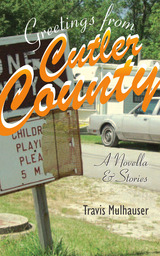 Greetings from Cutler County: A Novella and Stories
Travis Mulhauser
University of Michigan Press, 2005 Greetings from Cutler County is both a nonstop ride of tragic hilarity, and a piercing look at the complexities of youth.
In one northern Michigan community the lives of desperate small-town dreamers are examined through an ensemble cast as earnest as they are outrageous, and as compelling as they are heartbreaking. The lovers, crooks, failures, and survivors of Cutler County are so flawed and genuine you can't help rooting for them-no matter how foolish or hopeless their pursuits may seem.
The stories take place in Cutler County, Michigan. Most of the characters are young men who think of themselves as losers and outsiders. Short on cash, popularity, and the ambition needed for success, they nevertheless are able to examine their failings with the self-knowing humor and resignation of the perpetually thwarted ne'er-do-well.
The stories are inseparable from the stark shoreline of their Lake Michigan settings-the cavernous woods and vast inland lakes that shape life in northern Michigan-and create a landscape as rugged and dramatic as youth itself. Greetings from Cutler County explores the common triumphs and tragedies of coming of age, while providing a rationale and humor that is uniquely and unforgettably its own.
 Greetings from New Nashville: How a Sleepy Southern Town Became "It" City
Steve Haruch
Vanderbilt University Press, 2020 In 1998, roughly 2 million visitors came to see what there was to see in Nashville. By 2018, that number had ballooned to 15.2 million.
In that span of two decades, the boundaries of Nashville did not change. But something did. Or rather, many somethings changed, and kept changing, until many who lived in Nashville began to feel they no longer recognized their own city. And some began to feel it wasn't their own city at all anymore as they were pushed to its fringes by rising housing costs. Between 1998 and 2018, the population of Nashville grew by 150,000. On some level, Nashville has always packaged itself for consumption, but something clicked and suddenly everyone wanted a taste. But why Nashville? Why now? What made all this change possible?
This book is an attempt to understand those transformations, or, if not to understand them, exactly, then to at least grapple with the question: What happened?
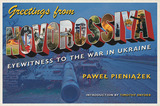 Greetings from Novorossiya: Eyewitness to the War in Ukraine
Pieniazek
University of Pittsburgh Press, 2017 Shortlist, 2022 Witold Pilecki International Book Award
With an Introduction by Timothy Snyder
Polish journalist Pawel Pieniazek was among the first journalists to enter the war-torn region of eastern Ukraine and Greetings from Novorossiya is his vivid firsthand account of the conflict. He was the first reporter to reach the scene when Russian troops in Ukraine accidentally shot down a civilian airliner, killing all 298 people aboard. Unlike Western journalists, his fluency in both Ukrainian and Russian granted him access and the ability to move among all sides in the conflict. With powerful color photos, telling interviews from the local population, and brilliant reportage, Pieniazek’s account documents these dramatic events as they transpired.
This unique firsthand view of history in the making brings to life the tragedy of Ukraine for a Western audience. Historian Timothy Snyder provides wider context in his superb introduction and explores the significance of this ongoing conflict at the border of East and West.
 Greetings in the Lord: Early Christians in the Oxyrhynchus Papyri
AnneMarie Luijendijk
Harvard University Press, 2008 This is the first book-length study on Christians in the ancient Egyptian city of Oxyrhynchus, the site where some of the most important and oldest fragments of early Christian books were unearthed.
Bringing the people in dry papyrus letters and documents back to life, the book reveals how Christians lived in this city in different contexts and situations. In the first part, the image of the city's marketplace functions to address questions of Christian identity in the public sphere. The second part features a man called Sotas, bishop of Oxyrhynchus in the third century, as he is busy networking with other Christian communities, involved in teaching, book production, and fund-raising. The third part, focusing on evidence of the persecution of Christians, reveals the far-reaching power and pervasiveness of Roman bureaucracy. We learn that Christians negotiated their identity through small acts of resistance against the imperial decrees.
The papyrus letters and documents discussed in this book offer sometimes surprising insights into the everyday lives of Christians in the third and early fourth century and nuance our understanding of Christianity in this period. It is the mundane aspects of everyday life that make these papyrus documents so fascinating.
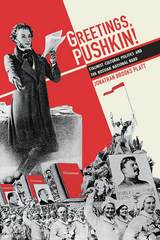 Greetings, Pushkin!: Stalinist Cultural Politics and the Russian National Bard
Jonathan Brooks Platt
University of Pittsburgh Press, 2016 In 1937, the Soviet Union mounted a national celebration commemorating the centenary of poet Alexander Pushkin’s death. Though already a beloved national literary figure, the scale and feverish pitch of the Pushkin festival was unprecedented. Greetings, Pushkin! presents the first in-depth study of this historic event and follows its manifestations in art, literature, popular culture, education, and politics, while also examining its philosophical underpinnings.
Jonathan Brooks Platt looks deeply into the motivations behind the Soviet glorification of a long-dead poet—seemingly at odds with the October Revolution’s radical break with the past. He views the Pushkin celebration as a conjunction of two opposing approaches to time and modernity: monumentalism, which points to specific moments and individuals as the origin point for cultural narratives, and eschatology, which glorifies ruptures in the chain of art or thought and the destruction of canons.
In the midst of the Great Purge, the Pushkin jubilee was a critical element in the drive toward a nationalist discourse that attempted to unify and subsume the disparate elements of the Soviet Union, supporting the move to “socialism in one country.”
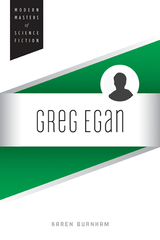 Greg Egan
Karen Burnham
University of Illinois Press, 2014 Greg Egan (1961- ) publishes works that challenge readers with rigorous, deeply-informed scientific speculation. He unapologetically delves into mathematics, physics, and other disciplines in his prose, putting him in the vanguard of the hard science fiction renaissance of the 1990s. A working physicist and engineer, Karen Burnham is uniquely positioned to provide an in-depth study of Egan's science-heavy oeuvre. Her survey of the author's career covers novels like Permutation City and Schild's Ladder and the Hugo Award-winning novella "Oceanic," analyzing how Egan used cutting-edge scientific theory to explore ethical questions and the nature of humanity. As Burnham shows, Egan's collected works constitute a bold artistic statement: that narratives of science are equal to those of poetry and drama, and that science holds a place in the human condition as exalted as religion or art. The volume includes a rare interview with the famously press-shy Egan covering his works, themes, intellectual interests, and thought processes.
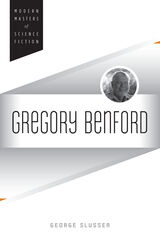 Gregory Benford
George Slusser
University of Illinois Press, 2014 Gregory Benford is perhaps best known as the author of Benford's law of controversy: "Passion is inversely proportional to the amount of real information available." That maxim is a quotation from Timescape, Benford's Nebula and Campbell Award-winning 1980 novel, which established his work as an exemplar of "hard science fiction," dedicated to working out the consequences of modern science rather than substituting pseudoscience for fantasy. Like many other current science fiction writers, Benford has tackled the major genres: space travel, time travel, technology running amok, prolonged longevity, searing apocalyptic cosmic events, and alien life, which he theorizes to be more likely viral than intelligent. An astrophysicist by training and profession, Benford has published more than twenty novels, over one hundred short stories, some fifty essays, and myriad articles that display both his scientific rigor as well as a recognition of literary traditions. In this study, George Slusser explores the extraordinary, seemingly inexhaustible display of creative energy in Gregory Benford's life and work. Presenting Benford's ideas on science and the writing of science fiction, the volume addresses the writer's literary production and his place in contemporary science fiction. By identifying direct sources and making parallels with other works and writers, Slusser reveals the vast scope of Benford's knowledge, both of literature and of the major scientific and philosophical issues of our time. Slusser also discusses Benford's numerous scientific articles and nonfiction books and includes a new interview with Benford.
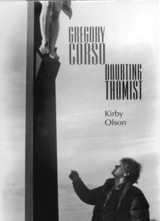 Gregory Corso: Doubting Thomist
Kirby Olson
Southern Illinois University Press, 2002 Gregory Corso is the most intensely spiritual of the Beat generation poets and still by far the least explored. The virtue of Kirby Olson’s Gregory Corso: Doubting Thomist is that it is the first book to place all of Corso’s work in a philosophical perspective, concentrating on Corso as a poet torn between a static Catholic Thomist viewpoint and that of a progressive surrealist. While Corso is a subject of great controversy—his work often being seen as nihilistic and wildly comic—Olson argues that Corso’s poetry, in fact, maintains an insistent theme of doubt and faith with regard to his early Catholicism. Although many critics have attempted to read his poetry, and some have done so brilliantly, Olson—in his approach and focus—is the first to attempt to give a holistic understanding of the oeuvre as essentially one not of entertainment or hilarity but of a deep spiritual and philosophical quest by an important and profound mind. In nine chapters, Olson addresses Corso from a broad philosophical perspective and shows how Corso takes on particular philosophical issues and contributes to new understandings. Corso’s concerns, like his influence, extend beyond the Beat generation as he speaks about concerns that have troubled thinkers from the beginning of the Western tradition, and his answers offer provocative new openings for thought. Corso may very well be the most important Catholic poet in the American literary canon, a visionary like Burroughs and Ginsberg, whose work illuminated a generation. Written in a lively and engaging style, Gregory Corso: Doubting Thomist seeks to keep Corso’s memory alive and at last delve fully into Corso’s poetry.
Gregory of Nyssa: Homilies on the Song of Songs
Richard A. Norris Jr.
SBL Press, 2012 Gregory of Nyssa’s fifteen Homilies on the Song of Songs offer an important resource for the history of Christian biblical exegesis, as well as for the history of Christian ascetical and spiritual teaching, and stand alongside Origen’s commentary on the Song as a source for the later interpretative tradition. In addition to offering the original text and an English translation of all fifteen homilies, Norris provides an analysis of the characteristic themes of Gregory’s ascetical teaching, emphasizes its connection in his mind with the institution of baptism, and stresses the degree to which Gregory sees the teaching of the Song as addressed not to a special class of believers but to any and all Christians.
Gregory the Great: A Symposium
John C. Cavadini
University of Notre Dame Press, 1996 A group of renowned North American scholars gathered at the University of Notre Dame in 1993 for a symposium on Pope Gregory the Great (550–604). This volume presents essays delivered at the conference, together with additional contributions. In these essays Gregory emerges as a figure both interpreting and interpreted: interpreting the past, receiving, synthesizing, and developing the teachings of earlier writers, and, by this very process, presenting a persuasive theological and pastoral agenda which has inspired projects of interpretation and development in later periods up to and including our own.
 Gregory the Great: Ascetic, Pastor, and First Man of Rome
George E. Demacopoulos
University of Notre Dame Press, 2015 Gregory the Great (bishop of Rome from 590 to 604) is one of the most significant figures in the history of Christianity. His theological works framed medieval Christian attitudes toward mysticism, exegesis, and the role of the saints in the life of the church. The scale of Gregory's administrative activity in both the ecclesial and civic affairs of Rome also helped to make possible the formation of the medieval papacy. Gregory disciplined malcontent clerics, negotiated with barbarian rulers, and oversaw the administration of massive estates that employed thousands of workers. Scholars have often been perplexed by the two sides of Gregory—the monkish theologian and the calculating administrator.
George E. Demacopoulos's study is the first to advance the argument that there is a clear connection between the pontiff's thought and his actions. By exploring unique aspects of Gregory's ascetic theology, wherein the summit of Christian perfection is viewed in terms of service to others, Demacopoulos argues that the very aspects of Gregory's theology that made him distinctive were precisely the factors that structured his responses to the practical crises of his day. With a comprehensive understanding of Christian history that resists the customary bifurcation between Christian East and Christian West, Demacopoulos situates Gregory within the broader movements of Christianity and the Roman world that characterize the shift from late antiquity to the early Middle Ages. This fresh reading of Gregory's extensive theological and practical works underscores the novelty and nuance of Gregory as thinker and bishop.
"Gregory the Great: Ascetic, Pastor, and First Man of Rome has the potential to be the most important intellectual biography of Pope Gregory I to appear since the publication in 1988 of Carole Straw's landmark study, Gregory the Great: Perfection in Imperfection. Demacopoulos proposes a new interpretive paradigm by insisting that the 'problem of the two Gregories' is not really a problem at all: Gregory's ascetic and pastoral theology, he argues, informs and structures his administrative practices. This important insight will have significant impact on future research." —Kristina Sessa, Ohio State University
Grenville Goodwin Among the Western Apache: Letters from the Field
Edited by Morris E. Opler
University of Arizona Press, 1973 Grenville Goodwin was one of the leading field anthropologists during a crucial period in American Indian research—the 1930s. His letters from the field provide original source material on Western Apache beliefs and customs. They also reveal the attitudes and methods which made him so effective in his work. A dedicated and thorough ethnographer, Goodwin became familiar with every aspect of Western Apache culture.
During this same period, Morris Opler was studying the Chiricahua and Mescalero Apache in New Mexico. In order to exchange information about their studies, Goodwin and Opler began corresponding. Both men were convinced that a long-overdue, systematic comparison of Apachean cultures would yield significant results.
 Grey Area: Regulating Amsterdam's Coffeeshops
Scott Jacques
University College London, 2019 Amsterdam’s Coffeeshops, which are local legal dispensaries for marijuana, are often given as examples of Dutch tolerance. In fact, these dispensaries are highly regulated. On the premises, there cannot be minors, hard drugs, or more than 500 grams of marijuana. A coffeeshop cannot advertise, cause a nuisance, or sell more than 5 grams to a person in a day. These rules are enforced by surprise police checks, with violations punishable by closure.
In Grey Area, Scott Jacques examines the policy surrounding coffeeshops with a huge stash of data, which he collected during two years of fieldwork in Amsterdam. How do coffeeshop owners and staff obey the rules? How are the rules broken, and why? The stories and statistics show that order in the midst of smoke is key to Dutch drug policy, vaporizing the idea that prohibition is better than regulation. Grey Area is a timely contribution in light of the recent reforms to cannabis policy worldwide.
The Grey Zone of Health and Illness
Alan Blum
Intellect Books, 2011 Most discussions of health care center on medical advances, cost, and the roles of insurers and government agencies. With The Grey Zone of Health and Illness, Alan Blum offers a new perspective, outlining a highly nuanced theoretical approach to health and health care alike. Drawing on a range of thinkers, Blum explains how our current understanding of health care tends to posit it as a sort of state of permanent emergency, like the nuclear standoff of the Cold War. To move beyond that, he argues, will require a complete rethinking of health and sickness, self-governance and negligence. A heady, cutting-edge intervention in a critical area of society, The Grey Zone of Health and Illness will have wide ramifications in the academy and beyond.
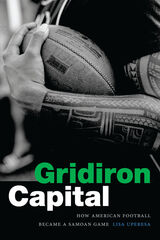 Gridiron Capital: How American Football Became a Samoan Game
Lisa Uperesa
Duke University Press, 2022 Since the 1970s, a “Polynesian Pipeline” has brought football players from American Sāmoa to Hawaii and the mainland United States to play at the collegiate and professional levels. In Gridiron Capital Lisa Uperesa charts the cultural and social dynamics that have made football so central to Samoan communities. For Samoan athletes, football is not just an opportunity for upward mobility; it is a way to contribute to, support, and represent their family, village, and nation. Drawing on ethnographic fieldwork, archival research, and media analysis, Uperesa shows how the Samoan ascendancy in football is underpinned by the legacies of US empire and a set of imperial formations that mark Indigenous Pacific peoples as racialized subjects of US economic aid and development. Samoan players succeed by becoming entrepreneurs: building and commodifying their bodies and brands to enhance their football stock and market value. Uperesa offers insights into the social and physical costs of pursuing a football career, the structures that compel Pacific Islander youth toward athletic labor, and the possibilities for safeguarding their health and wellbeing in the future.
Duke University Press Scholars of Color First Book Award recipient
 The Gridiron Gospel: Faith and College Football in Twentieth-Century America
Hunter M. Hampton
University of Illinois Press, 2025 From the game’s early days, college football and a strain of muscular Christianity built a mutually reinforcing culture that taught lessons in America’s dominant religious, gendered, and racial belief systems. Christians of many denominations embraced the game to shape and reshape their faith to meet the changing social demands of the twentieth century. Hunter M. Hampton analyzes the impact of football on Christian college campuses. Baptists and Latter-day Saints, Evangelicals and Roman Catholics sought spiritual and personal meaning on the gridiron. Fans watched the action to find God’s lessons for them. Wins and losses expressed the divine will while the game’s popularity offered a potent way to evangelize non-believers. Hampton also investigates the sport’s place in providing a stage for fostering Christian manhood, male community, gender dominance, and on-the-field displays of heroic savagery that served a higher purpose. Provocative and engaging, The Gridiron Gospel looks at the All-American fusion of physical and spiritual muscle.
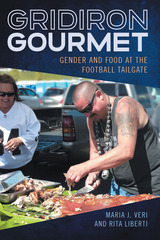 Gridiron Gourmet: Gender and Food at the Football Tailgate
Maria J. Veri
University of Arkansas Press, 2019 On football weekends in the United States, thousands of fans gather in the parking lots outside of stadiums, where they park their trucks, let down the gates, and begin a pregame ritual of drinking and grilling.
Tailgating, which began in the early 1900s as a quaint picnic lunch outside of the stadium, has evolved into a massive public social event with complex menus, extravagant creative fare, and state-of-art grilling equipment. Unlike traditional notions of the home kitchen, the blacktop is a highly masculine culinary environment in which men and the food they cook are often the star attractions.
Gridiron Gourmet examines tailgating as shown in television, film, advertising, and cookbooks, and takes a close look at the experiences of those tailgaters who are as serious about their brisket as they are about cheering on their favorite team, demonstrating how and why the gendered performances on the football field are often matched by the intensity of the masculine displays in front of grills, smokers, and deep fryers.
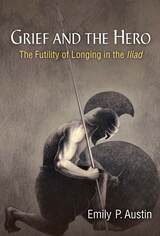 Grief and the Hero: The Futility of Longing in the Iliad
Emily P. Austin
University of Michigan Press, 2021 Grief and the Hero examines Achilles’ experience of the futility of grief in the context of the Iliad’s study of anger. No action can undo his friend Patroklos’ death, but the experience of death drives him to behave as though he can achieve something restorative. Rather than assuming that grief gives rise to anger, as most scholars have done, Grief and the Hero pays close attention to the poem’s representation of the origin of these emotions. In the Iliad, only Achilles’ grief for Patroklos is joined with the word pothê, “longing”; no other grief in the poem is described with this term. The Iliad depicts Achilles’ grief as the rupture of shared life—an insight that generates a new way of reading the epic. Achilles’ anguish drives him to extremes, oscillating between self-isolation and seeking communal expressions of grief; between weeping abundantly and relentlessly pursuing battle; between varied threats of mutilation, deeds of vengeance, and other vows. Yet his yearning for life shared with Patroklos is the common denominator. Here lies the profound insight of the Iliad. All of Achilles’ grief-driven deeds arise from his longing for life with Patroklos, and thus all of these deeds are, in a deep sense, futile. He yearns for something unattainable—undoing the reality of death. Grief and the Hero will appeal not only to scholars and students of Homer but to all humanists. Loss, longing, and even revenge touch many human lives, and the insights of the Iliad have broad resonance.
 Grief is a Sneaky Bitch: An Uncensored Guide to Navigating Loss
Lisa Keefauver
University of Texas Press, 2024 A comprehensive and compassionate guide to navigating loss. When social worker Lisa Keefauver became a widow in 2011, she was alarmed to discover that even though 100 percent of us experience loss, we’re living in a grief illiterate world. In her work as a therapist, and in her search for help in the wake of her own loss, Keefauver began to see how the misguided stories we consume about grief lead to unnecessary suffering. Responding to the problematic narratives that grief is something to move on from after completing the five stages like some sort of to-do list, Keefauver became a grief activist. Through this book and her hit podcast of the same title, she creates a safe place to be inside the messiness of it all, to discover the full spectrum of grief, and to find the tools that help grievers move forward, not on. Grief is a Sneaky Bitch is a comprehensive guide—both a manual full of insights and skills and, even more importantly, a thoughtful companion that helps readers feel seen and held. Keefauver shares her personal and professional wisdom alongside the lessons she’s learned from clinicians, authors, poets, and friends. In place of rigid instructions and must-do checklists, Grief is a Sneaky Bitch invites reflection, encourages self-compassion, and explores the therapeutic power of humor with, yes, a bit of profanity.
Grievance: In Fragments
Grant Farred
Prickly Paradigm Press, 2024 Reveals how America is a nation founded on grievance.
Grievance is an American mode of being that can be traced back to the Declaration of Independence, that is at the root of the Civil War and accounts in large measure for the failure of Reconstruction, that runs through the Civil Rights moment, and that showed itself again in the events of January 6, 2021. Grievance, in America, always concatenates with racism and evinces itself most violently in those moments when white supremacy, fallaciously, presents itself as being under attack. This book explores this elemental yet destructive thread of the American character.
Griever: An American Monkey King in China
Gerald Vizenor Vizenor
University of Minnesota Press, 1990 Griever de Hocus, accompanied by his rooster, Matteo Ricci, plays havoc with the monolithic institutions of the People’s Republic of China in Vizenor’s inspired retelling of the classic Chinese Journey to the West. Fiction. Griever de Hocus, accomopanied by his rooster, Matteo Ricci, plays havoc with the monolithic institutions of the People's Republic of China in Vizenor's inspired retelling of the classic Chinese Journey to the West. "Much of the American experience of the New Post-Cultural Revolution in China is related with devastating comic irony. The sights, sounds, and smells of the land are often unerringly captured by the author's lean, laconic prose." Los Angeles Times
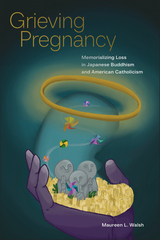 Grieving Pregnancy: Memorializing Loss in Japanese Buddhism and American Catholicism
Maureen L. Walsh
Rutgers University Press, 2025 In Grieving Pregnancy: Memorializing Loss in Japanese Buddhism and American Catholicism, Maureen L. Walsh compares how the two religious traditions respond ritually and discursively to miscarriage, stillbirth, and abortion experiences marked by grief for the women involved. The experience of pregnancy loss has always been a part of women’s lives, yet only recently has it garnered attention from religious leaders and scholars commensurate with its prevalence. This book examines pregnancy loss as a theological problem for both Buddhism and Catholicism and analyzes the rites and memorials that have developed to address it, such as Japanese Buddhist mizuko kuyō (water children rites) and emergent American Catholic memorial practices focused on pregnancy loss. These parallel practices have emerged within distinct religious landscapes—a fact reflected in their forms and purposes—and when considered together, they raise questions of keen interest to theological and religious studies about the goals of religious practice and the imagination of human life at its earliest stages.
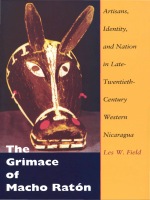 The Grimace of Macho Ratón: Artisans, Identity, and Nation in Late-Twentieth-Century Western Nicaragua
Les W. Field
Duke University Press, 1999 In this creative ethnography Les W. Field challenges a post-Sandinista national conception of identity, one that threatens to constrict the future of subaltern Nicaraguans. Drawing on the works and words of artisans and artisanas, Indians, and mestizos, Field critiques the national ideology of ethnic homogeneity and analyzes the new forms of social movement that have distinguished late-twentieth-century Nicaragua. As a framework for these analytic discussions, Field uses the colonial-era play El Güegüence o Macho Ratón and the literature relating to it.
Elite appropriations of El Güegüence construe it as an allegory of mestizo national identity in which mestizaje is defined as the production of a national majority of ethnically bounded non-Indians in active collaboration with the state. By contrast, Field interprets the play as a parable of cultural history and not a declaration of cultural identity, a scatological reflection on power and the state, and an evocation of collective loss and humor broadly associated with the national experience of disempowered social groups. By engaging with those most intimately involved in the performance of the play—and by including essays by some of these artisans—Field shows how El Güegüence tells a story about the passing of time, the absurdity of authority, and the contradictions of coping with inheritances of the past. Refusing essentialist notions of what it means to be Indian or artisan, Field explains the reemergence of politicized indigenous identity in western Nicaragua and relates this to the longer history of artisan political organization. Parting ways with many scholars who associate the notion of mestizaje with identity loss and hegemony, Field emphasizes its creative,
productive, and insightful meanings. With an emphasis on the particular struggles of women artisans, he explores the reasons why forms of collective identity have posed various kinds of predicaments for this marginalized class of western Nicaraguans.
This book will appeal to readers beyond the field of Latin American anthropology, including students and scholars of literature, intellectual history, women’s studies, and the politics of ethnicity.
 Grime, Glitter, and Glass: The Body and the Sonic in Contemporary Black Art
Nikki A. Greene
Duke University Press, 2024 In Grime, Glitter, and Glass, Nikki A. Greene examines how contemporary Black visual artists use sonic elements to refigure the formal and philosophical developments of Black art and culture. Focusing on the multimedia art of Renée Stout, Radcliffe Bailey, and María Magdalena Campos-Pons, Greene traces the intersection of the visual’s sonic possibilities with the Black body’s physical, representational, and metaphorical use in art. She employs her concept of “visual aesthetic musicality” to interpret Black visual art by examining the musical genres of jazz and rap, along with the often-overlooked innovations of funk and rumba, within art historiography. From Bailey’s use of multilayered surfaces of glitter, mud, and recycled materials to meditate on Sun Ra’s Afrofuturism to Stout’s life-size cast of her own body that recalls funk musician Betty Davis to Campos-Pons’s performative and sculptural references to sugar that resonate with the legacy of Celia Cruz, Greene outlines how these artists use mediums such as molded glass sculptures, viscous wet plaster, and dazzling mannequin heads to enhance the manifestations of Black identity. By foregrounding the sonic elements of their work, Greene demonstrates that these artists use sound to make themselves legible, recognizable, and audible.
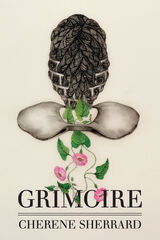 Grimoire
Cherene Sherrard
Autumn House Press, 2020 Named after a magical textbook, Cherene Sherrard’s Grimoire is a poetry collection centered on the recovery and preservation of ancestral knowledge and on the exploration of black motherhood. Incorporating experiences of food preparation, childrearing, and childbearing, the book begins with a section of poems that re-imagine recipes from one of the earliest cookbooks by an African-American woman: Mrs. Malinda Russell’s A Domestic Cookbook. Mrs. Russell’s voice as a nineteenth century chef is joined in conversation with a contemporary amateur cook in poetic recipes that take the form of soft and formal sonnets, introspective and historical lyric, and found poems. In the second section, the poet explores black maternal death and the harrowing circumstances surrounding birth for women of color in the United States.
Even while confronting the dangers and tragedies of contemporary black life, Sherrard creates hopeful projections of the future. She imagines an afterlife in which souls of black mothers who have died in childbirth get to travel into space with the reluctant help of the astrophysicist Neil deGrasse Tyson, and she positions a doula as a figure of salvation who intervenes and advocates for black mothers, challenging the dehumanizing practices of early obstetrics, genetics, and pseudo-science. Throughout Grimoire, Sherrard explores the precarity of black mothering over the last two centuries and the creative and ingenuous modes of human survival.
 Grimoire
Cherene Sherrard
Autumn House Press, 2020 Named after a magical textbook, Cherene Sherrard’s Grimoire is a poetry collection centered on the recovery and preservation of ancestral knowledge and on the exploration of black motherhood. Incorporating experiences of food preparation, childrearing, and childbearing, the book begins with a section of poems that re-imagine recipes from one of the earliest cookbooks by an African-American woman: Mrs. Malinda Russell’s A Domestic Cookbook. Mrs. Russell’s voice as a nineteenth century chef is joined in conversation with a contemporary amateur cook in poetic recipes that take the form of soft and formal sonnets, introspective and historical lyric, and found poems. In the second section, the poet explores black maternal death and the harrowing circumstances surrounding birth for women of color in the United States.
Even while confronting the dangers and tragedies of contemporary black life, Sherrard creates hopeful projections of the future. She imagines an afterlife in which souls of black mothers who have died in childbirth get to travel into space with the reluctant help of the astrophysicist Neil deGrasse Tyson, and she positions a doula as a figure of salvation who intervenes and advocates for black mothers, challenging the dehumanizing practices of early obstetrics, genetics, and pseudo-science. Throughout Grimoire, Sherrard explores the precarity of black mothering over the last two centuries and the creative and ingenuous modes of human survival.
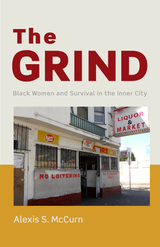 The Grind: Black Women and Survival in the Inner City
McCurn, Alexis S
Rutgers University Press, 2018 Few scholars have explored the collective experiences of women living in the inner city and the innovative strategies they develop to navigate daily life in this setting. The Grind illustrates the lived experiences of poor African American women and the creative strategies they develop to manage these events and survive in a community commonly exposed to violence.
Alexis S. McCurn draws on nearly two years of naturalistic field research among adolescents and adults in Oakland, California to provide an ethnographic account of how black women accomplish the routine tasks necessary for basic survival in poor inner-city neighborhoods and how the intersections of race, gender, and class shape how black women interact with others in public. This book makes the case that the daily consequences of racialized poverty in the lives of African Americans cannot be fully understood without accounting for the personal and collective experiences of poor black women.
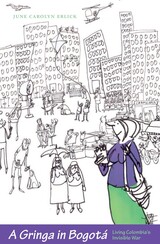 A Gringa in Bogotá: Living Colombia's Invisible War
By June Carolyn Erlick
University of Texas Press, 2010 To many foreigners, Colombia is a nightmare of drugs and violence. Yet normal life goes on there, and, in Bogotá, it's even possible to forget that war still ravages the countryside. This paradox of perceptions—outsiders' fears versus insiders' realities—drew June Carolyn Erlick back to Bogotá for a year's stay in 2005. She wanted to understand how the city she first came to love in 1975 has made such strides toward building a peaceful civil society in the midst of ongoing violence. The complex reality she found comes to life in this compelling memoir. Erlick creates her portrait of Bogotá through a series of vivid vignettes that cover many aspects of city life. As an experienced journalist, she lets the things she observes lead her to larger conclusions. The courtesy of people on buses, the absence of packs of stray dogs and street trash, and the willingness of strangers to help her cross an overpass when vertigo overwhelms her all become signs of convivencia—the desire of Bogotanos to live together in harmony despite decades of war. But as Erlick settles further into city life, she finds that "war in the city is invisible, but constantly present in subtle ways, almost like the constant mist that used to drip down from the Bogotá skies so many years ago." Shattering stereotypes with its lively reporting, A Gringa in Bogotá is must-reading for going beyond the headlines about the drug war and bloody conflict.
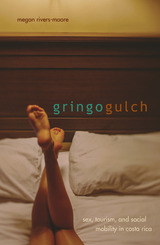 Gringo Gulch: Sex, Tourism, and Social Mobility in Costa Rica
Megan Rivers-Moore
University of Chicago Press, 2016 The story of sex tourism in the Gringo Gulch neighborhood of San José, Costa Rica could be easily cast as the exploitation of poor local women by privileged North American men—men who are in a position to take advantage of the vast geopolitical inequalities that make Latin American women into suppliers of low-cost sexual labor. But in Gringo Gulch, Megan Rivers-Moore tells a more nuanced story, demonstrating that all the actors intimately entangled in the sex tourism industry—sex workers, sex tourists, and the state—use it as a strategy for getting ahead.
Rivers-Moore situates her ethnography at the intersections of gender, race, class, and national dimensions in the sex industry. Instead of casting sex workers as hapless victims and sex tourists as neoimperialist racists, she reveals each group as involved in a complicated process of class mobility that must be situated within the sale and purchase of leisure and sex. These interactions operate within an almost entirely unregulated but highly competitive market beyond the reach of the state—bringing a distinctly neoliberal cast to the market. Throughout the book, Rivers-Moore introduces us to remarkable characters—Susan, a mother of two who doesn’t regret her career of sex work; Barry, a teacher and father of two from Virginia who travels to Costa Rica to escape his loveless, sexless marriage; Nancy, a legal assistant in the Department of Labor who is shocked to find out that prostitution is legal and still unregulated. Gringo Gulch is a fascinating and groundbreaking look at sex tourism, Latin America, and the neoliberal state.
Gringo Justice
Alfredo Mirande
University of Notre Dame Press, 1987
The Chicano Experience sets forth a comprehensive framework for Chicano sociology that corrects the biases and misconceptions of prevailing approaches and more accurately reflects the Chicano worldview. In addition to providing considerable insight into Chicano culture in America, Mirandé's study contributes to the broader movement among social scientists toward greater sensitivity to indigenous cultural paradigms.
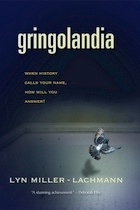 Gringolandia
Lyn Miller-Lachmann
Northwestern University Press, 2009 Daniel’s papá, Marcelo, used to play soccer, dance the cueca, and drive his kids to school in a beat-up green taxi—all while publishing an underground newspaper that exposed Chile’s military regime. After papá’s arrest in 1980, Daniel’s family fled to the United States. Now Daniel has a new life, playing guitar in a rock band and dating Courtney, a minister’s daughter. He hopes to become a US citizen as soon as he turns eighteen. When Daniel’s father is released and rejoins his family, they see what five years of prison and torture have done to him. Marcelo is partially paralyzed, haunted by nightmares, and bitter about being exiled to “Gringolandia.” Daniel worries that Courtney’s scheme to start a bilingual human rights newspaper will rake up papá’s past and drive him further into alcohol abuse and self-destruction. Daniel dreams of a real father-son relationship, but he may have to give up everything simply to save his papá’s life. This powerful coming-of-age story portrays an immigrant teen’s struggle to reach his tortured father and find his place in the world.
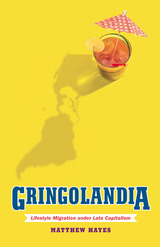 Gringolandia: Lifestyle Migration under Late Capitalism
Matthew Hayes
University of Minnesota Press, 2018 A telling look at today’s “reverse” migration of white, middle-class expats from north to south, through the lens of one South American city
Even as the “migration crisis” from the Global South to the Global North rages on, another, lower-key and yet important migration has been gathering pace in recent years—that of mostly white, middle-class people moving in the opposite direction. Gringolandia is that rare book to consider this phenomenon in all its complexity.
Matthew Hayes focuses on North Americans relocating to Cuenca, Ecuador, the country’s third-largest city and a UNESCO World Heritage Site. Many began relocating there after the 2008 economic crisis. Most are self-professed “economic refugees” who sought offshore retirement, affordable medical care, and/or a lower–cost location. Others, however, sought adventure marked by relocation to an unfamiliar cultural environment and to experience personal growth through travel, illustrative of contemporary cultures of aging. These life projects are often motivated by a desire to escape economic and political conditions in North America. Regardless of their individual motivations, Hayes argues, such North–South migrants remain embedded in unequal and unfair global social relations. He explores the repercussions on the host country—from rising prices for land and rent to the reproduction of colonial patterns of domination and subordination. In Ecuador, heritage preservation and tourism development reflect the interests and culture of European-descendent landowning elites, who have most to benefit from the new North–South migration. In the process, they participate in transnational gentrification that marginalizes popular traditions and nonwhite mestizo and indigenous informal workers. The contrast between the migration experiences of North Americans in Ecuador and those of Ecuadorians or others from such regions of the Global South in North America and Europe demonstrates that, in fact, what we face is not so much a global “migration crisis” but a crisis of global social justice.
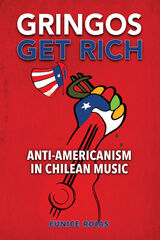 Gringos Get Rich: Anti-Americanism in Chilean Music
Eunice Rojas
University of Alabama Press, 2024 Documents counterimperialism in Chilean music since the 1960s Gringos Get Rich: Anti-Americanism in Chilean Music examines anti-Americanism in Latin America as manifested in Chilean music in recent history. From a folk-based movement in the 1960s and early 1970s to underground punk rock groups during the Pinochet regime, to socially conscious hip-hop artists of postdictatorship Chile, Chilean music has followed several left-leaning transnational musical trends to grapple with Chile’s fluctuating relationship with the United States. Eunice Rojas’s innovative analysis introduces US readers to a wide swath of Chilean musicians and their powerful protest songs and provides a representative and long view of the negative influences of the United States in Latin America.
Much of the criticism of the United States in Chile’s music centers on the perception of the United States as a heavy-handed source of capitalist imperialism that is exploitative of and threatening to Chile’s poor and working-class public and to Chilean cultural independence and integrity. Rojas incorporates Antonio Gramsci’s theories about the difficulties of struggles for cultural power within elitist capitalist systems to explore anti-Americanism and anti-capitalist music. Ultimately, Rojas shows how the music from various genres, time periods, and political systems attempts to act as a counterhegemonic alternative to Chile’s political, cultural, and economic status quo.
Rojas’s insight is timely with recent political trends toward the right in the Americas. There is also increased interest in and acceptance of popular song lyrics as literary texts. The book will appeal to Latin Americanists, ethnomusicologists, scholars of popular culture and international relations, students, and general readers.
.
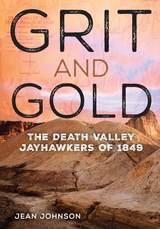 Grit and Gold: The Death Valley Jayhawkers of 1849
Jean Johnson
University of Nevada Press, 2018 No other Western settlement story is more famous than the Donner Party’s ill-fated journey through the Sierra Nevada Mountains. But a few years later and several hundred miles south, another group faced a similar situation just as perilous. Scrupulously researched and documented, Grit and Gold tells the story of the Death Valley Jayhawkers of 1849 and the young men who traveled by wagon and foot from Iowa to the California gold rush. The Jayhawkers’ journey took them through the then uncharted and unnamed hottest, driest, lowest spot in the continent—now aptly known as Death Valley.
After leaving Salt Lake City to break a road south to the Pacific Coast that would eliminate crossing the snowy Sierra Nevada, the party veered off the Old Spanish Trail in southern Utah to follow a mountaineer’s map portraying a bogus trail that claimed to cut months and hundreds of miles off their route to the gold country. With winter coming, however, they found themselves hopelessly lost in the mountains and dry valleys of southern Nevada and California. Abandoning everything but the shirts on their backs and the few oxen that became their pitiful meals, they turned their dreams of gold to hopes of survival.
Utilizing William Lorton’s 1849 diary of the trek from Illinois to southern Utah, the reminiscences of the Jayhawkers themselves, the keen memory of famed pioneer William Lewis Manly, and the almost daily diary of Sheldon Young, Johnson paints a lively but accurate portrait of guts, grit, and determination.
Grit and Ink: An Oregon Family’s Adventures in Newspapering, 1908–2018
William F. Willingham
Oregon State University Press, 2018 Beneath the 24/7 national news cycle and argument over “fake news,” there is a layer of journalism that communities absolutely depend upon. Grit and Ink offers a rare look inside the financial struggles and family dynamic that has kept a Pacific Northwest publishing group alive for more than a century. The newspapers of the Aldrich-Forrester-Bedford-Brown family depict the histories of towns like Pendleton, Astoria, John Day, Enterprise, and Long Beach, Washington. Written by noted historian William Willingham, Grit and Ink describes threats presented by the Ku Klux Klan, the Great Astoria Fire of 1923, the Great Depression, the Aryan Nation, the Malheur National Wildlife Refuge occupation, the Digital Revolution, and more.
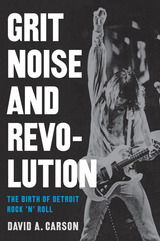 Grit, Noise, and Revolution: The Birth of Detroit Rock 'n' Roll
David A. Carson
University of Michigan Press, 2011 ". . . a great blow-by-blow account of an exciting and still-legendary scene."
---Marshall Crenshaw
From the early days of John Lee Hooker to the heyday of Motown and beyond, Detroit has enjoyed a long reputation as one of the crucibles of American pop music. In Grit, Noise, and Revolution, David Carson turns the spotlight on those hard-rocking, long-haired musicians-influenced by Detroit's R&B heritage-who ultimately helped change the face of rock 'n' roll.
Carson tells the story of some of the great garage-inspired, blue-collar Motor City rock 'n' roll bands that exemplified the Detroit rock sound: The MC5, Iggy Pop and the Stooges, Mitch Ryder and the Detroit Wheels, SRC, the Bob Seger System, Ted Nugent and the Amboy Dukes, and Grand Funk Railroad.
An indispensable guide for rock aficionados, Grit, Noise, and Revolution features stories of these groundbreaking groups and is the first book to survey Detroit music of the 1960s and 70s-a pivotal era in rock music history.
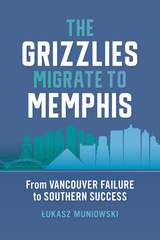 The Grizzlies Migrate to Memphis: From Vancouver Failure to Southern Success
Lukasz Muniowski
University of Tennessee Press, 2023 Following the 1992 Olympics in Barcelona and the success and celebrity of the Dream Team, the NBA became a global sensation. Around the same time, and despite ardent warnings from his parents, Arthur Griffiths purchased an NBA team that would become the expansion Vancouver Grizzlies. Who better to restore the Dream City, he thought, than the NBA?
Expansion franchises went to Vancouver and Toronto—the Canadian cities of choice as the NBA grew its international brand. But while Toronto thrived under the rising star of Vince Carter, Vancouver floundered under serial mismanagement. Six seasons wasted, the Grizzlies relocated to Memphis, where they clawed their way to victories both on the court and in the hearts of the city’s eager fanbase. More than two decades later, the Memphis Grizzlies continue to win, claiming NBA records for defeating, as an eight-seed club, the one-seed San Antonio Spurs in the 2011 playoffs (only the fourth franchise to have done so) and for defeating, in 2021, the Oklahoma City Thunder 152–73, the largest margin of victory in NBA history.
So why did the NBA fail in Vancouver but thrive in Memphis? This is the question Łukasz Muniowski seeks to answer in The Grizzlies Migrate to Memphis: From Vancouver Failure to Southern Success. In his pursuit, he explores how the Vancouver Grizzlies came to be, the team’s evolution and eventual relocation to Memphis, the success the Grizzlies found there, and the differences between the two phases of this NBA franchise.
Rooted strongly in media coverage of the Grizzlies franchise in both Vancouver and Memphis, The Grizzlies Migrate to Memphis offers a thoughtful blend of storytelling and analysis that will interest scholars and NBA enthusiasts alike.
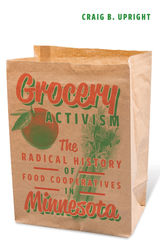 Grocery Activism: The Radical History of Food Cooperatives in Minnesota
Craig B. Upright
University of Minnesota Press, 2020 A key period in the history of food cooperatives that continues to influence how we purchase organic food today
Our notions of food co-ops generally don’t include images of baseball bat–wielding activists in the aisles. But in May 1975, this was the scene as a Marxist group known as the Co-op Organization took over the People’s Warehouse, a distribution center for more than a dozen small cooperative grocery stores in the Minneapolis area. The activist group’s goal: to curtail the sale of organic food. The People’s Warehouse quickly became one of the principal fronts in the political and social battle that Craig Upright explores in Grocery Activism. The story of the fraught relationship of new-wave cooperative grocery stores to the organic food industry, this book is an instructive case study in the history of activists intervening in capitalist markets to promote social change. Focusing on Minnesota, a state with both a long history of cooperative enterprise and the largest number of surviving independent cooperative stores, Grocery Activism looks back to the 1970s, when the mission of these organizations shifted from political activism to the promotion of natural and organic foods. Why, Upright asks, did two movements—promoting cooperative enterprise and sustainable agriculture—come together at this juncture? He analyzes the nexus of social movements and economic sociology, examining how new-wave cooperatives have pursued social change by imbuing products they sell with social values. Rather than trying to explain the success or failure of any individual cooperative, his work shows how members of this fraternity of organizations supported one another in their mutual quest to maintain fiscal solvency, promote better food-purchasing habits, support sustainable agricultural practices, and extol the virtues of cooperative organizing. A foundational chapter in the history of organic food, Grocery Activism clarifies the critical importance of this period in transforming the politics and economics of the grocery store in America.
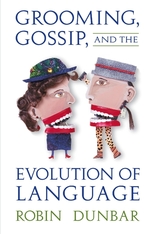 Grooming, Gossip, and the Evolution of Language
Robin Dunbar
Harvard University Press, 1996 What a big brain we have for all the small talk we make. It's an evolutionary riddle that at long last makes sense in this intriguing book about what gossip has done for our talkative species. Psychologist Robin Dunbar looks at gossip as an instrument of social order and cohesion--much like the endless grooming with which our primate cousins tend to their social relationships.
Apes and monkeys, humanity's closest kin, differ from other animals in the intensity of these relationships. All their grooming is not so much about hygiene as it is about cementing bonds, making friends, and influencing fellow primates. But for early humans, grooming as a way to social success posed a problem: given their large social groups of 150 or so, our earliest ancestors would have had to spend almost half their time grooming one another--an impossible burden. What Dunbar suggests--and his research, whether in the realm of primatology or in that of gossip, confirms--is that humans developed language to serve the same purpose, but far more efficiently. It seems there is nothing idle about chatter, which holds together a diverse, dynamic group--whether of hunter-gatherers, soldiers, or workmates.
Anthropologists have long assumed that language developed in relationships among males during activities such as hunting. Dunbar's original and extremely interesting studies suggest otherwise: that language in fact evolved in response to our need to keep up to date with friends and family. We needed conversation to stay in touch, and we still need it in ways that will not be satisfied by teleconferencing, email, or any other communication technology. As Dunbar shows, the impersonal world of cyberspace will not fulfill our primordial need for face-to-face contact.
From the nit-picking of chimpanzees to our chats at coffee break, from neuroscience to paleoanthropology, Grooming, Gossip, and the Evolution of Language offers a provocative view of what makes us human, what holds us together, and what sets us apart.
 The Groove of the Poem: Reading Philippe Beck
Jacques Rancière
University of Minnesota Press, 2016 “Music is the brute that shows.
It is the avowal of materials,
And stutters between its clanging of things.” How should one think this musical groove of the poem whose back and forth motion shuffles the material of ordinary language and revives the frozen speech of old chants? This question by renowned French thinker Jacques Rancière is the entry point for his earnest and careful reading of one of France’s most singular and important contemporary poets. For Rancière, Philippe Beck sets himself the task of a poetry after poetry whereby Beck re-writes and transforms the poems of the past, reanimating faded genres, poetizing the prose of popular tales and even commentaries regarding poems. To read and follow this groove traced as such cannot simply be done by way of taking the poems as objects of study. It supposes a dialogue regarding what these poems attempt to do as well as an idea of a poetry which serves as their foundation. This book on Philippe Beck is thus also a book made with him.
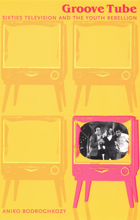 Groove Tube: Sixties Television and the Youth Rebellion
Aniko Bodroghkozy
Duke University Press, 2001 Critics often claim that prime-time television seemed immune—or even willfully blind—to the landmark upheavals rocking American society during the 1960s. Groove Tube is Aniko Bodroghkozy’s rebuttal of this claim. Filled with entertaining and enlightening discussions of popular shows of the time—such as The Monkees, The Smothers Brothers Comedy Hour, The Mod Squad—this book challenges the assumption that TV programming failed to consider or engage with the decade’s youth-lead societal changes.
Bodroghkozy argues that, in order to woo an increasingly lucrative baby boomer audience, television had to appeal to the social and political values of a generation of young people who were enmeshed in the hippie counterculture, the antiwar movement, campus protests, urban guerilla action—in general, a culture of rebellion. She takes a close look at the compromises and negotiations that were involved in determining TV content, as well as the ideological difficulties producers and networks faced in attempting to appeal to a youthful cohort so disaffected from dominant institutions. While programs that featured narratives about hippies, draft resisters, or revolutionaries are examined under this lens, Groove Tube doesn’t stop there: it also examines how the nation’s rebellious youth responded to these representations. Bodroghkozy explains how, as members of the first “TV generation,” some made sense of their societal disaffection in part through their childhood experience with this powerful new medium.
Groove Tube will interest sociologists, American historians, students and scholars of television and media studies, and others who want to know more about the 1960s.
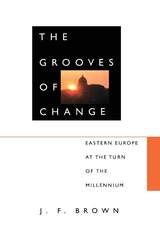 The Grooves of Change: Eastern Europe at the Turn of the Millennium
J.F. Brown
Duke University Press, 2001 The Grooves of Change is the culmination of J. F. Brown’s esteemed career as an analyst of Eastern Europe. He traces events in this diverse and disruption-riddled region from the communist era to the years of transition after the fall of the Berlin Wall to the present. Brown also provides specific analyses of the development of liberal democratic culture in the former communist countries of Eastern Europe—Albania, Bulgaria, the Czech Republic, Slovakia, Hungary, Poland, Romania, and the successor states of Yugoslavia.
While acknowledging that the term “Eastern Europe” began to fall into disuse with the end of the cold war, Brown uses it as a framework for discussing the enduring features of the modern history of this region: its basic continuity, the prominence of ethnic and national factors, and its dependence on great powers or combinations of powers outside it. He explains the significance of the growing gulf between East Central Europe and South Eastern Europe, the overall political and economic deprivation and its effect on the people, the urgency of change, and the complex dynamics within Eastern Europe that have defied definitions and generalization. Finally, Brown points to the need for continuing assistance by the United States and the West and suggests what the twenty-first century may bring to this constantly changing part of the world.
Those seeking a clear overview of events in Eastern Europe during the recent psat and the state of these nations now will benefit from this incisive study by J. F. Brown.
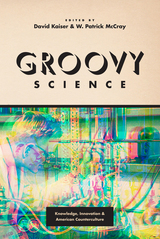 Groovy Science: Knowledge, Innovation, and American Counterculture
Edited by David Kaiser and W. Patrick McCray
University of Chicago Press, 2016 In his 1969 book The Making of a Counterculture, Theodore Roszak described the youth of the late 1960s as fleeing science “as if from a place inhabited by plague,” and even seeking “subversion of the scientific worldview” itself. Roszak’s view has come to be our own: when we think of the youth movement of the 1960s and early 1970s, we think of a movement that was explicitly anti-scientific in its embrace of alternative spiritualities and communal living.
Such a view is far too simple, ignoring the diverse ways in which the era’s countercultures expressed enthusiasm for and involved themselves in science—of a certain type. Rejecting hulking, militarized technical projects like Cold War missiles and mainframes, Boomers and hippies sought a science that was both small-scale and big-picture, as exemplified by the annual workshops on quantum physics at the Esalen Institute in Big Sur, or Timothy Leary’s championing of space exploration as the ultimate “high.” Groovy Science explores the experimentation and eclecticism that marked countercultural science and technology during one of the most colorful periods of American history.
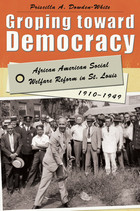 Groping toward Democracy: African American Social Welfare Reform in St. Louis, 1910-1949
Priscilla A. Dowden-White
University of Missouri Press, 2011 Decades before the 1960s, social reformers began planting the seeds for the Modern Civil Rights era. During the period spanning World Wars I and II, St. Louis, Missouri, was home to a dynamic group of African American social welfare reformers. The city’s history and culture were shaped both by those who would construct it as a southern city and by the heirs of New England abolitionism. Allying with white liberals to promote the era’s new emphasis on “the common good,” black reformers confronted racial segregation and its consequences of inequality and, in doing so, helped to determine the gradual change in public policy that led to a more inclusive social order.
In Groping toward Democracy: African American Social Welfare Reform in St. Louis, 1910–1949, historian Priscilla A. Dowden-White presents an on-the-ground view of local institution building and community organizing campaigns initiated by African American social welfare reformers. Through extensive research, the author places African American social welfare reform efforts within the vanguard of interwar community and neighborhood organization, reaching beyond the “racial uplift” and “behavior” models of the studies preceding hers. She explores one of the era’s chief organizing principles, the “community as a whole” idea, and deliberates on its relationship to segregation and the St. Louis black community’s methods of reform. Groping toward Democracy depicts the dilemmas organizers faced in this segregated time, explaining how they pursued the goal of full, uncontested black citizenship while still seeking to maximize the benefits available to African Americans in segregated institutions. The book’s nuanced mapping of the terrain of social welfare offers an unparalleled view of the progress brought forth by the early-twentieth-century crusade for democracy and equality.
By delving into interrelated developments in health care, education, labor, and city planning, Dowden-White deftly examines St. Louis’s African American interwar history. Her in-depth archival research fills a void in the scholarship of St. Louis’s social development, and her compelling arguments will be of great interest to scholars and teachers of American urban studies and social welfare history.
 Gropius: The Man Who Built the Bauhaus
Fiona MacCarthy
Harvard University Press, 2019 “This is an absolute triumph—ideas, lives, and the dramas of the twentieth century are woven together in a feat of storytelling. A masterpiece.”
—Edmund de Waal, ceramic artist and author of The White Road
The impact of Walter Gropius can be measured in his buildings—Fagus Factory, Bauhaus Dessau, Pan Am—but no less in his students. I. M. Pei, Paul Rudolph, Anni Albers, Philip Johnson, Fumihiko Maki: countless masters were once disciples at the Bauhaus in Berlin and at Harvard. Between 1910 and 1930, Gropius was at the center of European modernism and avant-garde society glamor, only to be exiled to the antimodernist United Kingdom during the Nazi years. Later, under the democratizing influence of American universities, Gropius became an advocate of public art and cemented a starring role in twentieth-century architecture and design.
Fiona MacCarthy challenges the image of Gropius as a doctrinaire architectural rationalist, bringing out the visionary philosophy and courage that carried him through a politically hostile age. Pilloried by Tom Wolfe as inventor of the monolithic high-rise, Gropius is better remembered as inventor of a form of art education that influenced schools worldwide. He viewed argument as intrinsic to creativity. Unusually for one in his position, Gropius encouraged women’s artistic endeavors and sought equal romantic partners. Though a traveler in elite circles, he objected to the cloistering of beauty as “a special privilege for the aesthetically initiated.”
Gropius offers a poignant and personal story—and a fascinating reexamination of the urges that drove European and American modernism.
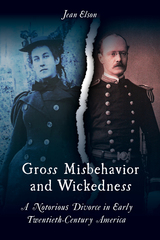 Gross Misbehavior and Wickedness: A Notorious Divorce in Early Twentieth-Century America
Jean Elson
Temple University Press, 2017 The bitter and public court battle waged between Nina and James Walker of Newport, Rhode Island from 1909 to 1916 created a sensation throughout the nation with lurid accounts of—and gossip about—their marital troubles. The ordeal of this high-society couple, who wed as much for status as for love, is one of the prime examples of the growing trend of women seeking divorce during the early twentieth century.
Gross Misbehavior and Wickedness—the charges Nina levied at James for his adultery (with the family governess) and extreme cruelty—recounts the protracted legal proceedings in juicy detail.
Jean Elson uses court documents, correspondence, journals, and interviews with descendants to recount the salacious case. In the process, she underscores how divorce—in an era when women needed husbands for economic support—was associated with women’s aspirations for independence and rights. The Walkers’ dispute, replete with plot twists and memorable characters, sheds light on a critical period in the evolution of American culture.
A Grotesque Animal
Amy Lee Lillard
University of Iowa Press, 2024 At the age of forty-three, Amy Lee Lillard learned she was autistic. She learned she was part of a community of unseen women who fell through the gaps due to medical bias and social stereotypes.
A Grotesque Animal explores the making, unmaking, and making again of a woman with an undiagnosed disorder. How did a working- class background and a deep-rooted Midwest culture of silence lead to hiding in plain sight for decades? How did sexuality and anger hide the roots of trauma among the women in her family? And what does it mean to be a queer, disabled, aging woman, a descendent of wild but tamed mothers and a survivor of the things patriarchy inflicts?
Through wide-ranging styles and a combination of personal storytelling and cultural analysis, Lillard dissects anger, sexuality, autistic masking, bodies, punk, and female annihilation to create a new picture of modern women.
 Grotowski's Bridge Made of Memory: Embodied Memory, Witnessing and Transmission in the Grotowski Work
Dominika Laster
Seagull Books, 2016 Considered one of the most influential theatre practitioners of the 20th century, Polish director Jerzy Grotowski revolutionized contemporary theatre in multiple ways. Perhaps best known for his notion of ‘poor theatre,’ Grotowski went beyond the confines of conventional theatre to systematically explore the possibilities of the human being in a performative context. In Grotowski’s Bridge Made of Memory, Dominika Laster analyzes core aspects of Grotowski’s work such as body-memory, vigilance, witnessing, verticality, and transmission, arguing that these performance praxes involve a deliberate blurring of the boundaries of the self and other. This comprehensive study traces key thematic threads across Grotowski’s research, examining lesser-known aspects of his work such as performance compositions structured around African and Afro-Caribbean traditional songs and ritual movement as well as textual material from the Christian Gnostic tradition. As an active process of research and questioning conducted through the “body-being” of the performer, Grotowski’s work represents a practical realization of the often highly theoretical and abstract discussions of one of the field’s main preoccupations: embodied practice as a way of knowing.
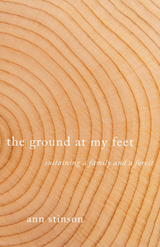 The Ground at My Feet: Sustaining a Family and a Forest
Ann Stinson
Oregon State University Press, 2021 Ann Stinson grew up on her family’s tree farm in southwestern Washington state, on a ridge above the Cowlitz River. After building a life in New York and Portland, she returned home at the age of fifty, when her brother’s death from cancer left her manager and co-owner of three hundred acres planted in Douglas fir, western red cedar, and ponderosa pine.
The Ground at My Feet is a memoir about loss and grief as well as a portrait of a family, a region, and an industry. Combining personal story and research, Stinson weaves essays, poems, history, and science into a rich and layered account of life in a family forest in the Pacific Northwest. She maps interactions between the land and its people over two centuries: the Cowlitz peoples, homesteaders, and several generations of logging families who have worked the property. She follows her family’s logs as they become lumber for fence boards and suburban homes, touring a local cedar mill and traveling with her father to visit mills in Japan.
Stinson adds a landowner’s voice to conversations about the human tendency to demand more of the land than it can sustain. With its uniquely personal view of the Pacific Northwest’s timber and forestry heritage, The Ground at My Feet is an engaging addition to the literature of the landscape and ecology of the West.
 The Ground Beneath the Cross: The Theology of Ignacio Ellacuría
Kevin F. Burke, SJ
Georgetown University Press, 2000 This book is the first comprehensive analysis of the thought of Ignacio Ellacuría, the Jesuit philosopher-theologian martyred for his work on behalf of Latin America's oppressed peoples. While serving as president of the Jesuit-run University of Central America in the midst of El Salvador's brutal civil war, Ellacuría was also a prolific writer. His advocacy on behalf of the country's persecuted majority provoked the enmity of the Salvadoran political establishment. On November 16, 1989, members of the Salvadoran military entered the university's campus and murdered Ellacuría, along with five other Jesuit priests and two women. Kevin F. Burke, SJ, shows why Ellacuría is significant not only as a martyr but also as a theologian. Ellacuría effectively integrated philosophy, history, anthropology, and sociopolitical analysis into his theological reflections on salvation, spirituality, and the church to create an original contribution to liberation theology. Ellacuría's writings directly address one of the most vexing issues in theology today: can theologians account for the demands arising from both the particularity of their various social-historical situations and also the universal claims of Christian revelation? Burke explains how Ellacuría bases theology in a philosophy of historical reality—the "ground beneath the cross"—and interprets the suffering of "the crucified peoples" in the light of Jesus' crucifixion. Ellacuría thus inserts the theological realities of salvation and transcendence squarely within the course of human events, and he connects these to the Christian mandate to "take the crucified peoples down from their crosses."
Placing Ellacuría's thought in the context of historical trends within the Roman Catholic Church, particularly Vatican II and the rise of liberation theology in Latin America, Burke argues that Ellacuría makes a distinctive contribution to contemporary Catholic theology.
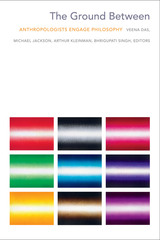 The Ground Between: Anthropologists Engage Philosophy
Veena Das, Michael Jackson, Arthur Kleinman, and Bhrigupati Singh, eds.
Duke University Press, 2014 The guiding inspiration of this book is the attraction and distance that mark the relation between anthropology and philosophy. This theme is explored through encounters between individual anthropologists and particular regions of philosophy. Several of the most basic concepts of the discipline—including notions of ethics, politics, temporality, self and other, and the nature of human life—are products of a dialogue, both implicit and explicit, between anthropology and philosophy. These philosophical undercurrents in anthropology also speak to the question of what it is to experience our being in a world marked by radical difference and otherness. In The Ground Between, twelve leading anthropologists offer intimate reflections on the influence of particular philosophers on their way of seeing the world, and on what ethnography has taught them about philosophy. Ethnographies of the mundane and the everyday raise fundamental issues that the contributors grapple with in both their lives and their thinking. With directness and honesty, they relate particular philosophers to matters such as how to respond to the suffering of the other, how concepts arise in the give and take of everyday life, and how to be attuned to the world through the senses. Their essays challenge the idea that philosophy is solely the province of professional philosophers, and suggest that certain modalities of being in the world might be construed as ways of doing philosophy. Contributors. João Biehl, Steven C. Caton, Vincent Crapanzano, Veena Das, Didier Fassin, Michael M. J. Fischer, Ghassan Hage, Clara Han, Michael Jackson, Arthur Kleinman, Michael Puett, Bhrigupati Singh
Ground Penetrating Radar
David J. Daniels
The Institution of Engineering and Technology, 2004 Ground penetrating radar has come to public attention in recent criminal investigations, but has been a developing and maturing remote sensing field for some time. In the light of recent growth of the technique to a wide range of applications, the need for an up-to-date reference text has become pressing. This fully revised and expanded edition of David Daniels' bestselling text, Surface-Penetrating Radar (IEE, 1996) presents, for the non-specialist user or engineer, all the key elements of this technique, which span several disciplines including electromagnetics, geophysics and signal processing. The book enables the user to assess the potential of the technique and apply it effectively with current technology.
 Ground Stone Analysis: A Technological Approach
Jenny L Adams
University of Utah Press, 2002
Archaeologists refer to stone artifacts that are altered by or used to alter other items through abrasion, pecking, or polishing as "ground stone." This includes mortars, and pestles used to process vegetal materials, pigments, clays, and tempers; abraders, polishing stones, and hammerstones for manufacturing other artifacts; and artifacts shaped by abrasion or pecking, such as axes, pipes, figurines, ornaments, and architectural pieces. Because there is a fuzzy line between flaked and ground stone artifacts, some analysts state that ground stone includes any stone item not considered flaked.
This manual presents a flexible yet structured method for analyzing stone artifacts and classifying them in meaningful categories. The analysis techniques record important attributes based on design, manufacture, and use.
Part I contains discussions on determining function, classification, attributes of grinding technology, use-wear analysis, modeling tool use, utilization of ethnographic and experimental resources, and research suggestions. Part II contains definitions and descriptions of artifact types. Here the author also seeks to unravel the knot that has developed around conflicting application of terms.
A significant reference for any archaeological fieldworker or student who encounters such artifacts.
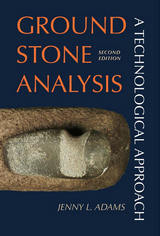 Ground Stone Analysis: A Technological Approach
Jenny L. Adams
University of Utah Press, 2014 Second Edition Archaeologists define stone artifacts that are altered by or used to alter other items through abrasion, pecking, or polishing as “ground stone.” This includes mortars and pestles, abraders, polishers stones, and hammerstones, and artifacts shaped by abrasion or pecking, such as axes, pipes, figurines, ornaments, and architectural pieces. The first edition of Ground Stone Analysis sparked interest around the world. In the decade following its publication, there have been many advances in scientific technology and developments in ethnographic and experimental research. The second edition incorporates these advances, including examples of international research that have utilized a technological approach to ground stone analysis. This study presents a flexible yet structured method for analyzing and classifying stone artifacts. These techniques record important attributes based on design, manufacturing, and use and are applicable to any collection in the world. The methods presented guide quantitative and qualitative assessments of artifacts and assemblages. Recording forms and instructions for completing them will be available on the University of Utah Press’s open access portal at www.UofUpress.com. Ground Stone Analysis is an important, useful reference for any archaeological field worker or student who encounters ground stone artifacts and is interested in learning more about the people who used them. Click here to view Appendices A-F
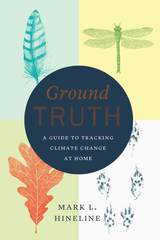 Ground Truth: A Guide to Tracking Climate Change at Home
Mark L. Hineline
University of Chicago Press, 2018 Before you read this book, you have homework to do. Grab a notebook, go outside, and find a nearby patch of nature. What do you see, hear, feel, and smell? Are there bugs, birds, squirrels, deer, lizards, frogs, or fish, and what are they doing? What plants are in the vicinity, and in what ways are they growing? What shape are the rocks, what texture is the dirt, and what color are the bodies of water? Does the air feel hot or cold, wet or dry, windy or still? Everything you notice, write it all down.
We know that the Earth’s climate is changing, and that the magnitude of this change is colossal. At the same time, the world outside is still a natural world, and one we can experience on a granular level every day. Ground Truth is a guide to living in this condition of changing nature, to paying attention instead of turning away, and to gathering facts from which a fuller understanding of the natural world can emerge over time.
Featuring detailed guidance for keeping records of the plants, invertebrates, amphibians, birds, and mammals in your neighborhood, this book also ponders the value of everyday observations, probes the connections between seasons and climate change, and traces the history of phenology—the study and timing of natural events—and the uses to which it can be put. An expansive yet accessible book, Ground Truth invites readers to help lay the groundwork for a better understanding of the nature of change itself.
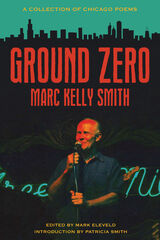 Ground Zero: A Collection of Chicago Poems
Marc Kelly Smith; Edited by Mark Eleveld; With an introduction by Patricia Smith
Northwestern University Press, 2021 Inception and implosion, Chicago’s grit and grandiosity all come together in the finite poetic power of the original Slam igniter, renowned poet Marc Kelly Smith and his retrospect denotation, Ground Zero.
A cultural, community, and adversarial figure, Smith has challenged the status quo and raised new questions about an environment in a state of continuous calamity. Smith’s power and influence have inspired celebrated figures who cut their teeth on both the stage and the page under his watchful eye—always speaking in the traditions of Carl Sandburg and Gwendolyn Brooks. Ground Zero challenges but pays homage to the thousand underbellies of Chicago with Smith’s wicked, cigarette-in-the-beer language: “I ain’t diggin’ no concrete coffin, / No backyard mausoleum / To keep me a pickle sweet aplenty / Plied with sardines and pork sausage wieners / Livin’ out the chance that some bubble-flesh victim / Will come puckered up and scabby lipped / To kiss me in the name of a new mankind.”
Ground Zero leaves no doubt. The Slampapi / instigator / visionary / you-may-love-me-or-hate-me-but-my-history-will-always-be-chiseled-in-everything-the-poetry-world-does-next collects a survey of his land and his experience, no matter how beautiful or flawed. This book lets the landmines of imagery and Chicago’s slow and uneasy drawl showcase one of our most original voices.
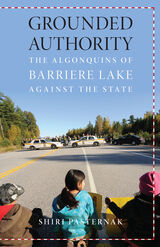 Grounded Authority: The Algonquins of Barriere Lake against the State
Shiri Pasternak
University of Minnesota Press, 2017 Western Political Science Association's Clay Morgan Award for Best Book in Environmental Political Theory
Canadian Studies Network Prize for the Best Book in Canadian Studies
Nominated for Best First Book Award at NAISA
Honorable Mention: Association for Political and Legal Anthropology Book Prize
Since Justin Trudeau’s election in 2015, Canada has been hailed internationally as embarking on a truly progressive, post-postcolonial era—including an improved relationship between the state and its Indigenous peoples. Shiri Pasternak corrects this misconception, showing that colonialism is very much alive in Canada. From the perspective of Indigenous law and jurisdiction, she tells the story of the Algonquins of Barriere Lake, in western Quebec, and their tireless resistance to federal land claims policy. Grounded Authority chronicles the band’s ongoing attempts to restore full governance over its lands and natural resources through an agreement signed by settler governments almost three decades ago—an agreement the state refuses to fully implement. Pasternak argues that the state’s aversion to recognizing Algonquin jurisdiction stems from its goal of perfecting its sovereignty by replacing the inherent jurisdiction of Indigenous peoples with its own, delegated authority. From police brutality and fabricated sexual abuse cases to an intervention into and overthrow of a customary government, Pasternak provides a compelling, richly detailed account of rarely documented coercive mechanisms employed to force Indigenous communities into compliance with federal policy. A rigorous account of the incredible struggle fought by the Algonquins to maintain responsibility over their territory, Grounded Authority provides a powerful alternative model to one nation’s land claims policy and a vital contribution to current debates in the study of colonialism and Indigenous peoples in North America and globally.
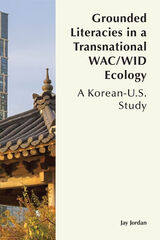 Grounded Literacies in a Transnational WAC/WID Ecology: A Korean-U.S. Study
Jay Jordan
University Press of Colorado, 2022 In this book, Jay Jordan draws from WAC/WID, second language writing, rhetoric and composition, and scholarship on English teaching and learning in South Korea to describe the ways writing as a privileged literate activity shapes and is shaped by the development of one university’s transnational campuses. Through grounded analysis of three years of student and faculty surveys and interviews, writing samples, observations, and through personal narrative about the author’s experience at both campuses, Grounded Literacies in a Transnational WAC/WID Ecology closely describes and theorizes the intellectual, social, and material complexities of cross-border educational efforts. Despite the smoothly marketable promise of many U.S.-based international educational experiments, the mutual embeddedness of campus, university, host city, student and faculty experiences, differing expectations, national aspirations, and individual and collective goals and anxieties richly nuances the argument that literacies can never be reduced to classroom or curricular plans.
Grounded: Perpetual Flight . . . and Then the Pandemic
Christopher Schaberg
University of Minnesota Press, 2020 As commercial flight is changing dramatically and its future remains unclear, a look at how we got here
Grounded: Perpetual Flight . . . and Then the Pandemic considers the time leading up to the COVID-19 pandemic and the ensuing global plummet in commercial flight. Mobility studies scholar Christopher Schaberg tours the newly opened airport terminal outside of New Orleans (MSY) in late 2019, and goes on to survey the broad cultural landscape of empty airports and grounded planes in the early months of the novel coronavirus’s spread in 2020. The book culminates in a reflection on the future of air travel: what may unfold, and what parts of commercial flight are almost certainly relics of the past. Grounded blends journalistic reportage with cultural theory and philosophical inquiry in order to offer graspable insights as well as a stinging critique of contemporary air travel.
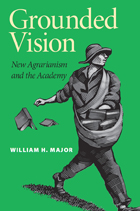 Grounded Vision: New Agrarianism and the Academy
William H. Major
University of Alabama Press, 2011 Normal0falsefalsefalseMicrosoftInternetExplorer4 Issues of ecology—both as they appear in the works of nature writers and in the works of literary writers for whom place and the land are central issues—have long been of interest to literary critics and have given rise over the last two decades to the now-firmly established field of ecocriticism. At the same time, a new group of ecology advocates has emerged since the 1960s: contemporary agrarian writers such as Wendell Berry, Wes Jackson, and Gene Logsdon draw their basic premises from the Nashville Agrarians of the 1920s and 1930s, and focus strictly on the actual intersections of land and people, striving to enact a healthy coexistence between the two. For agrarians, theory and academic philosophizing often seem inconsequential and even counterproductive. In Grounded Vision, William Major puts contemporary agrarian thinking into a conciliatory and productive dialogue with academic criticism. He argues that the lack of participation in academic discussions means a loss to both agrarians and academics, since agrarian thought can enrich other ongoing discussions on topics such as ecocriticism, postmodernism, feminism, work studies, and politics—especially in light of the recent upsurge in grassroots cultural and environmental activities critical of modernity, such as the sustainable agriculture and slow food movements. Major also focuses on agrarianism itself—the valuable relationship it advocates between workers and the land they work, the politics involved in maintaining healthy communities, and the impact of contemporary agrarian writers on the world today. Major thus shows contemporary agrarianism to be a successful instigator of the same social examination for which much academic criticism strives. Major illuminates the ways in which agrarianism’s wide scope and often-unyielding demands are founded in, and work toward, a deep respect and understanding of the connections between the health of the land and its peoples, communities, and economies, and he argues that it raises questions about work, leisure, consumerism, and science to such a degree that it leaves little doubt how fundamental agriculture is to culture.
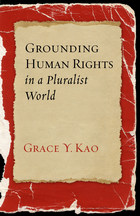 Grounding Human Rights in a Pluralist World
Grace Y. Kao
Georgetown University Press, 2011 In 1948 the General Assembly of the United Nations adopted the Universal Declaration of Human Rights which declared that every human being, without “distinction of any kind,” possesses a set of morally authoritative rights and fundamental freedoms that ought to be socially guaranteed. Since that time, human rights have arguably become the cross-cultural moral concept and evaluative tool to measure the performance—and even legitimacy—of domestic regimes. Yet questions remain that challenge their universal validity and theoretical bases. Some theorists are ”maximalist” in their insistence that human rights must be grounded religiously, while an opposing camp attempts to justify these rights in “minimalist” fashion without any necessary recourse to religion, metaphysics, or essentialism. In Grounding Human Rights in a Pluralist World, Grace Kao critically examines the strengths and weaknesses of these contending interpretations while also exploring the political liberalism of John Rawls and the Capability Approach as proposed by economist Amartya Sen and philosopher Martha Nussbaum. By retrieving insights from a variety of approaches, Kao defends an account of human rights that straddles the minimalist–maximalist divide, one that links human rights to a conception of our common humanity and to the notion that ethical realism gives the most satisfying account of our commitment to the equal moral worth of all human beings.
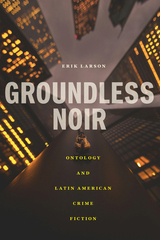 Groundless Noir: Ontology and Latin American Crime Fiction
Erik Larson
Bucknell University Press, 2026 This philosophical study of Latin American noir fiction poses the question: what if precarity and uncertainty aren’t just themes of the genre, but ways of being in the world? Emerging from a region immersed in violence, trauma, and political instability, the novela negra reveals not just disillusionment but a desire to adapt to, even dwell within, chaos. In the hands of writers like Ricardo Piglia, Roberto Bolaño, and Patricia Melo, savvy detectives and antiheroes navigate a world in which meaning constantly shifts and certainty is elusive. Blending literary analysis with philosophical inquiry, Larson draws on Heideggerian ontology to demonstrate how the noir novel becomes a mode of existence—grounded in its very groundlessness. Rather than offering resolution, these novels embody a paradoxical desire: to engage crisis while also adapting to it. In doing so, they become both ideological and pedagogical—existential fiction for an uncertain world.
Published by Bucknell University Press. Distributed worldwide by Rutgers University Press.
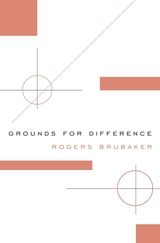 Grounds for Difference
Rogers Brubaker
Harvard University Press, 2015 Offering fresh perspectives on perennial questions of ethnicity, race, nationalism, and religion, Rogers Brubaker makes manifest the forces that shape the politics of diversity and multiculturalism today. In a lucid and wide-ranging analysis, he contends that three recent developments have altered the stakes and the contours of the politics of difference: the return of inequality as a central public concern, the return of biology as an asserted basis of racial and ethnic difference, and the return of religion as a key terrain of public contestation.
“Grounds for Difference is a subtle, original, and comprehensive book. All the hallmarks of Brubaker’s earlier work, such as the conceptual clarity, the theoretical rigor—grounded in a well-researched and well-informed analysis—the crisp writing style, and the impeccable sociological reasoning are displayed here. There is a wealth of original ideas developed in this book that requires much careful reading and unpacking.”
—Sinisa Malešević, H-Net Reviews
“This is an imposing collection that will be another milestone in the literature of ethnicity and nationalism.”
—Christian Joppke, University of Bern
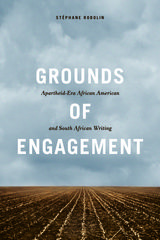 Grounds of Engagement: Apartheid-Era African-American and South African Writing
Stephane Robolin
University of Illinois Press, 2019 Part literary history, part cultural study, Grounds of Engagement examines the relationships and exchanges between black South African and African American writers who sought to create common ground throughout the antiapartheid era. Stéphane Robolin argues that the authors' geographic imaginations crucially defined their individual interactions and, ultimately, the literary traditions on both sides of the Atlantic. Subject to the tyranny of segregation, authors such as Richard Wright, Bessie Head, Langston Hughes, Gwendolyn Brooks, Keorapetse Kgositsile, Michelle Cliff, and Richard Rive charted their racialized landscapes and invented freer alternative geographies. They crafted rich representations of place to challenge the stark social and spatial arrangements that framed their lives. Those representations, Robolin contends, also articulated their desires for black transnational belonging and political solidarity. The first book to examine U.S. and South African literary exchanges in spatial terms, Grounds of Engagement identifies key moments in the understudied history of black cross-cultural exchange and exposes how geography serves as an indispensable means of shaping and reshaping modern racial meaning.
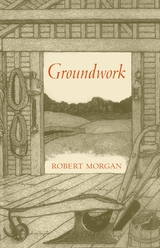 Groundwork
Robert Morgan
Ohio University Press, 1979 Published in 1979 by Gnomon Press In Groundwork, Robert Morgan offers a vivid poetic excavation of Appalachian life, memory, and landscape. Drawing deeply from his upbringing in the Blue Ridge Mountains of North Carolina, Morgan crafts a collection that is both intimate and elemental. These poems explore the textures of rural existence—its labor, rituals, and natural rhythms—through language that is spare, musical, and richly evocative. Morgan’s verse is rooted in place, yet it transcends regionalism through its mythic resonance and emotional clarity. He sifts through family lore, childhood recollections, and local history to recover what he calls “pieces of the morgenland”—a personal and cultural terrain shaped by hardship, resilience, and wonder. The poems in Groundwork are populated by grandparents, farmers, and mountain folk, rendered with a quiet reverence that elevates the everyday to the numinous. This collection marks a foundational moment in Morgan’s career, establishing the poetic voice that would inform his later fiction and nonfiction. With titles like “Mountain Bride,” “Burning the Hornet’s Nest,” and “Baptism of Fire,” the poems evoke both the physical and spiritual dimensions of Appalachian life. Groundwork remains one of Morgan’s most concentrated and enduring tributes to the Southern mountains and their people. Essential for readers of American poetry, Appalachian studies, and environmental literature, Groundwork is a lyrical testament to the power of memory and place.
 Group Actions in Ergodic Theory, Geometry, and Topology: Selected Papers
Robert J. Zimmer
University of Chicago Press, 2019 Robert J. Zimmer is best known in mathematics for the highly influential conjectures and program that bear his name. Group Actions in Ergodic Theory, Geometry, and Topology: Selected Papers brings together some of the most significant writings by Zimmer, which lay out his program and contextualize his work over the course of his career. Zimmer’s body of work is remarkable in that it involves methods from a variety of mathematical disciplines, such as Lie theory, differential geometry, ergodic theory and dynamical systems, arithmetic groups, and topology, and at the same time offers a unifying perspective. After arriving at the University of Chicago in 1977, Zimmer extended his earlier research on ergodic group actions to prove his cocycle superrigidity theorem which proved to be a pivotal point in articulating and developing his program. Zimmer’s ideas opened the door to many others, and they continue to be actively employed in many domains related to group actions in ergodic theory, geometry, and topology.
In addition to the selected papers themselves, this volume opens with a foreword by David Fisher, Alexander Lubotzky, and Gregory Margulis, as well as a substantial introductory essay by Zimmer recounting the course of his career in mathematics. The volume closes with an afterword by Fisher on the most recent developments around the Zimmer program.
Group Identity and Religious Individuality in Late Antiquity
Eric Rebillard
Catholic University of America Press, 2015 To understand the past, we necessarily group people together and, consequently, frequently assume that all of its members share the same attributes. In this ground-breaking volume, Eric Rebillard and Jörg Rüpke bring renowned scholars together to challenge this norm by seeking to rediscover the individual and to explore the dynamics between individuals and the groups to which they belong.
 Group Treatment in Psychotherapy: A Report of Experience
Robert G. Hinckley and Lydia Hermann
University of Minnesota Press, 1951
Group Treatment in Psychotherapy was first published in 1951. Minnesota Archive Editions uses digital technology to make long-unavailable books once again accessible, and are published unaltered from the original University of Minnesota Press editions.
The rapid development of group therapy in general in the past decade has pointed up the need for a clear definition of the aims of such therapy and the processes by which these aims may be achieved. This book answers that need by presenting an analysis of the group therapeutic process in simple, understandable style with a generous use of concrete examples for a vivid demonstration of the principles involved.
Dr. Hinckley and Miss Hermann base this analysis on their experience with group therapy for the past ten years in the Students' Mental Hygiene Clinic at the University of Minnesota. Although certain theoretical assumptions underlie the analysis, the report does not aim to discuss or evaluate theories. The purpose is, rather, to help all who are concerned with human relations to understand the potentialities and limitations of group therapy for their own particular needs.
Psychological counselors and guidance workers, social workers and especially those engaged in social group work, educators, medical personnel, and others whose work is associated with psychotherapy will find here an informative and practical guide.
The authors have quoted liberally from verbatim records of actual group sessions to show how a group operates therapeutically and what a therapist should do and not do. A final chapter follows a group through a year of weekly meetings to show the step-by-step progress of therapy. Statistics presented in the appendix show the increased amount of therapy resulting from group treatment.
Forewords are contributed by C. Gilbert Wrenn, president of the Division of Counseling and Guidance, American Psychological Association, and John C. Kidneigh, director of the School of Social Work, University of Minnesota.
 Group-Based Modeling of Development
Daniel S. Nagin
Harvard University Press, 2005 This book provides a systematic exposition of a group-based statistical method for analyzing longitudinal data in the social and behavioral sciences and in medicine. The methods can be applied to a wide range of data, such as that describing the progression of delinquency and criminality over the life course, changes in income over time, the course of a disease or physiological condition, or the evolution of the socioeconomic status of communities. Using real-world research data from longitudinal studies, the book explains and applies this method for identifying distinctive time-based progressions called developmental trajectories. Rather than assuming the existence of developmental trajectories of a specific form before statistical data analysis begins, the method allows the trajectories to emerge from the data itself. Thus, in an analysis of data on Montreal school children, it teases apart four distinct trajectories of physical aggression over the ages 6 to 15, examines predictors of these trajectories, and identifies events that may alter the trajectories.
Aimed at consumers of statistical methodology, including social scientists, criminologists, psychologists, and medical researchers, the book presents the statistical theory underlying the method with a mixture of intuition and technical development.
 Groups, Interests, and U.S. Public Policy
William P. Browne
Georgetown University Press, 1998 Synthesizing theory, personal research, and prior studies on interest groups and other lobbies, William P. Browne offers a new, insightful overview of organized political interests and explains how and why they affect public policy. Drawing on his extensive experience researching interest groups, Browne assesses the impact that special interests have long had in shaping policy. He explains how they fit into the policymaking process and into society, how they exercise their influence, and how they adapt to changing circumstances. Browne describes the diversity of existing interests-associations, businesses, foundations, churches, and others-and explores the multidimensional tasks of lobbying, from disseminating information through making financial contributions to cultivating the media. He shows how organized interests target not just the public and policymakers but even other interest groups, and how they create policy niches as a survival strategy. He also looks at winnable issues, contrasts them with more difficult ones, and explains what makes the difference. Groups, Interests, and U.S. Public Policy is a serious study written in a lighthearted tone. It offers political scientists a new theory of how and why interest groups influence public policy while it enlightens students and general readers about how policy is actually shaped in America.
Groups of Circle Diffeomorphisms
Andrés Navas
University of Chicago Press, 2011 In recent years scholars from a variety of branches of mathematics have made several significant developments in the theory of group actions. Groups of Circle Diffeomorphisms systematically explores group actions on the simplest closed manifold, the circle. As the group of circle diffeomorphisms is an important subject in modern mathematics, this book will be of interest to those doing research in group theory, dynamical systems, low dimensional geometry and topology, and foliation theory. The book is mostly self-contained and also includes numerous complementary exercises, making it an excellent textbook for undergraduate and graduate students.
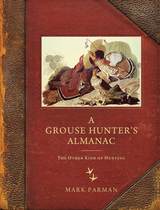 A Grouse Hunter’s Almanac: The Other Kind of Hunting
Mark Parman
University of Wisconsin Press, 2017 Like that earlier grouse hunter Aldo Leopold, Mark Parman takes to the woods when the aspens are smoky gold. Here, in an evocative almanac that chronicles the early season of the grouse hunt through its end in the snows of January, Parman follows his dog through the changing trees and foliage, thrills to the sudden flush of beating wings, and holds a bird in hand, thankful for the meal it will provide. Distilling twenty seasons of grouse hunting into these essays, he writes of old dogs and gun lust, cover and clear cutting, climate change, companions male and female, wildlife art, and stumps. A Grouse Hunter's Almanac delves into the mind of a hunter, exploring the Northwoods with an eye for more than just game.
"Notable and quotable. Parman stakes out original territory and provides a vivid snapshot of the Northwoods."—John Motoviloff, author of Wisconsin Wildfoods: 100 Recipes for Badger State Bounties
"Extremely rich and detailed. Parman puts forth original and genuine experiences."—Richard Yatzeck, author of Hunting the Edges
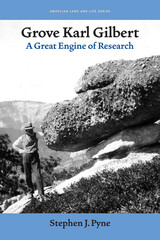 Grove Karl Gilbert: A Great Engine of Research
Stephen J. Pyne
University of Iowa Press, 1980 As Stephen Pyne reveals in his biography, few other scientists can match Grove Karl Gilbert’s range of talents. A premier explorer of the American West who made major contributions to the cascade of new discoveries about the earth, Gilbert described two novel forms of mountain building, invented the concept of the graded stream, inaugurated modern theories of lunar origin, helped found the science of geomorphology, and added to the canon of conservation literature.
Gilbert knew most of geology's grand figures--including John Wesley Powell, Clarence Dutton, and Clarence King--and Pyne's chronicle of the imperturbable, quietly unconventional Gilbert is couterpointed with sketches of these prominent scientists. The man who wrote that "happiness is sitting under a tent with walls uplifted, just after a brief shower,", created answers to the larger questions of the earth in ways that have become classics of his science.
 The Groves Conference on Marriage and Family: History and Impact on Family Science: Groves Monographs on Marriage and Family (Volume 2)
Roger H Rubin
Michigan Publishing The Groves Conference on Marriage and Family: History & Impact on Family Science offers family scholars and practitioners a detailed history of Groves from its origin in 1934 to the present day. Founded by Ernest R. Groves as a cutting edge organization for understanding families, it was first held at the Carolina Inn on the campus of the University of North Carolina at Chapel Hill, seen on the front cover. The Groves Conference on Marriage and Family continues to meet each year across the United States and internationally to explore how families can be resilient in the face of changes that will affect their daily lives—now and in the future. Groves Monographs on Marriage and Family is an edited book series based on the annual meetings of the Groves Conference on Marriage and Family, an interdisciplinary, interprofessional organization of limited invited membership founded in 1934. Groves Monographs publishes work on the leading edges of theory development and empirical research in the field of family studies. Individual volumes are edited by the chairs of the annual Groves Conferences and include peer-reviewed chapters by the conference presenters and invited authors. Topics are timely and provocative with diverse themes.
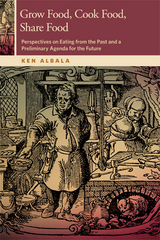 Grow Food, Cook Food, Share Food: Perspectives on Eating from the Past and a Preliminary Agenda for the Future
Ken Albala
Oregon State University Press, 2013 Grow Food, Cook Food, Share Food is a practical food history lesson, an editorial on our use of packaged convenience foods, and a call to arms—of the kitchen variety. Mixing food writing and history, adding a dash of cookbook, author and scholar Ken Albala shares the story of what happened when he started taking food history seriously and embarked on a mission to grow, cook, and share food in the ways that people did in the past.
Albala considers what the traditions we have needlessly lost have to offer us today: a serious appreciation for the generative power of the earth, the great pleasures of cooking food, and the joy of sharing food with family, friends, and even strangers. In Albala’s compelling book, obscure seventeenth-century Italian farmer-nobles, Roman statesmen, and quirky cheesemakers from the fifteenth and sixteenth centuries all offer lessons about our relationship with the food we eat.
A rare form of historical activism, Grow Food, Cook Food, Share Food is written for anyone who likes to eat, loves to cook, and knows how to throw a great dinner party.
An OSU Press Horning Visiting Scholars Publication.
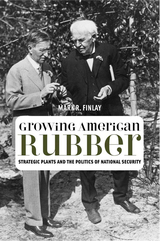 Growing American Rubber: Strategic Plants and the Politics of National Security
Finlay, Mark R
Rutgers University Press, 2009 Growing American Rubber explores America's quest during tense decades of the twentieth century to identify a viable source of domestic rubber. Straddling international revolutions and world wars, this unique and well-researched history chronicles efforts of leaders in business, science, and government to sever American dependence on foreign suppliers. Mark Finlay plots out intersecting networks of actors including Thomas Edison, Henry Ford, prominent botanists, interned Japanese Americans, Haitian peasants, and ordinary citizensùall of whom contributed to this search for economic self-sufficiency. Challenging once-familiar boundaries between agriculture and industry and field and laboratory, Finlay also identifies an era in which perceived boundaries between natural and synthetic came under review. Although synthetic rubber emerged from World War II as one solution, the issue of ever-diminishing natural resources and the question of how to meet twenty-first-century consumer, military, and business demands lingers today.
 Growing American Rubber: Strategic Plants and the Politics of National Security
Finlay, Mark R
Rutgers University Press, 2009 Growing American Rubber explores America's quest during tense decades of the twentieth century to identify a viable source of domestic rubber. Straddling international revolutions and world wars, this unique and well-researched history chronicles efforts of leaders in business, science, and government to sever American dependence on foreign suppliers. Mark Finlay plots out intersecting networks of actors including Thomas Edison, Henry Ford, prominent botanists, interned Japanese Americans, Haitian peasants, and ordinary citizensùall of whom contributed to this search for economic self-sufficiency. Challenging once-familiar boundaries between agriculture and industry and field and laboratory, Finlay also identifies an era in which perceived boundaries between natural and synthetic came under review. Although synthetic rubber emerged from World War II as one solution, the issue of ever-diminishing natural resources and the question of how to meet twenty-first-century consumer, military, and business demands lingers today.
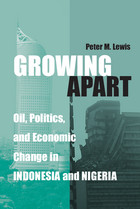 Growing Apart: Oil, Politics, and Economic Change in Indonesia and Nigeria
Peter M. Lewis
University of Michigan Press, 2007 "Growing Apart is an important and distinguished contribution to the literature on the political economy of development. Indonesia and Nigeria have long presented one of the most natural opportunities for comparative study. Peter Lewis, one of America's best scholars of Nigeria, has produced the definitive treatment of their divergent development paths. In the process, he tells us much theoretically about when, why, and how political institutions shape economic growth."
—Larry Diamond, Senior Fellow, Hoover Institution "Growing Apart is a careful and sophisticated analysis of the political factors that have shaped the economic fortunes of Indonesia and Nigeria. Both scholars and policymakers will benefit from this book's valuable insights."
—Michael L. Ross, Associate Professor of Political Science, Chair of International Development Studies, UCLA "Lewis presents an extraordinarily well-documented comparative case study of two countries with a great deal in common, and yet with remarkably different postcolonial histories. His approach is a welcome departure from currently fashionable attempts to explain development using large, multi-country databases packed with often dubious measures of various aspects of 'governance.'"
—Ross H. McLeod, Editor, Bulletin of Indonesian Economic Studies "This is a highly readable and important book. Peter Lewis provides us with both a compelling institutionalist analysis of economic development performance and a very insightful comparative account of the political economies of two highly complex developing countries, Nigeria and Indonesia. His well-informed account generates interesting findings by focusing on the ability of leaders in both countries to make credible commitments to the private sector and assemble pro-growth coalitions. This kind of cross-regional political economy is often advocated in the profession but actually quite rare because it is so hard to do well. Lewis's book will set the standard for a long time." —Nicolas van de Walle, John S. Knight Professor of International Studies, Cornell University Peter M. Lewis is Associate Professor and Director of the African Studies Program, Johns Hopkins University, School of Advanced International Studies.
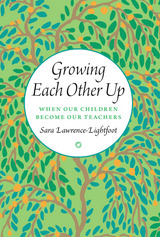 Growing Each Other Up: When Our Children Become Our Teachers
Sara Lawrence-Lightfoot
University of Chicago Press, 2016 From growing their children, parents grow themselves, learning the lessons their children teach. “Growing up”, then, is as much a developmental process of parenthood as it is of childhood. While countless books have been written about the challenges of parenting, nearly all of them position the parent as instructor and support-giver, the child as learner and in need of direction. But the parent-child relationship is more complicated and reciprocal; over time it transforms in remarkable, surprising ways. As our children grow up, and we grow older, what used to be a one-way flow of instruction and support, from parent to child, becomes instead an exchange. We begin to learn from them. The lessons parents learn from their offspring—voluntarily and involuntarily, with intention and serendipity, often through resistance and struggle—are embedded in their evolving relationships and shaped by the rapidly transforming world around them.
With Growing Each Other Up, Macarthur Prize–winning sociologist and educator Sara Lawrence-Lightfoot offers an intimately detailed, emotionally powerful account of that experience. Building her book on a series of in-depth interviews with parents around the country, she offers a counterpoint to the usual parental development literature that mostly concerns the adjustment of parents to their babies’ rhythms and the ways parents weather the storms of their teenage progeny. The focus here is on the lessons emerging adult children, ages 15 to 35, teach their parents. How are our perspectives as parents shaped by our children? What lessons do we take from them and incorporate into our worldviews? Just how much do we learn—often despite our own emotionally fraught resistance—from what they have seen of life that we, perhaps, never experienced? From these parent portraits emerges the shape of an education composed by young adult children—an education built on witness, growing, intimacy, and acceptance.
Growing Each Other Up is rich in the voices of actual parents telling their own stories of raising children and their children raising them; watching that fundamental connection shift over time. Parents and children of all ages will recognize themselves in these evocative and moving accounts and look at their own growing up in a revelatory new light.
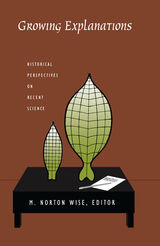 Growing Explanations: Historical Perspectives on Recent Science
M. Norton Wise, ed.
Duke University Press, 2004 For much of the twentieth century scientists sought to explain objects and processes by reducing them to their components—nuclei into protons and neutrons, proteins into amino acids, and so on—but over the past forty years there has been a marked turn toward explaining phenomena by building them up rather than breaking them down. This collection reflects on the history and significance of this turn toward “growing explanations” from the bottom up. The essays show how this strategy—based on a widespread appreciation for complexity even in apparently simple processes and on the capacity of computers to simulate such complexity—has played out in a broad array of sciences. They describe how scientists are reordering knowledge to emphasize growth, change, and contingency and, in so doing, are revealing even phenomena long considered elementary—like particles and genes—as emergent properties of dynamic processes. Written by leading historians and philosophers of science, these essays examine the range of subjects, people, and goals involved in changing the character of scientific analysis over the last several decades. They highlight the alternatives that fields as diverse as string theory, fuzzy logic, artificial life, and immunology bring to the forms of explanation that have traditionally defined scientific modernity. A number of the essays deal with the mathematical and physical sciences, addressing concerns with hybridity and the materials of the everyday world. Other essays focus on the life sciences, where questions such as “What is life?” and “What is an organism?” are undergoing radical re-evaluation. Together these essays mark the contours of an ongoing revolution in scientific explanation. Contributors. David Aubin, Amy Dahan Dalmedico, Richard Doyle, Claus Emmeche, Peter Galison, Stefan Helmreich, Ann Johnson, Evelyn Fox Keller, Ilana Löwy, Claude Rosental, Alfred Tauber
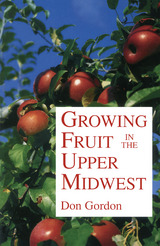 Growing Fruit in the Upper Midwest
Donald Gordon
University of Minnesota Press, 1997 The standard guide to fruit-growing success. Despite the harsh climate that prevails in the Upper Midwest, even amateur gardeners can successfully grow fruit when armed with some basic information. Focusing on Minnesota, Wisconsin, Iowa, South Dakota, and North Dakota, Growing Fruit in the Upper Midwest is a practical how-to guide to the cultivation of a wide variety of fruit including apples, pears, plums, apricots, strawberries, blueberries, cherries, grapes, currants, gooseberries, and brambles. To assist readers ranging from home gardeners to small commercial growers, Don Gordon covers site selection, soil types, pruning, fertilization, harvesting, pests, and preventing winter injury as well as describing literally hundreds of excellent species for this region. Many technical aspects of pruning and planting are accompanied with illustrations. Growing Fruit in the Upper Midwest includes maps that indicate the fruit hardiness zones for each state, augmented by an easy-to-use guide to cultivar selection. The introduction is a basic botany lesson, covering plant classifications, growth and development. The section on apple growing, by far the most widely adapted fruit species in this region, will help growers decide which types of trees will thrive on their land. Gordon also provides an overview of interesting and overlooked historic and economic aspects of fruit production across the Upper Midwest. This practical guide is essential reading for home gardeners, small commercial growers, and anyone who has considered this rewarding and fascinating hobby. “The concise information about plant care will assist even the most inexperienced gardener. This book is an excellent reference tool, and I would recommend it highly to anyone growing fruit in Minnesota, Wisconsin, Iowa, North Dakota or South Dakota.” Rochester Post Bulletin
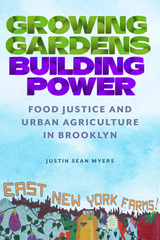 Growing Gardens, Building Power: Food Justice and Urban Agriculture in Brooklyn
Justin Sean Myers
Rutgers University Press, 2023 Across the United States marginalized communities are organizing to address social, economic, and environmental inequities through building community food systems rooted in the principles of social justice. But how exactly are communities doing this work, why are residents tackling these issues through food, what are their successes, and what barriers are they encountering? This book dives into the heart of the food justice movement through an exploration of East New York Farms! (ENYF!), one of the oldest food justice organizations in Brooklyn, and one that emerged from a bottom-up asset-oriented development model. It details the food inequities the community faces and what produced them, how and why residents mobilized to turn vacant land into community gardens, and the struggles the organization has encountered as they worked to feed residents through urban farms and farmers markets. This book also discusses how through the politics of food justice, ENYF! has challenged the growth-oriented development politics of City Hall, opposed the neoliberalization of food politics, navigated the funding constraints of philanthropy and the welfare state, and opposed the entrance of a Walmart into their community. Through telling this story, Growing Gardens, Building Power offers insights into how the food justice movement is challenging the major structures and institutions that seek to curtail the transformative power of the food justice movement and its efforts to build a more just and sustainable world.
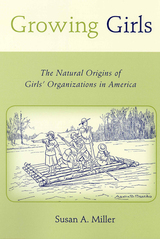 Growing Girls: The Natural Origins of Girls' Organizations in America
Miller, Susan A
Rutgers University Press, 2007 In the early years of the twentieth century, Americans began to recognize adolescence as a developmental phase distinct from both childhood and adulthood. This awareness, however, came fraught with anxiety about the debilitating effects of modern life on adolescents of both sexes. For boys, competitive sports as well as "primitive" outdoor activities offered by fledging organizations such as the Boy Scouts would enable them to combat the effeminacy of an overly civilized society. But for girls, the remedy wasn't quite so clear.
Surprisingly, the "girl problem"?a crisis caused by the transition from a sheltered, family-centered Victorian childhood to modern adolescence where self-control and a strong democratic spirit were required of reliable citizens?was also solved by way of traditionally masculine, adventurous, outdoor activities, as practiced by the Girl Scouts, the Camp Fire Girls, and many other similar organizations.
Susan A. Miller explores these girls' organizations that sprung up in the first half of the twentieth century from a socio-historical perspective, showing how the notions of uniform identity, civic duty, "primitive domesticity," and fitness shaped the formation of the modern girl.
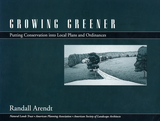 Growing Greener: Putting Conservation Into Local Plans And Ordinances
Randall Arendt
Island Press, 1999 Growing Greener is an illustrated workbook that presents a new look at designing subdivisions while preserving green space and creating open space networks. Randall Arendt explains how to design residential developments that maximize land conservation without reducing overall building density, thus avoiding the political and legal problems often associated with "down-zoning." The author offers a three-pronged strategy for shaping growth around a community's special natural and cultural features, demonstrating ways of establishing or modifying the municipal comprehensive plan, zoning ordinance, and subdivision ordinance to include a strong conservation focus. Open space protection becomes the central organizing principle for new residential development, and the open space that is protected is laid out to form an interconnected system of protected lands running across a community. The book offers: - detailed information on how to conduct a community resource inventory
- a four-step approach to designing conservation subdivisions
- extensive model language for comprehensive plans, subdivision ordinances, and zoning ordinances
- illustrated design principles for hamlets, villages, and traditional small town neighborhoods
In addition, Growing Greener includes eleven case studies of actual conservation developments in nine states, and two exercises suitable for group participation. Case studies include: Ringfield, Chadds Ford Township, Pennsylvania; The Fields of St. Croix, City of Lake Elmo, Minnesota; Prairie Crossing, Grayslake, Illinois; The Meadows at Dolly Gordon Brook, York, Maine; Farmcolony, Standsville, Virginia; The Ranch at Roaring Fork, Carbondale, Colorado; and others. Growing Greener builds upon and expands the basic ideas presented in Arendt's earlier work Conservation Design for Subdivisions, broadening the scope to include more detailed sections on the comprehensive planning process and information on how zoning ordinances can be updated to incorporate the concept of conservation design. It is the first practical publication to explain in detail how resource-conserving development techniques can be put into practice by municipal officials, residential developers, and site designers, and it offers a simple and straightforward approach to balancing opportunities for developers and conservationists.
 Growing in the Shadow of Antifascism: Remembering the Holocaust in State-Socialist Eastern Europe
Kata Bohus
Central European University Press, 2022 Reined into the service of the Cold War confrontation, antifascist ideology overshadowed the narrative about the Holocaust in the communist states of Eastern Europe. This led to the Western notion that in the Soviet Bloc there was a systematic suppression of the memory of the mass murder of European Jews. Going beyond disputing the mistaken opposition between “communist falsification” of history and the “repressed authentic” interpretation of the Jewish catastrophe, this work presents and analyzes the ways as the Holocaust was conceptualized in the Soviet-ruled parts of Europe. The authors provide various interpretations of the relationship between antifascism and Holocaust memory in the communist countries, arguing that the predominance of an antifascist agenda and the acknowledgment of the Jewish catastrophe were far from mutually exclusive. The interactions included acts of negotiation, cross-referencing, and borrowing. Detailed case studies describe how both individuals and institutions were able to use anti-fascism as a framework to test and widen the boundaries for discussion of the Nazi genocide. The studies build on the new historiography of communism, focusing on everyday life and individual agency, revealing the formation of a great variety of concrete, local memory practices.
 Growing into God: The Fathers of the Church on Christian Maturity
John Gavin
Catholic University of America Press, 2025 Many studies of spiritual development exist under the heading of “Christian Perfection.” However, John Gavin revisits such topics as asceticism, prayer, sacraments, virtues, and spiritual combat through scriptural and patristic texts that present the Christian life as one of growth from spiritual infancy to a particular fulfillment or end (telos): divinized humanity as formed and revealed in Jesus Christ. Thus, though Christian maturity does incorporate such things as physical and cognitive development, its true distinction lies in its gifted, supernatural end that does not exclude human freedom.
Part One establishes the pillars of Christian maturity – form and finality; virtue and character; vocation and mission – and explores the opposition to maturation in the form of demonic infantilism. Part Two examines the means of maturity given to us in the life of the Church: the Scriptures, the Mysteries (Sacraments), and asceticism. Finally, Part Three reviews four figures of Christian adulthood: the Witness, the Teacher, the Servant, and the Fool. A concluding chapter applies the insights from the previous chapters to our modern world to see in what ways our times need to “grow up.”
Growing into God includes a variety of early Christian voices: Irenaeus of Lyons, Origen of Alexandria, Gregory of Nazianzus, Gregory of Nyssa, Basil of Caeserea, Augustine of Hippo, Ambrose of Milan, John Cassian, Dionysius the Areopagite, Mark the Monk, John Moschos, Maximus the Confessor, Symeon the Holy Fool, and others. Their collective insights, all the fruits of great learning and the contemplation of God’s Word, describe a wondrous figure: the mature saint transformed by union with the Father, Son, and Spirit.
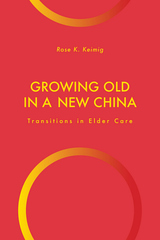 Growing Old in a New China: Transitions in Elder Care
Rose K. Keimig
Rutgers University Press, 2021 Growing Old in a New China: Transitions in Elder Care is an accessible exploration of changing care arrangements in China. Combining anthropological theory, ethnographic vignettes, and cultural and social history, it sheds light on the growing movement from home-based to institutional elder care in urban China. The book examines how tensions between old and new ideas, desires, and social structures are reshaping the experience of caring and being cared for. Weaving together discussions of family ethics, care work, bioethics, aging, and quality of life, this book puts older adults at the center of the story. It explores changing relationships between elders and themselves, their family members, caregivers, society, and the state, and the attempts made within and across these relational webs to find balance and harmony. The book invites readers to ponder the deep implications of how and why we care and the ways end-of-life care arrangements complicate both living and dying for many elders.
Growing Older in World Cities: New York, London, Paris, and Tokyo
Victor G. Rodwin
Vanderbilt University Press, 2006 Population aging often provokes fears of impending social security deficits, uncontrollable medical expenditures, and transformations in living arrangements, but public policy could also stimulate social innovations. These issues are typically studied at the national level; yet they must be resolved where most people live--in diverse neighborhoods in cities.
New York, London, Paris, and Tokyo are the four largest cities among the wealthiest, most developed nations of the world. The essays commissioned for this volume compare what it is like to grow older in these cities with respect to health care, quality of life, housing, and long-term care. The contributors look beyond aggregate national data to highlight the importance of how local authorities implement policies.
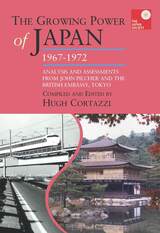 The Growing Power of Japan, 1967-1972: Analysis and Assessments from John Pilcher and the British Embassy, Tokyo
Hugh Cortazzi
Amsterdam University Press, 2016 John Pilcher’s appointment as HM Ambassador to Japan in 1967, three years after the widely acclaimed Tokyo Olympics, was both judicious and enlightened. His role was to be that of a bridge-builder between Japan and Britain following the early post-war years of disenchantment, distrust and detachment that had earlier marked the relationship between the two countries. He brought to his role a particular understanding of Japanese civilization and a critical analysis of Japanese attitudes and way of life. Before the war he had had the good fortune to spend time as a language student in Kyoto. There he came to appreciate Japanese culture at its best but as a junior consular official he also came to see other less attractive aspects of Japan. In this volume Sir Hugh Cortazzi who was to follow in John Pilcher’s footsteps, has compiled the defining reports to Whitehall from Pilcher’s time and as such they offer a valuable record of Japan’s progress at this important point in her post-war history, as well as providing unique insights into the activities, hopes and expectations of the British government in her dealings with Japan. The collection (including essays and writings from his private papers) which has hitherto remained largely unknown or inaccessible to most researchers, provides a platform for John Pilcher as a writer and distinguished scholar-diplomat.
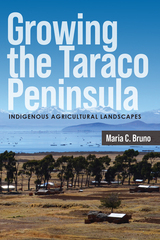 Growing the Taraco Peninsula: Indigenous Agricultural Landscapes
Maria C. Bruno
University Press of Colorado, 2024 Growing the Taraco Peninsula is an examination of long-term human-environmental interactions through agriculture among Indigenous communities of the Taraco Peninsula, Bolivia, located on the shores of Lake Titicaca in the Andes. Maria Bruno weaves together ethnographic observations of modern-day Aymara farming practices with an in-depth study of archaeological remains, particularly plants, to examine the development of agricultural landscapes through time.
Beginning with the first small-scale communities of the Formative period (1500 BCE–500 CE) through the development of the Tiwanaku state (500–1100 CE), Bruno draws upon ethnographic insights from modern-day Indigenous farming practices on the peninsula as well as archaeological evidence from excavations at four sites to explore the landscapes and human-plant relationships that Taraco communities created through their agricultural practices. Through evaluation of environmental data on climate and land-use dynamics—rainfall, lake level, and soil character and distribution—she proposes a new hypothesis of how raised-field agriculture may have emerged in the region. With a detailed analysis of foodways at the Kala Uyuni site, her study reveals how Indigenous Taraco communities sustainably incorporated crops and wild plants into their daily and special-occasion meals, connecting the agricultural landscapes to local and regional social and political dynamics.
Bringing together several indicators of the region’s long-term history and demonstrating that shifts in agriculture do not neatly correspond to the changes traditionally highlighted by archaeological culture histories, Growing the Taraco Peninsula reveals Indigenous landscape creation through farming on the Taraco peninsula as a critical example of sustainability. This valuable contribution to Andean archaeology is also of interest to scholars, students, and the general reader concerned about the environment, sustainable farming, sustainability, Andean history, and the Indigenous peoples of the Americas.
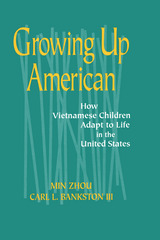 Growing Up American: How Vietnamese Children Adapt to Life in the United States
Min Zhou
Russell Sage Foundation, 1998 Vietnamese Americans form a unique segment of the new U.S. immigrant population. Uprooted from their homeland and often thrust into poor urban neighborhoods, these newcomers have nevertheless managed to establish strong communities in a short space of time. Most remarkably, their children often perform at high academic levels despite difficult circumstances. Growing Up American tells the story of Vietnamese children and sheds light on how they are negotiating the difficult passage into American society. Min Zhou and Carl Bankston draw on research and insights from many sources, including the U.S. census, survey data, and their own observations and in-depth interviews. Focusing on the Versailles Village enclave in New Orleans, one of many newly established Vietnamese communities in the United States, the authors examine the complex skein of family, community, and school influences that shape these children's lives. With no ties to existing ethnic communities, Vietnamese refugees had little control over where they were settled and no economic or social networks to plug into. Growing Up American describes the process of building communities that were not simply transplants but distinctive outgrowths of the environment in which the Vietnamese found themselves. Family and social organizations re-formed in new ways, blending economic necessity with cultural tradition. These reconstructed communities create a particular form of social capital that helps disadvantaged families overcome the problems associated with poverty and ghettoization. Outside these enclaves, Vietnamese children faced a daunting school experience due to language difficulties, racial inequality, deteriorating educational services, and exposure to an often adversarial youth subculture. How have the children of Vietnamese refugees managed to overcome these challenges? Growing Up American offers important evidence that community solidarity, cultural values, and a refugee sensibility have provided them with the resources needed to get ahead in American society. Zhou and Bankston also document the price exacted by the process of adaptation, as the struggle to define a personal identity and to decide what it means to be American sometimes leads children into conflict with their tight-knit communities. Growing Up American is the first comprehensive study of the unique experiences of Vietnamese immigrant children. It sets the agenda for future research on second generation immigrants and their entry into American society.
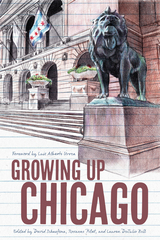 Growing Up Chicago
Edited by David Schaafsma, Roxanne Pilat, and Lauren DeJulio Bell, Foreword by Luis Alberto Urrea
Northwestern University Press, 2021 Growing Up Chicago is a collection of coming-of-age stories that reflects the diversity of the city and its metropolitan area. Primarily memoir, the book collects work by writers who spent their formative years in the region to ask: What characterizes a Chicago author? Is it a certain feel to the writer’s language? A narrative sensibility? The mention of certain neighborhoods or locales? Contributors to the volume include renowned writers Ana Castillo, Stuart Dybek, Emil Ferris, Charles Johnson, Rebecca Makkai, Erika L. Sánchez, and George Saunders, as well as emerging talents. While the authors represented here write from distinct local experiences, some universals emerge, including the abiding influence of family and friends and the self-realizations earned against the background of a place sparkling with promise and riven by inequality, a place in constant flux.
The stories evoke childhood trips to the Art Institute of Chicago, nighttime games of ringolevio, and the giant neon Magikist lips that once perched over the expressway, sharing perspectives that range from a young man who dreams of becoming an artist to a single mother revisiting her Mexican roots, from a woman’s experience with sexual assault to a child’s foray into white supremacy. This book memorably explores culture, social identity, and personal growth through the eyes of Chicagoans, affirming that we each hold the ability to shape the places in which we live and write and read as much as those places shape us.
Growing Up Communist in the Netherlands and Britain: Childhood, Political Activism, and Identity Formation
Elke Weesjes
Amsterdam University Press, 2021 Growing Up Communist in the Netherlands and Britain: Childhood, Political Activism, and Identity Formation documents communists’ attempts, successful and otherwise, to overcome their isolation and to connect with the major social and political movements of the twentieth century. Communist parties in Britain and the Netherlands emerged from the Second World War expecting to play a significant role in post-war society, due to their domestic anti-fascist activities and to the part played by the Soviet Union in defeating fascism. The Cold War shattered these hopes, and isolated communist parties and their members. By analysing the accounts of communist children, Weesjes highlights their struggle to establish communities and define their identities within the specific cultural, social, and political frameworks of their countries.
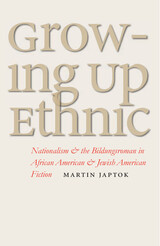 Growing Up Ethnic: Nationalism and the Bildungsroman in African American and Jewish American Fiction
Japtok, Martin
University of Iowa Press, 2005 Growing Up Ethnic examines the presence of literary similarities between African American and Jewish American coming-of-age stories in the first half of the twentieth century; often these similarities exceed what could be explained by sociohistorical correspondences alone. Martin Japtok argues that these similarities result from the way both African American and Jewish American authors have conceptualized their "ethnic situation." The issue of "race" and its social repercussions certainly defy any easy comparisons. However, the fact that the ethnic situations are far from identical in the case of these two groups only highlights the striking thematic correspondences in how a number of African American and Jewish American coming-of-age stories construct ethnicity. Japtok studies three pairs of novels--James Weldon Johnson's Autobiography of an Ex-Coloured Man and Samuel Ornitz's Haunch, Paunch and Jowl, Jessie Fauset's Plum Bun and Edna Ferber's Fanny Herself, and Paule Marshall's Brown Girl, Brownstones and Anzia Yezierska's Bread Giver--and argues that the similarities can be explained with reference to mainly two factors, ultimately intertwined: cultural nationalism and the Bildungsroman genre. Growing Up Ethnic shows that the parallel configurations in the novels, which often see ethnicity in terms of spirituality, as inherent artistic ability, and as communal responsibility, are rooted in nationalist ideology. However, due to the authors' generic choice--the Bildungsroman--the tendency to view ethnicity through the rhetorical lens of communalism and spiritual essence runs head-on into the individualist assumptions of the protagonist-centered Bildungsroman. The negotiations between these ideological counterpoints characterize the novels and reflect and refract the intellectual ferment of their time. This fresh look at ethnic American literatures in the context of cultural nationalism and the Bildungsroman will be of great interest to students and scholars of literary and race studies.
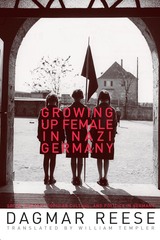 Growing Up Female in Nazi Germany
Dagmar Reese, Translated by William Templer
University of Michigan Press, 2010 Growing Up Female in Nazi Germany explores the world of the Bund Deutscher Mädel (BDM), the female section within the Hitler Youth that included almost all German girls aged 10 to 14. The BDM is often enveloped in myths; German girls were brought up to be the compliant handmaidens of National Socialism, their mental horizon restricted to the "three Ks" of Kinder, Küche, Kirche (children, kitchen, and church).
Dagmar Reese, however, depicts another picture of life in the BDM. She explores how and in what way the National Socialists were successful in linking up with the interests of contemporary girls and young women and providing them a social life of their own. The girls in the BDM found latitude for their own development while taking on responsibilities that integrated them within the folds of the National Socialist state.
"At last available in English, this pioneering study provides fresh insights into the ways in which the Nazi regime changed young 'Aryan' women's lives through appeals to female self-esteem that were not obviously defined by Nazi ideology, but drove a wedge between parents and children. Thoughtful analysis of detailed interviews reveals the day-to-day functioning of the Third Reich in different social milieus and its impact on women's lives beyond 1945. A must-read for anyone interested in the gendered dynamics of Nazi modernity and the lack of sustained opposition to National Socialism."
--Uta Poiger, University of Washington
"In this highly readable translation, Reese provocatively identifies Nazi girls league members' surprisingly positive memories and reveals significant implications for the functioning of Nazi society. Reaching across disciplines, this work is for experts and for the classroom alike."
--Belinda Davis, Rutgers University
Dagmar Reese is The Moses Mendelssohn Zentrum Potsdam researcher on the DFG-project "Georg Simmels Geschlechtertheorien im ‚fin de siecle' Berlin", 2004
William Templer is a widely published translator from German and Hebrew and is on the staff of Rajamangala University of Technology Srivijaya.
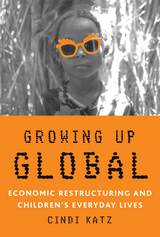 Growing Up Global: Economic Restructuring and Children’s Everyday Lives
Cindi Katz
University of Minnesota Press, 2004 "Brilliant and intimate. The book is an eloquent rendition of the expansive spatial abstractions and mimetic revolutionary re-imagination it proposes." -Social and Cultural Geography
Growing Up Global examines the processes of development and global change through the perspective of children’s lives in two seemingly disparate places: New York City and a village in northern Sudan. At the book’s core is a longitudinal ethnographic study of children growing up in a Sudanese village that was included in a large state-sponsored agricultural program in the year they were born. It follows a small number of children intermittently from ten years of age to early adulthood, concentrating particularly on their work and play, which together trained the children for an agrarian life centered around the family, a life that was quickly becoming obsolete.
Shifting her focus to largely working-class families in New York City in the 1980s and 1990s, Katz is able to expose unsuspected connections with the Sudanese experience in the effects on children of a constantly changing, capitalist environment—the decline of manufacturing jobs and the increase in knowledge-based jobs—in which young people with few skills and stunted educations face bleak employment prospects. In teasing out how “development” transforms the grounds on which these young people come of age, Cindi Katz provides a textured analysis of the importance of knowledge in the ability of people, families, and communities to reproduce themselves and their material social practices over time.
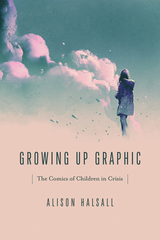 Growing Up Graphic: The Comics of Children in Crisis
Alison Halsall
Ohio State University Press, 2023 Honor Book, Children's Literature Association Book Award 2025 In Growing Up Graphic, Alison Halsall considers graphic texts for young readers to interrogate how they help children develop new ideas about social justice and become potential agents of change. With a focus on comics that depict difficult experiences affecting young people, Halsall explores the complexities of queer graphic memoirs, narratives of belonging, depictions of illness and disability, and explorations of Indigenous experiences. She discusses, among others, Child Soldier by Jessica Dee Humphreys and Michel Chikwanine, War Brothers by Sharon E. McKay, Baddawi by Leila Abdelrazaq, Matt Huynh’s interactive adaptation of Nam Le’s The Boat, and David Alexander Robertson’s 7 Generations. These examples contest images of childhood victimization, passivity, and helplessness, instead presenting young people as social actors who attempt to make sense of the challenges that affect them. In considering comics for children and about children, Growing Up Graphic centers a previously underexplored vein of graphic narratives and argues that these texts offer important insights into the interests and capabilities of children as readers.
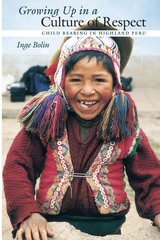 Growing Up in a Culture of Respect: Child Rearing in Highland Peru
By Inge Bolin
University of Texas Press, 2006 Far from the mainstream of society, the pastoral community of Chillihuani in the high Peruvian Andes rears children who are well-adjusted, creative, and curious. They exhibit superior social and cognitive skills and maintain an attitude of respect for all life as they progress smoothly from childhood to adulthood without a troubled adolescence. What makes such child-rearing success even more remarkable is that "childhood" is not recognized as a distinct phase of life. Instead, children assume adult rights and responsibilities at an early age in order to help the community survive in a rugged natural environment and utter material poverty. This beautifully written ethnography provides the first full account of child-rearing practices in the high Peruvian Andes. Inge Bolin traces children's lives from birth to adulthood and finds truly amazing strategies of child rearing, as well as impressive ways of living that allow teenagers to enjoy the adolescent stage of their lives while contributing significantly to the welfare of their families and the community. Throughout her discussion, Bolin demonstrates that traditional practices of respect, whose roots reach back to pre-Columbian times, are what enable the children of the high Andes to mature into dignified, resilient, and caring adults.
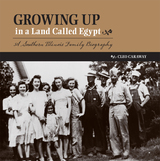 Growing Up in a Land Called Egypt: A Southern Illinois Family Biography
Cleo Caraway
Southern Illinois University Press, 2010 In Growing Up in a Land Called Egypt: A Southern Illinois Family Biography,author Cleo Caraway fondly recalls how she and her siblings came of age on the family farm in the 1930s and 1940s. Like many others, the Caraways were affected by the economic hardships of the Great Depression, but Cleo’s parents strived to shelter her and her six siblings from the dire circumstances affecting the nation and their home and allowed them to bask in their idealistic existence. Her love for her family clearly shines from every page as she writes of a simpler time, before World War II divided the family. Caraway revels in the life her family lived on a southern Illinois hilltop in Murphysboro township, marveling at the mix of commonplace and adventure she experienced in her childhood. She remembers her first day of school, walking three miles to the wondrous one-room building with her siblings; reminisces about strolling through the countryside with her mother, investigating the various plants and flowers, fruits and nuts; and recollects her fascination with the Indian relics she found buried near her home, a hobby she shared with her father. She also writes of seeing Gone with the Wind on the big screen at the Hippodrome in Murphysboro, of learning to sew dresses for her dolls, and of idyllic life on the farm—milking cows, hatching chicks, feeding pigs. Along with her personal memories Caraway includes interviews with neighbors and many fascinating photographs with detailed captions that make the images come alive. A delightful follow-up to her father’s popular Foothold on a Hillside: Memories of a Southern Illinoisan,Caraway’s book is a pleasant change from the typical accounts of southern Illinois before, during, and after the Great Depression. Instead of hardscrabble grit, Growing Up in a Land Called Egypt offers a refreshingly different view of the period and is certain to be embraced by southern Illinois natives as well as anyone interested in the experiences of a rural family that thrived despite the difficult times. The author’s lighthearted prose, self-deprecating humor, and genuine affection for her family make reading this book a rich and memorable experience.
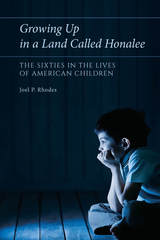 Growing Up in a Land Called Honalee: The Sixties in the Lives of American Children
Joel P. Rhodes
University of Missouri Press, 2017 This study examines how the multiple social, cultural, and political changes between John Kennedy’s inauguration in 1961 and the end of American involvement in Vietnam in 1973 manifested themselves in the lives of preadolescent American children.
Because the preadolescent years are, according to the child development researchers, the most formative, Joel P. Rhodes focuses on the cohort born between 1956 and 1970 who have never been quantitatively defined as a generation, but whose preadolescent world was nonetheless quite distinct from that of the “baby boomers.” Rhodes examines how this group understood the historical forces of the 1960s as children, and how they made meaning of these forces based on their developmental age. He is concerned not only with the immediate imprint of the 1960s on their young lives, but with how their perspective on the era influenced them as adults.
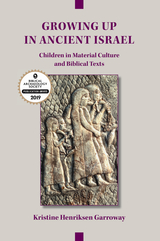 Growing Up in Ancient Israel: Children in Material Culture and Biblical Texts
Kristine Henriksen Garroway
SBL Press, 2018 The first expansive reference examining the texts and material culture related to children in ancient Israel
Growing Up in Ancient Israel uses a child-centered methodology to investigate the world of children in ancient Israel. Where sources from ancient Israel are lacking, the book turns to cross-cultural materials from the ancient Near East as well as archaeological, anthropological, and ethnographic sources. Acknowledging that childhood is both biologically determined and culturally constructed, the book explores conception, birth, infancy, dangers in childhood, the growing child, dress, play, and death. To bridge the gap between the ancient world and today’s world, Kristine Henriksen Garroway introduces examples from contemporary society to illustrate how the Hebrew Bible compares with a Western understanding of children and childhood.
Features:
- More than fifty-five illustrations illuminating the world of the ancient Israelite child
- An extensive investigation of parental reactions to the high rate of infant mortality and the deaths of infants and children
- An examination of what the gendering and enculturation process involved for an Israelite child
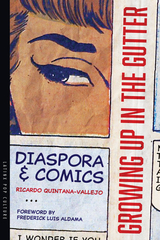 Growing Up in the Gutter: Diaspora and Comics
Ricardo Quintana-Vallejo; Foreword by Frederick Luis Aldama
University of Arizona Press, 2024 Growing Up in the Gutter offers new understandings of contemporary graphic coming-of-age narratives by looking at the genre’s growth in stories by and for young BIPOC, LGBTQ+, and diasporic readers. Through a careful examination of the genre, Ricardo Quintana-Vallejo analyzes the complex identity formation of first- and subsequent-generation migrant protagonists in globalized rural and urban environments and dissects the implications that these diasporic formative processes have for a growing and popular genre.
While the most traditional iteration of the bildungsroman—the coming-of-age story—follows middle-class male heroes who forge their identities in a process of complex introspection, contemporary graphic coming-of-age narratives represent formative processes that fit into, resist, or even disregard narratives of socialization under capitalism, of citizenship, and of nationhood.
Quintana-Vallejo delves into several important themes: how the coming-of-age genre can be used to study adulthood, how displacement and international or global heritage are fundamental experiences, how multidiasporic approaches foreground lived experiences, and how queerness opens narratives of development to the study of adulthood as fundamentally diverse and nonconforming to social norms. Quintana-Vallejo shows how openness enables belonging among chosen families and, perhaps most importantly, freedom to disidentify. And, finally, how contemporary authors writing for the instruction of BIPOC children (and children otherwise affected by diaspora and displacement) use the didactic power of the coming-of-age genre, combined with the hybrid language of graphic narratives, to teach difficult topics in accessible ways.
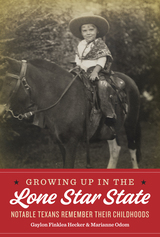 Growing Up in the Lone Star State: Notable Texans Remember Their Childhoods
By Gaylon Finklea Hecker and Marianne Odom
University of Texas Press, 2021 Gaylon Finklea Hecker and Marianne Odom began the interviews for this book in 1981 and devoted a professional lifetime to collecting the memories of accomplished Texans to determine what, if anything, about growing up in the Lone Star State prepared them for success. The resulting forty-seven oral history interviews begin with tales from the early 1900s, when Texas was an agrarian state, and continue through the growth of major cities and the country’s race to the moon. Interviewees recalled life in former slave colonies; on gigantic ranches, tiny farms, and sharecropper fields; and in one-horse towns and big-city neighborhoods, with relatable stories as diverse as the state’s geography. The oldest interviewees witnessed women earning the right to vote and weathered the Great Depression. Many remembered two world wars, while others recalled the Texas City explosion of 1947 and the tornado that devastated Waco in 1953. They witnessed the advent of television and the nightly news, which helped many come to terms with the assassination of a president that took place too close to home. Their absorbing reflections are stories of good and bad, hope and despair, poverty and wealth, depression and inspiration, which would have been different if lived anywhere but Texas.
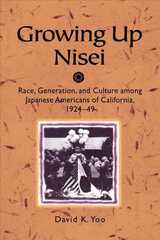 Growing Up Nisei: Race, Generation, and Culture among Japanese Americans of California, 1924-49
David K. Yoo
University of Illinois Press, 2000 The place occupied by Japanese Americans within the annals of United States history often begins and ends with their cameo appearance as victims of incarceration after the bombing of Pearl Harbor. In this provocative work, David K. Yoo broadens the scope of Japanese American history to examine how the second generation—the Nisei—shaped its identity and negotiated its place within American society. Tracing the emergence of a dynamic Nisei subculture, Yoo shows how the foundations laid during the 1920s and 1930s helped many Nisei adjust to the upheaval of the concentration camps. Schools, racial-ethnic churches, and the immigrant press served not merely as waystations to assimilation but as tools by which Nisei affirmed their identity in connection with both Japanese and American culture. The Nisei who came of age during World War II formed identities while negotiating complexities of race, gender, class, generation, economics, politics, and international relations. A thoughtful consideration of the gray area between accommodation and resistance, Growing Up Nisei reveals the struggles and humanity of a forgotten generation of Japanese Americans.
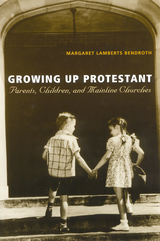 Growing Up Protestant: Parents, Children and Mainline Churches
Margaret Lamberts Bendroth
Rutgers University Press, 2002 Home and family are key, yet relatively unexplored, dimensions of religion in the contemporary United States. American cultural lore is replete with images of saintly nineteenth-century American mothers and their children. During the twentieth century, however, the form and function of the American family have changed radically, and religious beliefs have evolved under the challenges of modernity. As these transformations took place, how did religion manage to “fit” into modern family life?
In this book, Margaret Lamberts Bendroth examines the lives and beliefs of white, middle-class mainline Protestants (principally northern Presbyterians, Baptists, Methodists, and Congregationalists) who are theologically moderate or liberal. Mainliners have pursued family issues for most of the twentieth century, churning out hundreds of works on Christian childrearing. Bendroth’s book explores the role of family within a religious tradition that sees itself as America’s cultural center. In this balanced analysis, the author traces the evolution of mainliners’ roles in middle-class American culture and sharpens our awareness of the ways in which the mainline Protestant experience has actually shaped and reflected the American sense of self.
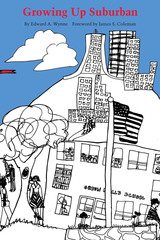 Growing Up Suburban
By Edward A. Wynne
University of Texas Press, 1977 The prosperous, comfortable, and homogeneous American suburb is a relatively recent institution in American history. Edward Wynne was one of the first to take a serious look at the quality of suburban childhood, where, he contends, we have ignored the developments affecting the largest pool of children and parents in America. This provocative volume argues that the total environment of the suburban youth—the school, the community, the family, and the workplace—is in need of drastic reform. Wynne advances a forthright argument for the preservation of traditional moral values and criticizes excessive individualism in fragmented modern society. Focusing on the schools and extending his discussion to the larger community, he pleads for more attention to such goals as honesty, persistence, patriotism, and loyalty. Post-industrial suburban environments, Wynne argues, do not provide the diversity of experience children must have to become successful adults. Strong community ties to the schools are basic to Wynne's thesis. Within the schools, he recommends changes in grading systems, student responsibilities and assignments, selection and training of teachers and administrators, structuring and evaluation of programs, and the socioeconomic and age mix of pupils. A feeling of cooperation and unity within the school itself is a major goal. Wynne also suggests steps for moving toward more heterogeneous, close-knit communities, where citizens have greater local control. For example, community members could restrict movement into the community and should aim for a mix of blue- and white-collar residents. Wynne's arguments clearly run counter to fashion and are sure to provoke a high level of debate among educators of differing philosophic persuasions. Civil libertarians, feminists, civil rights advocates, and others are bound to make spirited replies to many of Wynne's contentions. Growing Up Suburban will be of interest to educators, public school administrators, parents, and suburban dwellers.
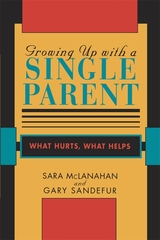 Growing Up With a Single Parent: What Hurts, What Helps
Sara McLanahan and Gary Sandefur
Harvard University Press, 1997 Nonwhite and white, rich and poor, born to an unwed mother or weathering divorce, over half of all children in the current generation will live in a single-parent family--and these children simply will not fare as well as their peers who live with both parents. This is the clear and urgent message of this powerful book. Based on four national surveys and drawing on more than a decade of research, Growing Up with a Single Parent sharply demonstrates the connection between family structure and a child's prospects for success.
What are the chances that the child of a single parent will graduate from high school, go on to college, find and keep a job? Will she become a teenage mother? Will he be out of school and out of work? These are the questions the authors pursue across the spectrum of race, gender, and class. Children whose parents live apart, the authors find, are twice as likely to drop out of high school as those in two-parent families, one and a half times as likely to be idle in young adulthood, twice as likely to become single parents themselves. This study shows how divorce--particularly an attendant drop in income, parental involvement, and access to community resources--diminishes children's chances for well-being.
The authors provide answers to other practical questions that many single parents may ask: Does the gender of the child or the custodial parent affect these outcomes? Does having a stepparent, a grandmother, or a nonmarital partner in the household help or hurt? Do children who stay in the same community after divorce fare better? Their data reveal that some of the advantages often associated with being white are really a function of family structure, and that some of the advantages associated with having educated parents evaporate when those parents separate.
In a concluding chapter, McLanahan and Sandefur offer clear recommendations for rethinking our current policies. Single parents are here to stay, and their worsening situation is tearing at the fabric of our society. It is imperative, the authors show, that we shift more of the costs of raising children from mothers to fathers and from parents to society at large. Likewise, we must develop universal assistance programs that benefit low-income two-parent families as well as single mothers. Startling in its findings and trenchant in its analysis, Growing Up with a Single Parent will serve to inform both the personal decisions and governmental policies that affect our children's--and our nation's--future.
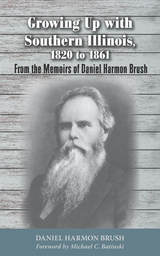 Growing Up with Southern Illinois, 1820 to 1861: From the Memoirs of Daniel Harmon Brush
Daniel Harmon Brush, with a Foreword by Michael C. Batinski
Southern Illinois University Press, 2017 Daniel Harmon Brush came to southern Illinois from Vermont with his parents in the 1820s and found a frontier region radically different from his native New England. In this memoir, Brush, the eventual founder of Carbondale, Illinois, describes his early life in the northeast, his pioneer family’s move west, and their settlement near the Illinois River in Greene County, Illinois. Beginning as a store clerk, Brush worked hard and became very successful, serving in a number of public offices before founding the town of Carbondale in the 1850s, commanding a regiment in the Civil War, and practicing law, among other pursuits. Brush never let go of his pious New England roots, which often put him at odds with most other citizens in the region, many of whose families emigrated from the southern states and thus had different cultural and religious values. The memoir ends in 1861, as the Civil War starts, and Brush describes the growing unrest of Southern sympathizers in southern Illinois. Brush’s story shows how an outsider achieved success through hard work and perseverance and provides a valuable look at life on the western frontier.
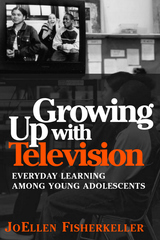 Growing Up With Television: Everyday Learning Among Young Adolescents
Joellen Fisherkeller
Temple University Press, 2002 "TV is for when you don't have anything to do, or when you're lonely, or something. It's for you to learn, things and stuff...say you don't have anything to do, you can always turn it on for light or whatever...I'm alone, I don't like to leave the TV off. Unless I'm getting ready to go to sleep or something. I turn out all the lights...And then I leave it on, I go to my room and watch videos. I just like it." —TeniyaSerita, age 12Why talk with young people about TV? This is the question from which JoEllen Fisherkeller begins her insightful examination into the uses and power of TV in youth cultures.Fisherkeller studies the experiences of adolescents watching TV and talking about TV at home, at school, and with their peers. They discuss their hopes for the future as well as the challenges they currently face, and reveal how television plays a role in their everyday life. These young individuals, who come from a wide range of backgrounds, literally grow up with television, as the author follows them from middle school to high school and then on to college.As the most significant cultural symbol in the US, television is a powerful educational and socializing force. Fisherkeller examines how youth are attracted to TV programs and persona that help them work through personal and social dilemmas. TV stories teach them about conflicts of gender, race and class that parallel the lessons they learn from real life and the system of television show them how image creation is a real means of "making it" in an image-conscious society.Growing Up with Television is a groundbreaking book that should speak to a multitude of disciplines on the educative and societal power of a medium that pervades and defines contemporary experience.
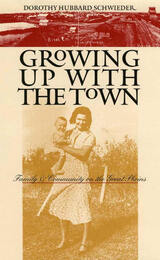 Growing Up with the Town: Family and Community on the Great Plains
Dorothy Hubbard Schwieder
University of Iowa Press, 2002 In this unusual blend of chronological and personal history, Dorothy Hubbard Schwieder combines scholarly sources with family memories to create a loving and informed history of Presho, South Dakota, and her family's life there from the time of settlement in 1905 to the mid 1950s. Schwieder tells the story of this small town in the West River country, with its harsh and unpredictable physical environment, through the activities of her father, Walter Hubbard, and his family of ten children. Walter Hubbard’s experiences as a business owner and town builder and his attitudes toward work, education, and family both reflected and shaped the lives of Presho's inhabitants and the town itself. While most histories of the Plains focus on farm life, Schwieder writes entirely about small-town society. She uses newspaper accounts, state and county histories, census data, interviews with residents, and the childhood memories of herself and her nine siblings to create an entwined, first-hand social and economic portrait of life on main street from the perspective of its citizens.
Growing with Games: Making Your Own Educational Games
Sally Goldberg
University of Michigan Press, 1985 Aimed at children from three to six years old, all of the games included in Growing with Games are designed from easily accessible household items. For an advanced child, the games will provide enrichment; for a child with a learning disability, they will help counteract the difficulty; and for any child, they will foster developmental growth. The games are designed to help all children reach their full potential.
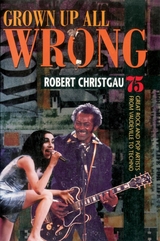 Grown Up All Wrong: 75 Great Rock and Pop Artists from Vaudeville to Techno
Robert Christgau
Harvard University Press, 2000 Two generations of American music lovers have grown up listening with Robert Christgau, attuned to his inimitable blend of judgment, acuity, passion, erudition, wit, and caveat emptor. His writings, collected here, constitute a virtual encyclopedia of popular music over the past fifty years. Whether honoring the originators of rock and roll, celebrating established artists, or spreading the word about newer ones, the book is pure enjoyment, a pleasure that takes its cues from the sounds it chronicles.
A critical compendium of points of interest in American popular music and its far-flung diaspora, this book ranges from the 1950s singer-songwriter tradition through hip-hop, alternative, and beyond. With unfailing style and grace, Christgau negotiates the straits of great music and thorny politics, as in the cases of Public Enemy, blackface artist Emmett Miller, KRS-One, the Beastie Boys, and Lynyrd Skynyrd. He illuminates legends from pop music and the beginnings of rock and roll—George Gershwin, Nat King Cole, B. B. King, Chuck Berry, and Elvis Presley—and looks at the subtle transition to just plain “rock” in the music of Janis Joplin, the Rolling Stones, Eric Clapton, Aretha Franklin, James Brown, and others. He praises the endless vitality of Al Green, George Clinton, and Neil Young. And from the Rolling Stones to Sonic Youth to Nirvana, from Bette Midler to Michael Jackson to DJ Shadow, he shows how money calls the tune in careers that aren’t necessarily compromised by their intercourse with commerce.
Rock and punk and hip-hop, pop and world beat: this is the music of the second half of the twentieth century, skillfully framed in the work of a writer whose reach, insight, and perfect pitch make him one of the major cultural critics of our time.
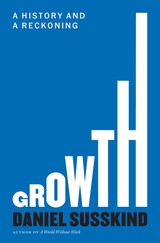 Growth: A History and a Reckoning
Daniel Susskind
Harvard University Press, 2024 One of Barack Obama’s 10 Favorite Books of the Year
One of the New Yorker’s Best Books of the Year
Finalist for the Financial Times Best Book of the Year
A vivid account of the past, present, and future of economic growth, showing how and why we must continue to pursue it while responding to the challenges it creates.
Over the past two centuries, economic growth has freed billions from the struggle for subsistence. Yet prosperity has come at a price: environmental destruction, desolation of local cultures, the emergence of vast inequalities. Many respond that now is the time to shrink our economic footprint. But Daniel Susskind argues that such “degrowth” would be folly. Instead, we must keep growth but redirect it, making it better reflect our values.
Growth: A History and a Reckoning shows how policymaking in the second half of the twentieth century came to revolve around a single-minded quest for greater GDP. The growth obsession has been met with the assertion that “we cannot have infinite growth on a finite planet.” Susskind shows, though, that growth is a product not of resource exploitation but of new ideas. In that sense, growth really can be infinite.
Still, he says, critics are right to insist that we can no longer focus on upsides alone. We must confront tradeoffs: societies will have to deliberately pursue less growth for the sake of other goals. These will be moral decisions, not simply economic ones, demanding the engagement not just of politicians and experts but of all citizens.
 Growth and Distribution
Duncan K. Foley and Thomas R. Michl
Harvard University Press, 1999 Growth and Distribution is the first text designed to support a comprehensive advanced undergraduate or graduate course on the theory, measurement, and history of economic growth. The book, which presents Classical and Keynesian in parallel with Neoclassical approaches to growth theory, introduces students to advanced tools of intertemporal economic analysis through carefully developed treatments of land- and resource-limited growth, and covers money and growth, the impact of government debt and social security systems on growth, and theories of endogenous growth and endogenous technical change. The models emphasize rigorous reasoning from basic economic principles and insights without excessive formal complication, and respond to students' interest in the history and policy dilemmas of real-world economies. Surveys of data and discussion of empirical controversies are closely integrated with the development of theoretical tools. The book includes access to a comprehensive data set extending the Penn World Tables in a form suitable for exploration in hands-on student projects.
In addition to carefully worked examples showing how to use the analytical techniques presented, the book contains many problems suitable for inclusion in problem sets and examinations. Detailed answers to these problems are also provided.
 Growth and Distribution: Second Edition
Duncan K. Foley, Thomas R. Michl, and Daniele Tavani
Harvard University Press, 2019 A major revision of an established textbook on the theory, measurement, and history of economic growth, with new material on climate change, corporate capitalism, and innovation.
Authors Duncan Foley, Thomas Michl, and Daniele Tavani present Classical and Keynesian approaches to growth theory, in parallel with Neoclassical ones, and introduce students to advanced tools of intertemporal economic analysis through carefully developed treatments of land- and resource-limited growth. They cover corporate finance, the impact of government debt and social security systems, theories of endogenous technical change, and the implications of climate change. Without excessive formal complication, the models emphasize rigorous reasoning from basic economic principles and insights, and respond to students’ interest in the history and policy dilemmas of real-world economies.
In addition to carefully worked out examples showing how to use the analytical techniques presented, Growth and Distribution presents many problems suitable for inclusion in problem sets and examinations. Detailed answers to these problems are available. This second edition includes fresh data throughout and new chapters on climate change, corporate capitalism, models of wealth inequality, and technical change.
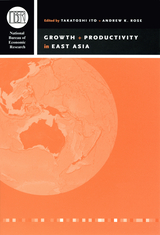 Growth and Productivity in East Asia
Edited by Takatoshi Ito and Andrew K. Rose
University of Chicago Press, 2004 Considering the examples of Australia and the Pacific Rim, Growth and Productivity in East Asia offers a contemporary explanation for national productivity that measures contributions not only from capital and labor, but also from economic activities and relevant changes in policy, education, and technology.
Takatoshi Ito and Andrew K. Rose have organized a group of collaborators from several Asian countries, the United States, and other parts of the globe who ably balance both macroeconomic and microeconomic study with theoretical and empirical approaches. Growth and Productivity in East Asia gives special attention to the causes for the unusual success of Australia, one of the few nations to maintain unprecedented economic growth despite the 1997 Asian financial crisis and the 2001 global downturn. A new database comprising eighty-four Japanese sectors reveals new findings for the last thirty years of sectoral productivity and growth in Japan. Studies focusing on Indonesia, Taiwan, and Korea also consider productivity and its relationship to research and development, foreign ownership, and policy reform in such industries as manufacturing, automobile production, and information technology.
Growth and Structural Transformation
Kwang Suk Kim and Michael Roemer
Harvard University Press, 1979 This study provides a comprehensive overview of Korea’s macroeconomic growth and structural change since World War II, and traces some of the roots of development to the colonial period. The authors explore in detail colonial development, changing national income patterns, relative price shifts, sources of aggregate growth, and sources of sectoral structural change, comparing them with other countries.
 Growth, Distribution, and Prices
Stephen A. Marglin
Harvard University Press, 1984 What determines the rate of growth, the distribution of income, and the structure of relative prices under capitalism? What, in short, makes capitalist economies tick? This watershed treatise analyzes the answers to these questions provided by three major theoretical traditions: neoclassical, neo-Marxian, and neo-Keynesian. Until now, the mutual criticism exchanged by partisans of the different traditions has focused disproportionately on the logical shortcomings of rival theories, or on such questions as whether or not input–output relationships can be described by a continuous-substitution production function.
In this book, these are at best secondary issues. The real distinguishing features of the theories, for Stephen Marglin, are their characterization of labor markets and capital accumulation. For clarity, Marglin first sets out the essential features of each theory in the context of a common production model with a single good and a fixed-coefficient technology. He then formalizes the different theories as alternative ways of closing the model. In subsequent chapters he examines the effects of relaxing key simplifying assumptions, in particular the characterization of technology and the homogeneity of output and capital. And although his primary emphasis is theoretical, he does not ignore the problem of empirically testing the theories. Finally, he synthesizes the insights of the neo-Marxian and neo-Keynesian models into a single model that transcends the shortcomings of each taken separately.
Marglin anticipates that partisans of the different traditions will agree on one point: each will allow that the book reveals the shortcomings of the other theories but will insist that it fails utterly to reflect the power and majesty of one’s own particular brand of truth. Growth, Distribution, and Prices will be controversial, but it will not be ignored.
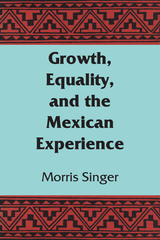 Growth, Equality, and the Mexican Experience
By Morris Singer
University of Texas Press, 1969 Central to the research that went into the preparation of this monograph is the relationship between economic development and equality. To determine and characterize that relationship Morris Singer focuses on the various components of equality at different stages of development. The author particularly explores the behavior of income distribution, together with its bearing on the components of aggregate demand. Mexico provided an excellent case to examine in depth because of its impressive growth and the fact that it experienced Latin America’s first successful twentieth-century revolution. Although the Revolution of 1910 hastened social equality and introduced other changes that stimulated Mexico’s economic growth, it could not prevent a serious increase in the inequality of income distribution. By the early 1960s the government found it necessary to rectify this increasing imbalance through a program of expenditures designed to counteract widespread poverty and weak aggregate demand. To ward off inflation, this program in turn could be implemented only by tax reform. In discussing the relationship between development and equality in its various dimensions, noneconomic as well as economic, this monograph points out that, at the time of this study, government policies in Mexico were dictated by an elite concerned primarily with the country’s economic advancement. Singer concludes that if programs of government expenditure and tax reform succeed in remedying the inequalities of income distribution, this could gradually make possible the development of a more genuine political as well as economic democracy. This book reflects Singer’s interest in the relationship between equality and development. It is the result of five months of intensive in-residence study in Mexico, financed in part by a grant from the Social Science Research Council.
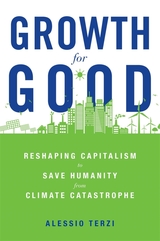 Growth for Good: Reshaping Capitalism to Save Humanity from Climate Catastrophe
Alessio Terzi
Harvard University Press, 2022 A Foreign Affairs Best Book of the Year
From the front lines of economics and policymaking, a compelling case that economic growth is a force for good and a blueprint for enrolling it in the fight against climate change.
Economic growth is wrecking the planet. It’s the engine driving climate change, pollution, and the shrinking of natural spaces. To save the environment, will we have to shrink the economy? Might this even lead to a better society, especially in rich nations, helping us break free from a pointless obsession with material wealth that only benefits the few? Alessio Terzi takes these legitimate questions as a starting point for a riveting journey into the socioeconomic, evolutionary, and cultural origins of our need for growth. It’s an imperative, he argues, that we abandon at our own risk.
Terzi ranges across centuries and diverse civilizations to show that focus on economic expansion is deeply interwoven with the human quest for happiness, well-being, and self-determination. Growth, he argues, is underpinned by core principles and dynamics behind the West’s rise to affluence. These include the positivism of the Enlightenment, the acceleration of science and technology and, ultimately, progress itself. Today growth contributes to the stability of liberal democracy, the peaceful conduct of international relations, and the very way our society is organized through capitalism. Abandoning growth would not only prove impractical, but would also sow chaos, exacerbating conflict within and among societies.
This does not mean we have to choose between chaos and environmental destruction. Growth for Good presents a credible agenda to enroll capitalism in the fight against climate catastrophe. With the right policies and the help of engaged citizens, pioneering nations can set in motion a global decarbonization wave and in parallel create good jobs and a better, greener, healthier world.
The Growth of Biological Thought: Diversity, Evolution, and Inheritance
Ernst Mayr
Harvard University Press, 1982 No one in this century can speak with greater authority on the progress of ideas in biology than Ernst Mayr. And no book has ever established the life sciences so firmly in the mainstream of Western intellectual history as The Growth of Biological Thought. Ten years in preparation, this is a work of epic proportions, tracing the development of the major problems of biology from the earliest attempts to find order in the diversity of life to modern research into the mechanisms of gene transmission.
 The Growth of Economic Thought, 3rd ed.
Henry W. Spiegel
Duke University Press, 1991 In a new and updated edition of this classic textbook, Henry William Spiegel brings his discussion and analysis of economic thought into the 1990s. A new introductory chapter offering an overall view of the history of economics and a bibliographic survey of the economic literature of the 1980s and early 1990s have been added. Maintaining the link between economics and the humanities, Spiegel’s text will continue to introduce students to a wide range of topics in the history of economic thought. From reviews of previous editions: “The history of economic thought to end all histories of economic thought.”—Robert D. Patton, Journal of Economic Literature “The book is in the grand tradition of the history of doctrines. It is a history of economic thought broadly conceived—and superbly written to boot. It is not to much to say that Spiegel’s book will become and remain a leading text in the field.”—Warren J. Samuels, Social Science The author conveys the essence of an idea simply and clearly, yet in a graceful style.”—William F. Kennedy, Journal of Economic Literature
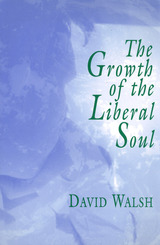 The Growth of the Liberal Soul
David Walsh
University of Missouri Press, 1997
In The Growth of the Liberal Soul, David Walsh confronts a core difficulty of the liberal democratic tradition in explaining and justifying itself. Acknowledging the incompleteness of liberal order as a theoretical explication of its underlying beliefs, Walsh analyzes contemporary debates about the foundations of liberal democratic politics. The widespread abandonment of the search for foundations by John Rawls, Richard Rorty, Michael Oakeshott, and the deconstructionists has been interpreted as signifying the absence of any sustaining inner resources. The result has been the confusion of contemporary liberal democratic self-understanding, which cannot make sense of its own extraordinary historical success nor apparently prevent the evident unraveling of its own moral code. It is this state of crisis from which Walsh's study takes its point of departure.
Unique in combining contemporary political relevance with historical depth, The Growth of the Liberal Soul brings together two approaches that are often treated separately. Walsh elaborates on the existential core of the liberal political tradition by way of an investigation of the historical sources and the raging contemporary debates.
While many scholars have been content to call attention to the dependence of liberal politics on transcendent faith, Walsh studies the progress of experiential reality by which that connection is concretely effected in life. The Growth of the Liberal Soul will be of interest to all readers, especially those interested in the relationship between religion and politics.
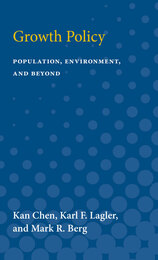 Growth Policy: Population, Environment, and Beyond
Kan Chen, Karl F. Lagler, and Mark R. Berg, E. Drannon Buskirk, Jr., Donald H. Gray, Karl Herpolsheimer, T. Jeffrey Jones, George Kral, J.C. Mathes, John McGuire, Donald N. Michael, Stephen M. Pollock, Ruth Rehfus
University of Michigan Press, 1974 A great deal has been said and written about pollution, overpopulation, the depletion of natural resources, and the imminence of an ecological breakdown of catastrophic proportions. The urgent questions are: What can and must be done? How can we organize our knowledge, mobilize our energies, and focus our policy planning so as to create a new relationship between man and the world in which he lives?In Growth Policy a team of experts presents a truly original, interdisciplinary approach to growth policy research from an ecosystem perspective. The authors provide an overall systems framework in which research in population, environment, and social values can be integrated and then expanded to aid the policy-decision process.The authors challenge the conventional wisdom and assumptions that underlie current policy making, and they question the ability of present political and policy-making institutions to coordinate and control the interactions among the environment, population, resource consumption, and technological development. Nor do they subscribe to the facile notion that technology alone will solve the overall problem. Instead, they propose a macrosystems approach to policy research that identifies the issues, classifies and expands the range of possible policies, uses analytical models and computer technology to compare these possible policies in terms of the overall effect desired, and finally, requires the cooperation of policy makers and researchers as well as the public at the national and international levels. This approach has the virtue of developing rational and careful planning decisions without denying the elements of subjectivity and risk involved in such decision making. It also seeks to ensure that considerations of basic human values permeate all responses to the environmental crisis. The authors argue that new concepts of life on earth, of human society and culture, and even of man himself need to be formulated if human society is to enhance
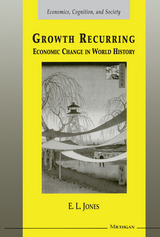 Growth Recurring: Economic Change in World History
E.L. Jones
University of Michigan Press, 2000 This important book compares the growth achieved in Japan and Europe with the frustrated growth in the major societies of mainland Eurasia. More broadly, it is about the conflict in world history between economic growth and political greed. Eric Jones proposes two fundamentally new frameworks. One replaces industrial revolution or great discontinuity as the source of change and challenges the reader to accept early periods and non-western societies as vital to understanding the growth process. The second offers a new explanation in which tendencies for growth were omnipresent but were usually--though not always--suppressed. Finally, the erosion of these negative factors is discussed, explaining the rise of a world economy in which growth has recurred and East Asia takes a prominent place.
Eric Jones has written a substantial new introduction for this edition, which includes discussions of early evidence of growth episodes and the relation of these points to the Industrial Revolution, and the relevance of the East Asian "miracle" to his thesis.
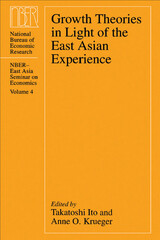 Growth Theories in Light of the East Asian Experience
Edited by Takatoshi Ito and Anne O. Krueger
University of Chicago Press, 1995 The contributors to this volume analyze the growth experiences of Japan, Korea, China, Hong Kong, Singapore, and Taiwan in light of the recently developed endogenous growth theory to provide an understanding of the economic boom in East Asia.
The theory explored in this volume attributes the phenomenal economic success of these countries to, among other factors, the role of an outward orientation—a focus on exporting rather than on protecting home markets. In addition, the importance of exchange rate behavior, of the supportive role of government policy, and of the accumulation and promotion of physical and human capital are explored in detail. This collection also examines the extent to which growth in each country became self-sustaining once it began.
Demonstrating the relevance of endogenous growth theory for studying this important region, this fourth volume in the NBER-East Asia Seminar on Economics series will be of interest to observers of East Asian affairs.
Growth, Trade, and Systemic Leadership
Rafael Reuveny and William R. Thompson
University of Michigan Press, 2004 Using a "lead economy" approach, Reuveny and Thompson link question about the global trade system to debates about hegemonic stability and the balance of power in world politics. By focusing on economic growth, protectionism, and trade, they surpass hegemonic stability interpretations of international politics to explain not only how hegemons maintain political order, but also the source of hegemonic/systemic leadership, the rise and decline of leadership over time, and the role of system leaders in generating worldwide economic growth and international political economic order.
Rafael Reuveny is Associate Professor in the School of Public and Environmental Affairs at Indiana University. William R. Thompson is Professor of Political Science at Indiana University.
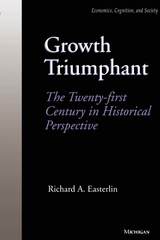 Growth Triumphant: The Twenty-first Century in Historical Perspective
Richard A. Easterlin
University of Michigan Press, 1998 Taking a longer view than most literature on economic development, Richard A. Easterlin stresses the enormous contrast between the collective experience of the last half century in both developed and developing countries and what has gone before. An economic historian and demographer, the author writes in the tradition of the "new economic history," drawing on economic theory and quantitative evidence to interpret the historical experience of economic theory and population growth. He reaches beyond the usual disciplinary limits to draw, as appropriate, on sociology, political science, psychology, anthropology, and the history of science. The book will be of interest not only to social scientists but to all readers concerned with where we have been and where we are going.
". . . Easterlin is both an economic historian and a demographer, and it is the combination of these two disciplines and the fine balance between theory and experience that make this well-written, refreshingly optimistic book excellent reading." --Population and Development Review
"In this masterful synthesis, Richard Easterlin draws on the disciplines of economic history, demography, sociology, political science, psychology, and the history of science to present an integrated explation of the origins of modern economic growth and of the mortality revolution. . . . His book should be easily accessible to non-specialists and will give them a sense of why economic history can inform our understanding of the future." --Dora L. Costa, Massachusetts Institute of Technology, EH.Net and H-Net
"Growth Triumphant is, simply, a fascinating book. Easterlin has woven together a history of economic growth, economic development, human mortality and morbidity, the connections each has with the others, and the implications of this nexus of forces on the future. . . . This book deserves a wide audience." --Choice
"In what must surely be the most fair-minded, well-balanced, and scrupulously reasoned and researched book on the sensational subjects implied in its title--the Industrial Revolution, the mortality and fertility revolutions, and the prospects for future happiness for the human race--Professor Easterlin has set in place the capstone of his research career." --Journal of Economic History
Richard A. Easterlin is Professor of Economics, University of Southern California.
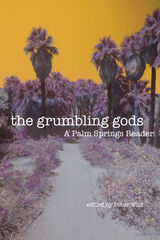 The Grumbling Gods: A Palm Springs Reader
Peter Wild
University of Utah Press, 2007 Home to former presidents and to movie stars, Palm Springs and its surrounding deserts are among the fastest growing and wealthiest areas of the U.S. But beneath the glitter lies a story of turmoil and a pattern of excess that prefigures many of the issues that face the nation.
The Grumbling Gods surveys the history and allure of Palm Springs, beginning with the Cahuilla Indians, the first historical residents of the region. It includes accounts from the early explorers, a report of mysterious shipwrecks amidst the sand dunes, and selections from the grimly rollicking writings of Raymond Chandler. It penetrates the tinsel of casinos and the placidity of gated golf communities to reveal the painful beauty of deserts and mountains under assault.
Francisco Patencio, the last of the traditional Cahuilla Indians, warned his white neighbors to be careful, that the grim gods inhabiting the canyons around Palm Springs were angry. It is their grumbling, at once chilling and prophetic, and yet sometimes humorous, that we hear from the pages of this book.
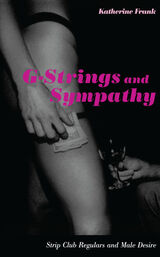 G-Strings and Sympathy: Strip Club Regulars and Male Desire
Katherine Frank
Duke University Press, 2002 Based on her experiences as a stripper in a city she calls Laurelton—a southeastern city renowned for its strip clubs—anthropologist Katherine Frank provides a fascinating insider’s account of the personal and cultural fantasies motivating male heterosexual strip club "regulars." Given that all of the clubs where she worked prohibited physical contact between the exotic dancers and their customers, in G-Strings and Sympathy Frank asks what—if not sex or even touching—the repeat customers were purchasing from the clubs and from the dancers. She finds that the clubs provide an intermediate space—not work, not home—where men can enjoyably experience their bodies and selves through conversation, fantasy, and ritualized voyeurism. At the same time, she shows how the dynamics of male pleasure and privilege in strip clubs are intertwined with ideas about what it means to be a man in contemporary America. Frank’s ethnography draws on her work as an exotic dancer in five clubs, as well as on her interviews with over thirty regular customers—middle-class men in their late-twenties to mid-fifties. Reflecting on the customers’ dual desires for intimacy and visibility, she explores their paradoxical longings for "authentic" interactions with the dancers, the ways these aspirations are expressed within the highly controlled and regulated strip clubs, and how they relate to beliefs and fantasies about social class and gender. She considers how regular visits to strip clubs are not necessarily antithetical to marriage or long-term heterosexual relationships, but are based on particular beliefs about marriage and monogamy that make these clubs desirable venues. Looking at the relative "classiness" of the clubs where she worked—ranging from the city’s most prestigious clubs to some of its dive bars—she reveals how the clubs are differentiated by reputations, dress codes, cover charges, locations, and clientele, and describes how these distinctions become meaningful and erotic for the customers. Interspersed throughout the book are three fictional interludes that provide an intimate look at Frank’s experiences as a stripper—from the outfits to the gestures, conversations, management, coworkers, and, of course, the customers. Focusing on the experiences of the male clients, rather than those of the female sex workers, G-Strings and Sympathy provides a nuanced, lively, and tantalizing account of the stigmatized world of strip clubs.
 Guadalupe Mountains National Park: An Environmental History of the Southwest Borderlands
Jeffrey P. Shepherd
University of Massachusetts Press, 2019 The Guadalupe Mountains stand nearly 9,000 feet tall, spanning the far western fringe of Texas, the border of New Mexico, and the meeting point of the Southern Plains and Chihuahuan Desert. Long an iconic landmark of the Trans-Pecos region, the Guadalupe Mountains have played a critical role for the people in this beautiful corner of the Southwest borderlands. In the late 1960s, the area was finally designated a national park.
Drawing upon published sources, oral histories, and previously unused archival documents, Jeffrey P. Shepherd situates the Guadalupe Mountains and the national park in the context of epic tales of Spanish exploration, westward expansion, Native survival, immigrant settlement, the conservation movement, early tourism, and regional economic development. As Americans cope with climate change, polarized political rhetoric, and suburban sprawl, public spaces such as Guadalupe Mountains National Park remind us about our ties to nature and our historical relationships with the environment.
The Guadalupe Mountains of Texas
Photographs and drawings by Michael Allender, Text by Alan Tennant
University of Texas Press, 1997 An overview of a magnificent region of Texas. Since its publication in 1980, The Guadalupe Mountains of Texas has received many honors, including the Friends of the Dallas Public Library Award from the Texas Institute of Letters and recognition for its superb design from the Rounce and Coffin Club.
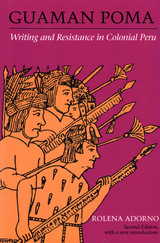 Guaman Poma: Writing and Resistance in Colonial Peru
By Rolena Adorno
University of Texas Press, 2000 In the midst of native people's discontent following Spanish conquest, a native Andean born after the fall of the Incas took up the pen to protest Spanish rule. Felipe Guaman Poma de Ayala wrote his Nueva corónica y buen gobierno to inform Philip III of Spain about the evils of colonialism and the need for governmental and societal reform. By examining Guaman Poma's verbal and visual engagement with the institutions of Western art and culture, Rolena Adorno shows how he performed a comprehensive critique of the colonialist discourse of religion, political theory, and history. She argues that Guaman Poma's work chronicles the emergence of a uniquely Latin American voice, characterized by the articulation of literary art and politics. Following the initial appearance of Guaman Poma: Writing and Resistance in Colonial Peru, the 1990s witnessed the creation of a range of new studies that underscore the key role of the Nueva corónica y buen gobierno in facilitating our understanding of the Andean and Spanish colonial pasts. At the same time, the documentary record testifying to Guaman Poma's life and work has expanded dramatically, thanks to the publication of long-known but previously inaccessible drawings and documents. In a new, lengthy introduction to this second edition, Adorno shows how recent scholarship from a variety of disciplinary perspectives sheds new light on Guaman Poma and his work, and she offers an important new assessment of his biography in relation to the creation of the Nueva corónica y buen gobierno.
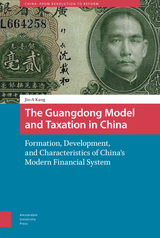 The Guangdong Model and Taxation in China: Formation, Development, and Characteristics of China's Modern Financial System
Jin-A Kang
Amsterdam University Press, 2022 This book explores the formation, development, and characteristics of modern China's finance, focusing especially on Guangdong province as a case study to illustrate both the macro-level trends and the micro-level reality. The chronological range of this book is mainly from the late Qing period to the early Republican Era ending in 1937, when the full-scale Second Sino-Japanese War broke out. After the concept of modern finance was introduced to China for the first time in the late Qing period, the efforts to build modern finance continued in the Republican Era both nationally and locally. But this process was interrupted by the outbreak of the war against Japan in 1937 and, having been derailed, did not subsequently recover due to the subsequent civil war between the Kuomintang and the Chinese Communist Party. This interrupted process of financial modernization was resumed with Reform and Opening-up, launched in 1978. Therefore, in order to illustrate the structural transformation and persistent characteristics of China’s fiscal system, this book also includes discussions of the early Qing period and current Chinese finance.
 The Guantanamo Files: The Stories of the 774 Detainees in America's Illegal Prison
Andy Worthington
Pluto Press, 2007 In 2006, four years after the illegal prison in Guantánamo Bay opened, the Pentagon finally released the names of the 773 men held there, as well as 7,000 pages of transcripts from tribunals assessing their status as 'enemy combatants'. Andy Worthington is the only person to have analysed every page of these transcripts and this book reveals the stories of all those imprisoned in Guantanamo.
Deprived of the safeguards of the Geneva Conventions, and, for the most part, sold to the Americans by their allies in Afghanistan and Pakistan, the detainees have struggled for five years to have their stories heard. Looking in detail at the circumstances of their capture, and at the coercive interrogations and unsubstantiated allegations that have been used to justify their detention. Stories of torture in Afghanistan and Guantanamo are uncovered, as well as new information about the process of 'extraordinary rendition' that underpins the US administration's 'war on terror'.
Who will speak for the 773 men who have been held in Guantanamo? This passionate and brilliantly detailed book brings their stories to the world for the first time.
 Guaranteed Annual Wages
Jack Chernick and George Hellickson
University of Minnesota Press, 1945
Guaranteed Annual Wages was first published in 1945. Minnesota Archive Editions uses digital technology to make long-unavailable books once again accessible, and are published unaltered from the original University of Minnesota Press editions.
One of the last acts of President Roosevelt was to order a study of the guaranteed annual wage. The question that naturally arises in the mind of every thinking person is—what is the annual wage? What can it do for me? Is it economically feasible? Is it socially desirable? Will it work for the entire industrial structure as well as for individual firms within an industry?
Chernick and Hellickson in Guaranteed Annual Wages present an unbiased report showing to what extent the guaranteed annual wage contributes a solution to intermittent employment and indirectly to other forms of unemployment. Labor has followed the initiative of forward looking management in advocating guaranteed annual wages. Economists regard the guaranteed annual wage as a step toward full employment and the mass purchasing power so
essential to keep the wheels of industry turning.
This book is the first substantial popular treatment of the annual wage in operation -- its effect upon the community, and how it relieves not only the wage earner but the homemaker from worry over the essentials of food, clothing, and shelter.
Chernick and Hellickson present the theory that the traditional wage system is obsolete and that, for the well-being of individuals and for society as a whole, it must be supplanted by a wage system that will make the operation of the economy more stable -- and that although the annual wage may not be a perfect system, it deserves a fair trial until something better is conceived.
 Guarded by Two Jaguars: A Catholic Parish Divided by Language and Faith
Eric Hoenes del Pinal
University of Arizona Press, 2022 In communities in and around Cobán, Guatemala, a small but steadily growing number of members of the Q’eqchi’ Maya Roman Catholic parish of San Felipe began self-identifying as members of the Catholic Charismatic Renewal. Their communities dramatically split as mainstream and charismatic Catholic parishioners who had been co-congregants came to view each other as religiously distinct and problematic “others.”
In Guarded by Two Jaguars, Eric Hoenes del Pinal tells the story of this dramatic split and in so doing addresses the role that language and gesture have played in the construction of religious identity. Drawing on a range of methods from linguistic and cultural anthropology, the author examines how the introduction of the Catholic Charismatic Renewal movement in the parish produced a series of debates between parishioners that illustrate the fundamentally polyvocal nature of Catholic Christianity. This work examines how intergroup differences are produced through dialogue, contestation, and critique. It shows how people’s religious affiliations are articulated not in isolation but through interaction with each other.
Although members of these two congregations are otherwise socially similar, their distinct interpretations of how to be a “good Catholic” led them to adopt significantly different norms of verbal and nonverbal communication. These differences became the idiom through which the two groups contested the meaning of being Catholic and Indigenous in contemporary Guatemala, addressing larger questions about social and religious change.
The Guardian Angel Diary
Grant Schnarr
Swedenborg Foundation Publishers, 2011
Minister Grant Schnarr draws together the voices of young people he has met and counseled to weave a fictional tale of love, fear, and hope.
Sixteen-year-old Nicole Bealart is a typical teenager, living in a world of homework, school plays, and her own imagination—a world turned upside-down when she is diagnosed with brain cancer. Her father, who never dealt with her mother’s death from lung cancer six years before, begins drinking heavily; she is left trying to care for herself and her younger brother, Luke, while juggling school and her growing fears about her own mortality. Seeking answers, she begins writing a journal that becomes a vehicle for her to communicate with her guardian angel. As she approaches the date of an operation that may either save her life or end it, her inner and outer worlds collide and combine to give her a new understanding of family, friendship, and life.
 Guardian of a Dying Flame: Śāriputra (c. 1335–1426) and the End of Late Indian Buddhism
Arthur McKeown
Harvard University Press Arthur McKeown presents the first full-length analysis of the continuation of Buddhism in India after the thirteenth century. This study describes later Indian Buddhism through a detailed examination of the life of Śāriputra (c. 1335–1426), the last known abbot of the Bodhgayā Mahāvihāra, whose very presence extends Indian Buddhism by two centuries. This work also provides a view into the legacy of Indian Buddhism in fifteenth-century Nepal, Tibet, and China. McKeown follows Śāriputra’s travels and works throughout pan-Buddhist Asia, from restoring the Swayambhunātha caitya in Nepal and establishing tantric lineages in Tibet to overseeing the rebuilding of the Mahābodhi temple in Ming Dynasty Beijing.
McKeown centers his examination on newly revealed Tibetan and Chinese biographies of Śāriputra, as well as looking at a collection of historical documents in Sanskrit, Tibetan, and Chinese. These sources point to a fundamental reconsideration of later Indian Buddhism, its relationship with Brahmanism and Islam, and its enduring importance throughout Central, East, and Southeast Asia.
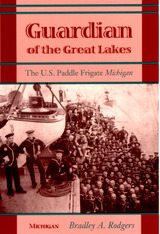 Guardian of the Great Lakes: The U.S. Paddle Frigate Michigan
Bradley A. Rodgers
University of Michigan Press, 1996 Guardian of the Great Lakes is the saga of the USS Michigan, an archetype iron-hulled war steamer launched in 1843. Its mission was to patrol the ofttimes volatile Great Lakes region, quelling port town civil disturbances, while at the same time rescuing both Canadian and American ships in distress. The Michigan found itself unavoidably attracted to calamity, leaving in its wake a collection of eyewitness accounts to these momentous yet largely forgotten occurences. Incidents such as the timber rebellion of the 1850s, which occurred in Wisconsin, Illinois, and Michigan, are documented for the first time. Other episodes such as the assassination of "king" Strang on Beaver Island and the destruction of the community there are studied under the light of newly discovered sources. Still other chapters reveal the chaos created by the Civil War on the lakes, the destructive mining strikes of Michigan's Upper Peninsula, and the tragic, bloody, Fenian invasion of Canada. Between major calamities lay the vagaries of maritime life on the Great Lakes detailed in the records of the Michigan's crew. From their social and community life in Erie, Pennsylvania to storms, shipwrecks, and sickness, the records kept by the men and officers of the USS Michigan have helped to produce in this book an accurate and detailed narrative of naval and maritime life on the Great Lakes during this important period. Bradley A. Rodgers is Assistant Professor, Program in Maritime History and Nautical Archaeology, East Carolina University.
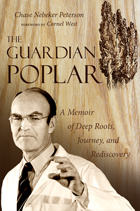 The Guardian Poplar: A Memoir of Deep Roots, Journey, and Rediscovery
Chase Nebeker Peterson
University of Utah Press, 2012 When Barney Clark received the Jarvik-7 artificial heart in 1983 and Cold Fusion came under fire in 1989, Chase Peterson, as the University of Utah president, was inevitably pulled into these campus events. While these episodes may be the best known in Peterson’s professional history, they are certainly not the only stories that make his autobiography worth reading. The Guardian Poplar tells of a man who grew up in small-town Utah and carried his pioneer and Mormon heritage to a New England prep school and later to Harvard. He then returned to Utah as a doctor, but unexpectedly found himself back at Harvard as its dean of admissions, handling issues such as the Vietnam War and racial and gender reform. The book explains how Peterson’s home state recruited him back to become an administrator at the University of Utah and how he would eventually become the university president, taking on new issues and challenges. Peterson recounts these years by drawing on anecdotes that recall the people he served and the moments that brought his life meaning. This autobiography is a compelling account of how Peterson has managed to balance family and career, handle the tensions that have arisen between his faith and his scientific training, and remain solid in the face of his newest challenge—cancer. The book’s engaging prose and honest reflections are sure to intrigue and inspire readers who know the man well, as well as those readers who simply want to know a man who can be described as dedicated, faithful, hardworking, and hopeful about the future. “When I first met Chase Peterson as a Harvard freshman—along with our joint friend and brother David Evans—something deeply touched me. It was not only his sincere smile and open embrace but also a sense that here was a kind and courageous man comfortable in his own skin, secure in who he was yet eager to encounter new persons, new experiences, and new challenges. . . . He was from Utah but in New England, a Mormon in old Harvard, and a medical doctor in the deanship of admissions. Little did I know that his journey would enhance and enrich my own—owing to his critical allegiance to his family, his faith, his friends, and to his citizenship of country and world. His prophetic witness at Harvard in the turbulent ‘60s and ‘70s, his promotion of black priesthood in the Mormon church, his support of antiapartheid protests in the ‘80s, and his steadfast defense of academic freedom in the Cold Fusion controversy in the early ‘90s all express his quiet and humble effort to be true to himself—a self grounded in, but
not limited by, a rich Mormon tradition.”—from the foreword by Cornel West
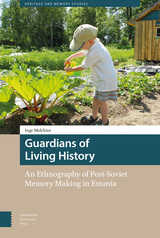 Guardians of Living History: An Ethnography of Post-Soviet Memory Making in Estonia
Inge Melchior
Amsterdam University Press, 2020 Guardians of Living History: An Ethnography of Post-Soviet Memory Making in Estonia interrogates how people living in a society with an extremely complicated, violent past, only a short history of independence, and a desire to belong to Europe engage with the past, both within their families and as members of a national community. In line with other scholarship on memory, this book shows that many Estonians desire an established collective story, as they live in a society where their national identity is quite regularly under threat. At the same time however, that same closure is perceived to pose a threat to the survival of Estonian culture and independence. Guardians of Living History provides an intimate insight into the lives of Estonians from the countryside, former deportees, young intellectuals, and memory activists, who all in their own ways act as guardians of a national history: a history which they wish to keep alive, apolitical, and as close to their family stories as possible.
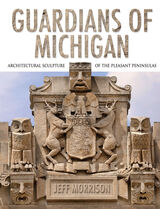 Guardians of Michigan: Architectural Sculpture of the Pleasant Peninsulas
Jeff Morrison
University of Michigan Press, 2022 Guardians of Michigan profiles the extraordinary architectural sculpture found in both the pleasant peninsulas of the Great Lakes State. Author Jeff Morrison spent years exploring Michigan’s largest cities and smallest towns, using telephoto photography to capture the sculptural details hidden from the naked eye, and researching the beautiful historic architecture he encountered. Organized alphabetically by city, each section documents the history and design of an individual building, accompanied by beautiful photos of the building and its unique ornamentation.
The buildings profiled in Guardians of Michigan range from county courthouses, churches, and government buildings constructed during the 1800s, to skyscrapers with intricate sculptural decoration too far above street level for passersby to see. As a result, the book highlights examples of Gothic, Romanesque Revival, Beaux Arts, as well as Art Deco and Art Moderne. Guardians of Michigan is a loving tribute to the architecture of the state, preserving forgotten stories and beautiful buildings for all readers to enjoy.
 Guardians of Power: The Myth of the Liberal Media
David Edwards and David Cromwell, Foreword by John Pilger
Pluto Press, 2005
"Guardians of Power ought to be required reading in every media college. It is the most important book about journalism I can remember."
- John Pilger
"Regular critical analysis of the media, filling crucial gaps and correcting the distortions of ideological prisms, has never been more important. Media Lens has performed a major public service by carrying out this task with energy, insight, and care."
- Noam Chomsky
"Media Lens is doing an outstanding job of pressing the mainstream media to at least follow their own stated principles and meet their public service obligations. [This is] fun as well as enlightening."
- Edward S. Herman
Can a corporate media system be expected to tell the truth about a world dominated by corporations?
Can newspapers, including the 'liberal' Guardian and the Independent, tell the truth about catastrophic climate change -- about its roots in mass consumerism and corporate obstructionism -- when they are themselves profit-oriented businesses dependent on advertisers for 75% of their revenues?
Can the BBC tell the truth about UK government crimes in Iraq when its senior managers are appointed by the government? Has anything fundamentally changed since BBC founder Lord Reith wrote of the establishment: "They know they can trust us not to be really impartial"?
Why did the British and American mass media fail to challenge even the most obvious government lies on Iraqi weapons of mass destruction before the invasion in March 2003? Why did the media ignore the claims of UN weapons inspectors that Iraq had been 90-95% "fundamentally disarmed" as early as 1998?
This book answers these questions, and more.
Since July 2001, Media Lens has encouraged thousands of readers to email senior editors and journalists, challenging them to account for their distorted reporting on Iraq, Afghanistan, Kosovo, Haiti, East Timor, climate change, Western crimes in Central America, and much more. The responses -- often surprising, sometimes outrageous -- reveal the arrogance, unaccountability and servility to power of even our most respected media.
Guardians of the Flutes, Volume 1: Idioms of Masculinity
Gilbert Herdt
University of Chicago Press, 1994 In the first systematic documentation of New Guinea rituals of manhood, Gilbert Herdt places the homosexual customs of the Sambia in their ecological and ideological contexts while exploring what they mean to the individuals who practice them. Raising a host of issues concerning gender identity, hostility between the sexes, and the relationships between myth, culture, and personal experience, Herdt provides a vivid and convincing portrait of how Sambia men experience their sexual development.
 Guardians Of The Nation
Glen Biglaiser
University of Notre Dame Press, 2002 "Glen Biglaiser has written one of the most intelligent books on the role of ideas that I have come across in years. Not only is the book theoretically clever, but it also is empirically sound . . . this book will make a substantial contribution to comparative politics and sociology." --Anthony Gill, University of Washington
"Guardians of the Nation? is a particularly important contribution to comparative politics because it forms a well-constructed theory that helps explain policy choice. By recounting the story of economists and their development in Latin America, Biglaiser provides a unique and previously unexplored explanation to the debate over policy outcomes with respect to the adoption of neoliberal economic measures." --David Brown, Rice University
Central to the question of how to promote economic growth in Latin America is the role different types of regimes play in determining economic performance. Guardians of the Nation? challenges conventional wisdom regarding the expected advantages of military rule for economic growth. Glen Biglaiser explains why many military regimes in Latin America have not performed noticeably better than their democratic counterparts.
Biglaiser argues that economic policy making under military regimes is essentially an unintended by-product of the military's strategy to retain power. Using this premise, he examines the economic performance of regimes in Argentina, Chile, and Uruguay. Biglaiser shows that the appointment of neoliberal economists occurred not because military rulers possessed inherent interest in following market-oriented policies, but because they saw the appointments as a way to solidify their power.
GLEN BIGLAISER is an assistant professor of political science at Bowling Green State University.
----------
"Glen Biglaiser has written one of the most intelligent books on the role of ideas that I have come across in years. Not only is the book theoretically clever, but it also is empirically sound . . . this book will make a substantial contribution to comparative politics and sociology." --Anthony Gill, University of Washington
"Guardians of the Nation? is a particularly important contribution to comparative politics because it forms a well-constructed theory that helps explain policy choice. By recounting the story of economists and their development in Latin America, Biglaiser provides a unique and previously unexplored explanation to the debate over policy outcomes with respect to the adoption of neoliberal economic measures." --David Brown, Rice University
Central to the question of how to promote economic growth in Latin America is the role different types of regimes play in determining economic performance. Guardians of the Nation? challenges conventional wisdom regarding the expected advantages of military rule for economic growth. Glen Biglaiser explains why many military regimes in Latin America have not performed noticeably better than their democratic counterparts.
Biglaiser argues that economic policy making under military regimes is essentially an unintended by-product of the military's strategy to retain power. Using this premise, he examines the economic performance of regimes in Argentina, Chile, and Uruguay. Biglaiser shows that the appointment of neoliberal economists occurred not because military rulers possessed inherent interest in following market-oriented policies, but because they saw the appointments as a way to solidify their power.
GLEN BIGLAISER is an assistant professor of political science at Bowling Green State University.
 Guardians of the Nation: Activists on the Language Frontiers of Imperial Austria
Pieter M. Judson
Harvard University Press, 2007 In the decades leading up to World War I, nationalist activists in imperial Austria labored to transform linguistically mixed rural regions into politically charged language frontiers. They hoped to remake local populations into polarized peoples and their villages into focal points of the political conflict that dominated the Habsburg Empire. But they often found bilingual inhabitants accustomed to cultural mixing who were stubbornly indifferent to identifying with only one group.
Using examples from several regions, including Bohemia and Styria, Pieter Judson traces the struggle to consolidate the loyalty of local populations for nationalist causes. Whether German, Czech, Italian, or Slovene, the nationalists faced similar and unexpected difficulties in their struggle to make nationalism relevant to local concerns and to bind people permanently to one side. Judson examines the various strategies of the nationalist activists, from the founding of minority language schools to the importation of colonists from other regions, from projects to modernize rural economies to the creation of a tourism industry. By 1914, they succeeded in projecting a public perception of nationalist frontiers, but largely failed to nationalize the populations.
Guardians of the Nation offers a provocative challenge to standard accounts of the march of nationalism in modern Europe.
|
|

